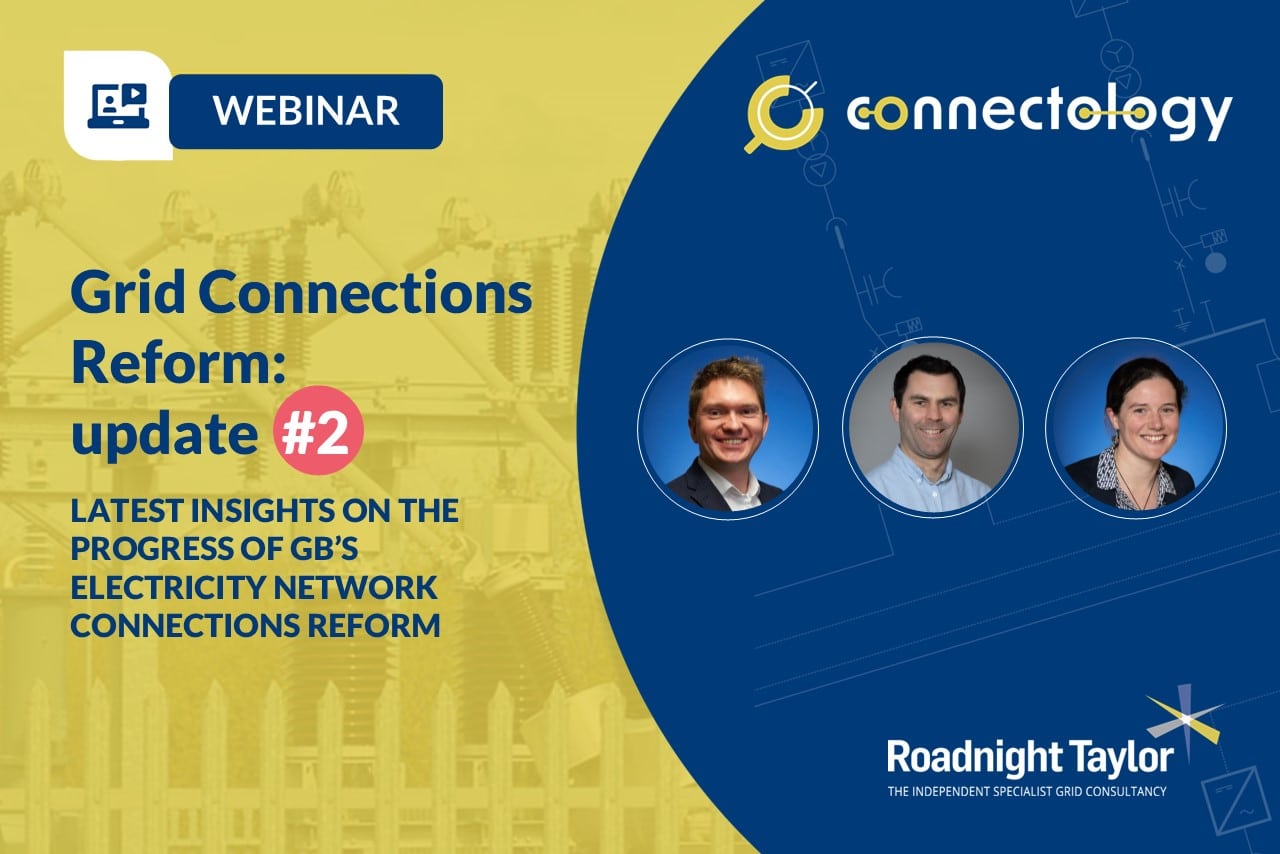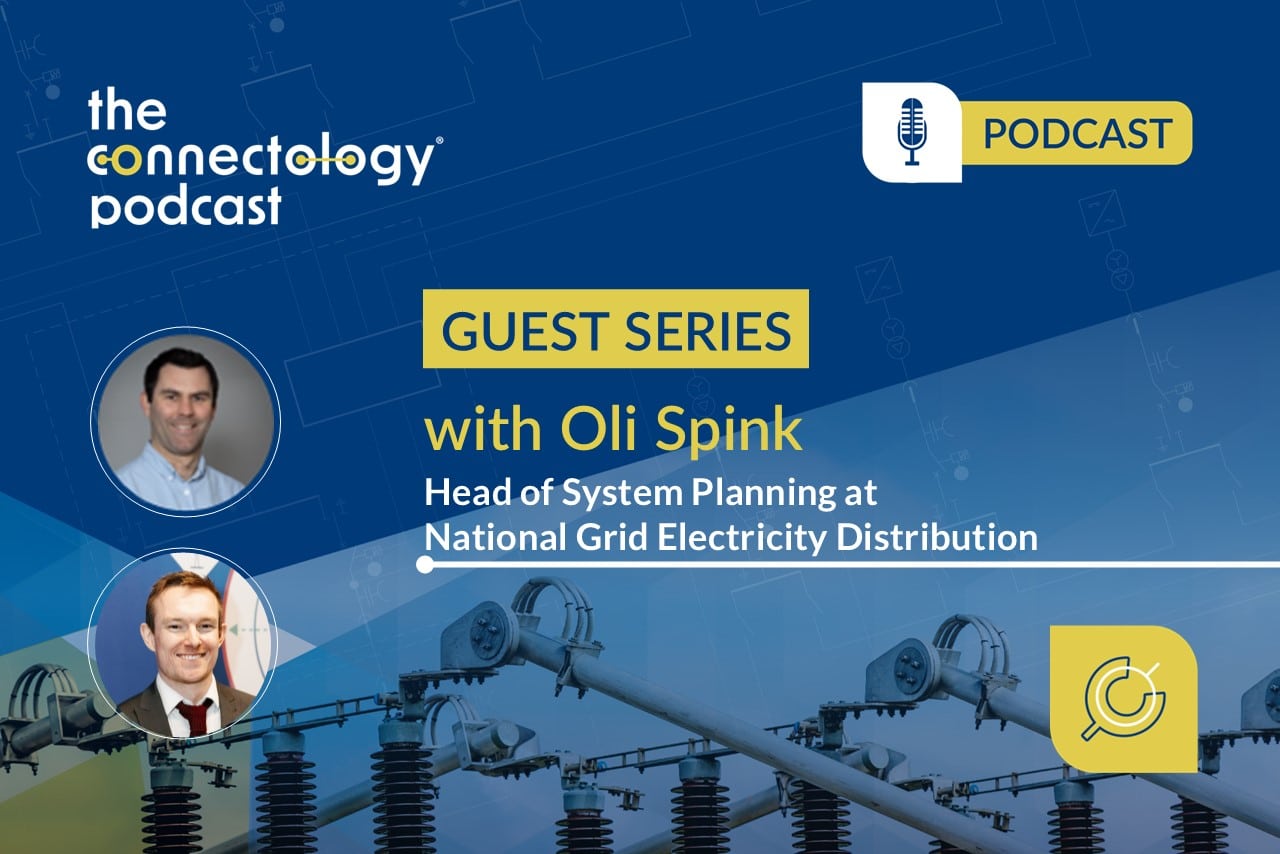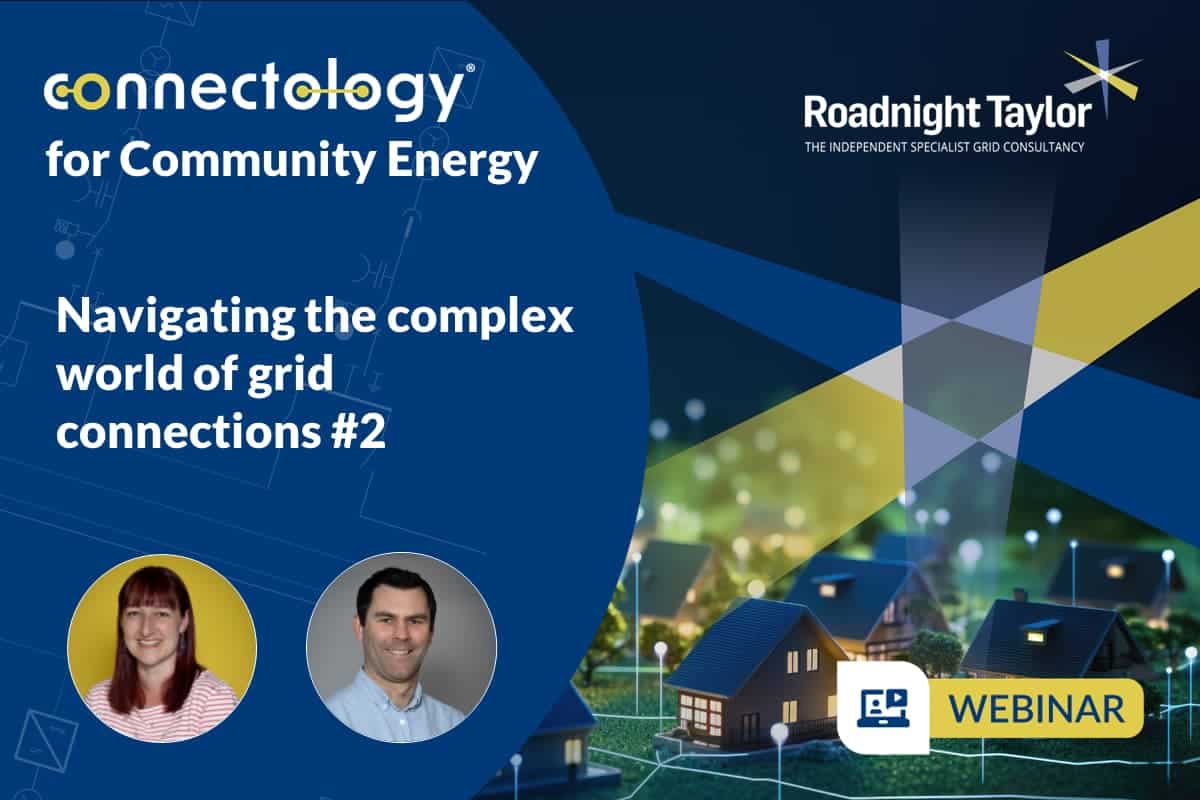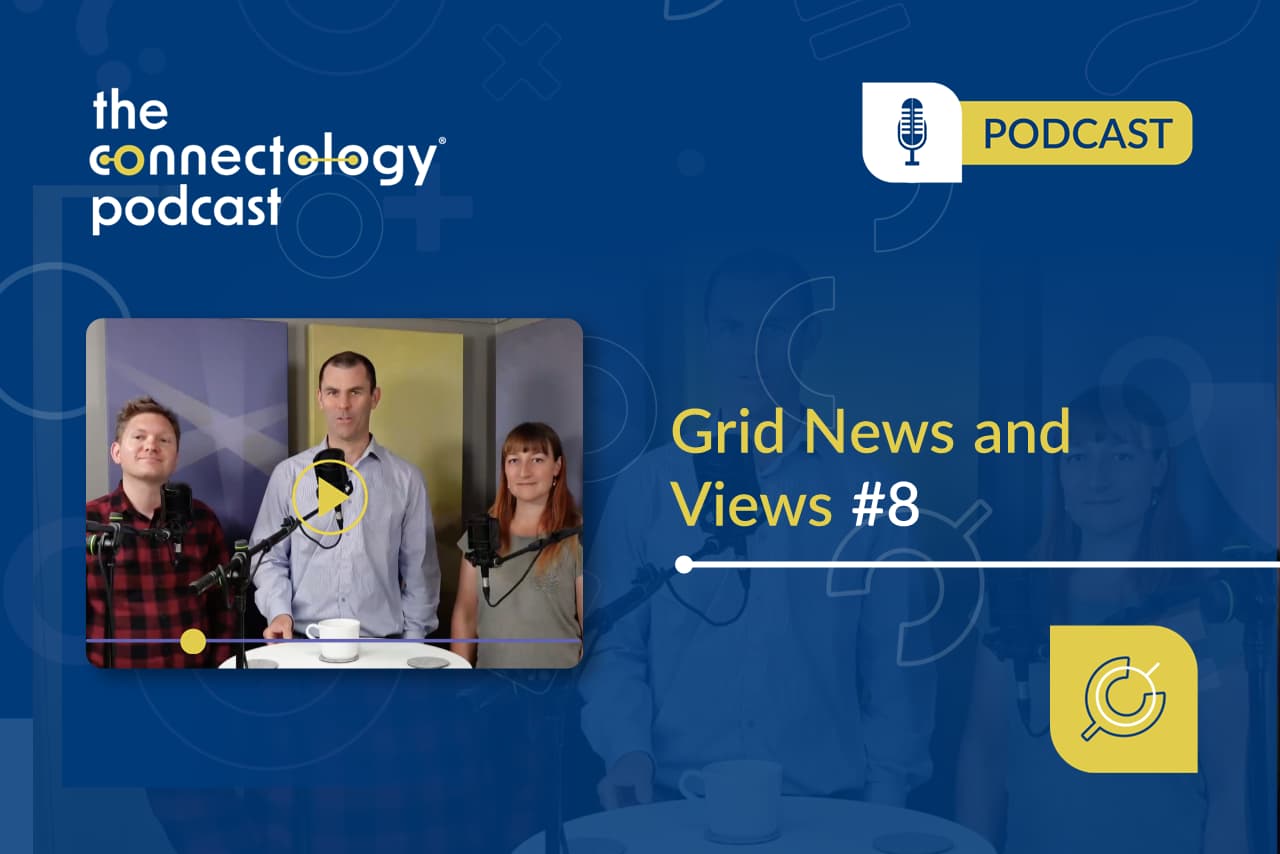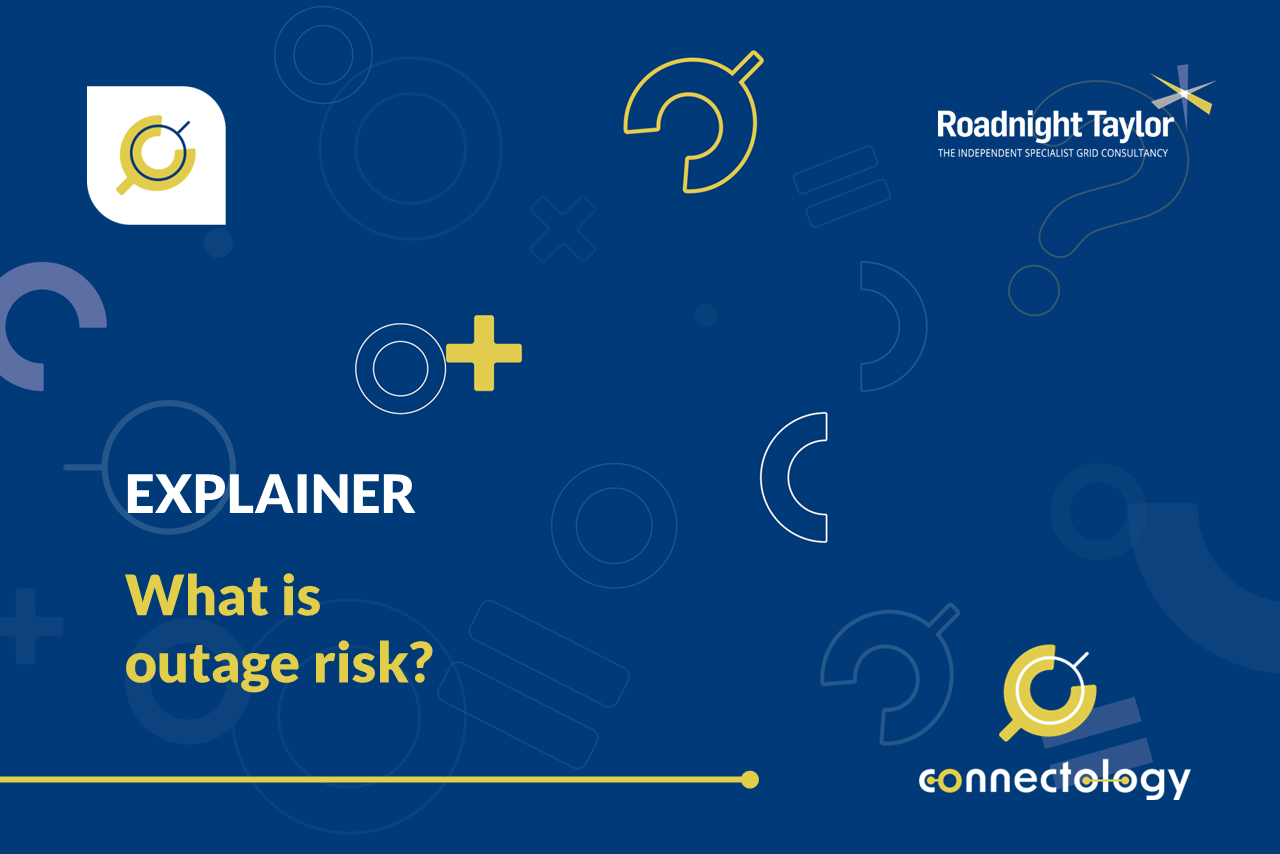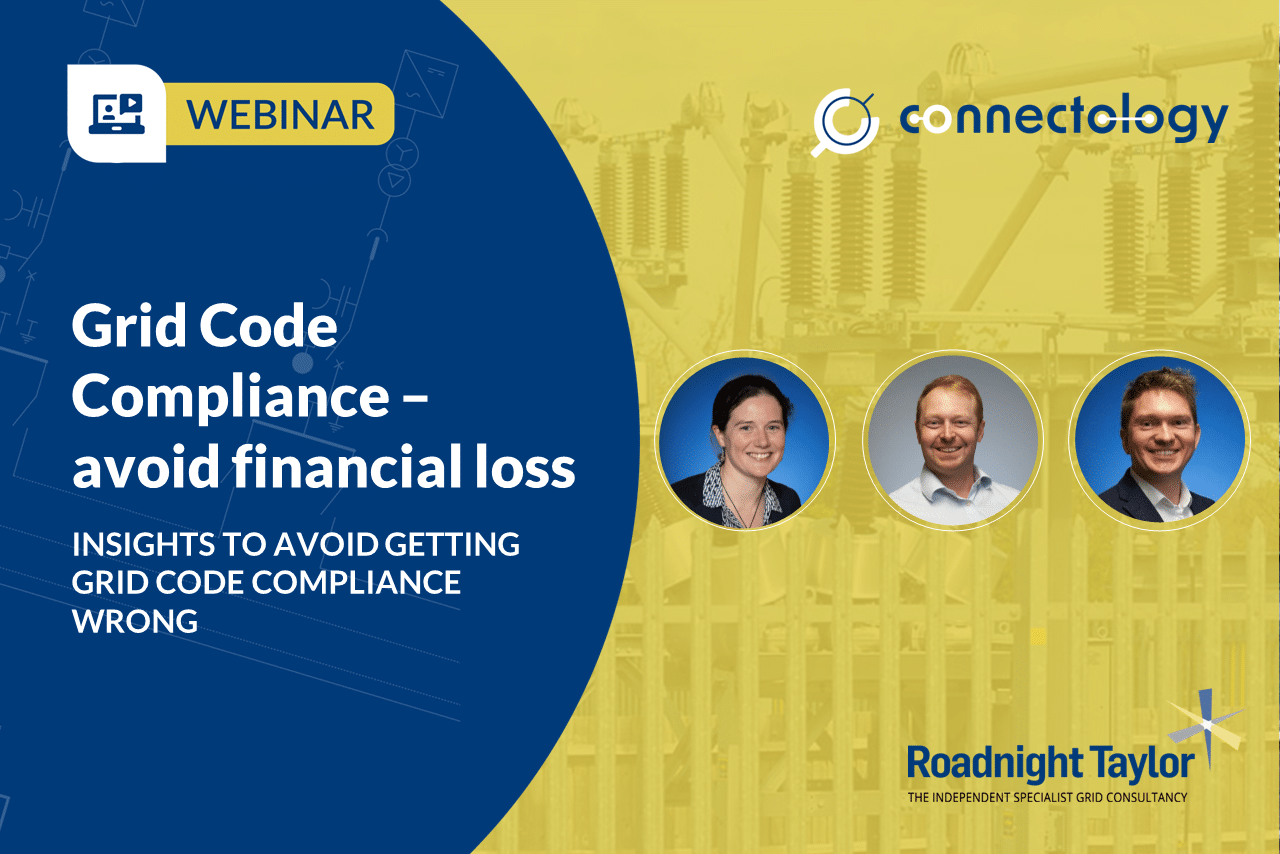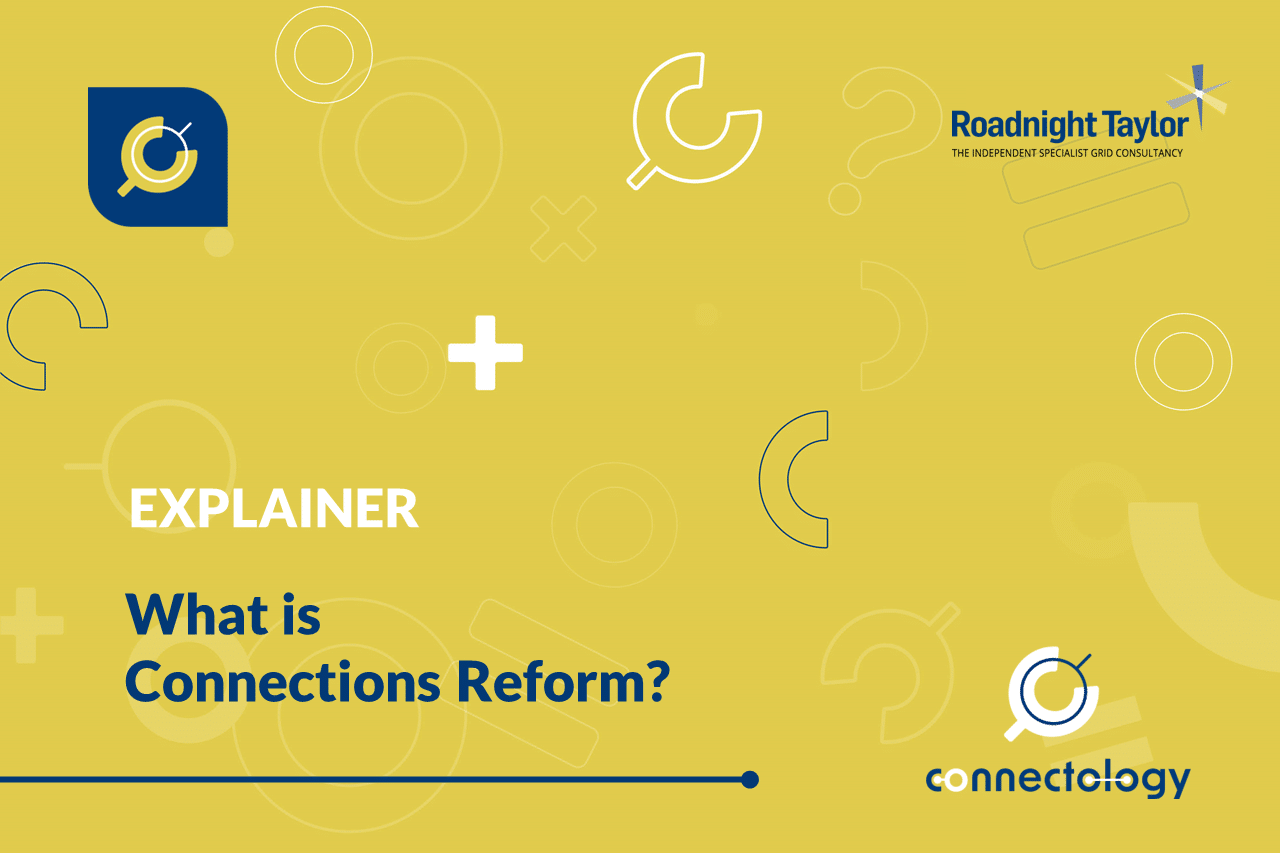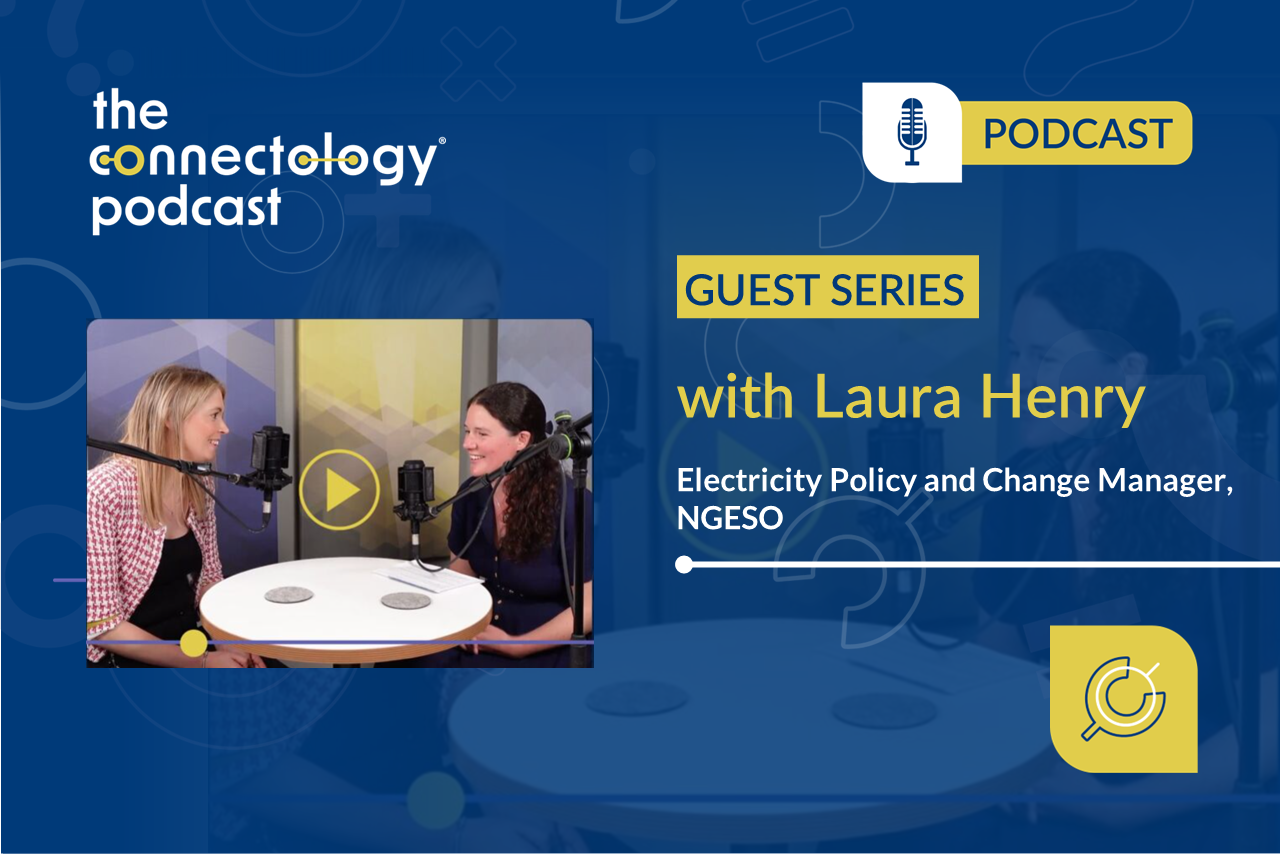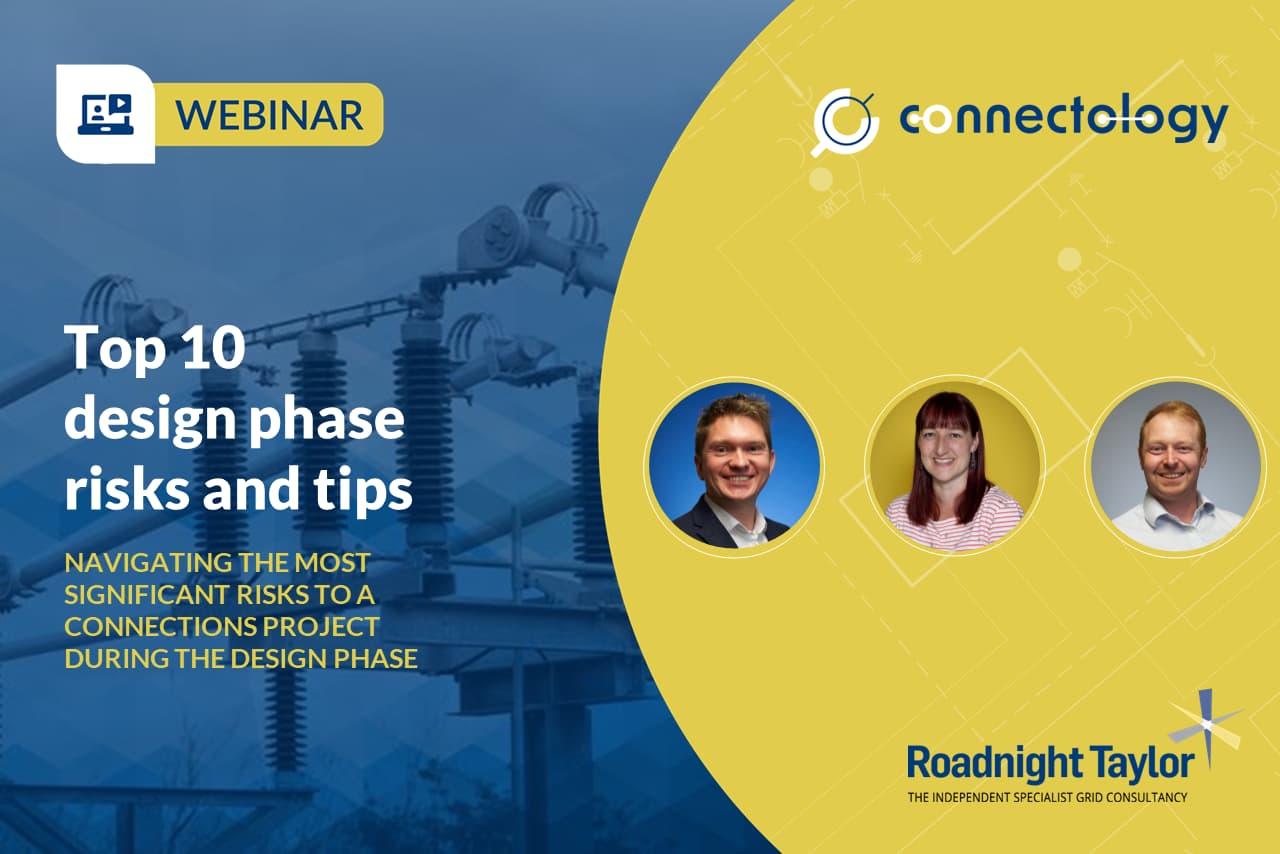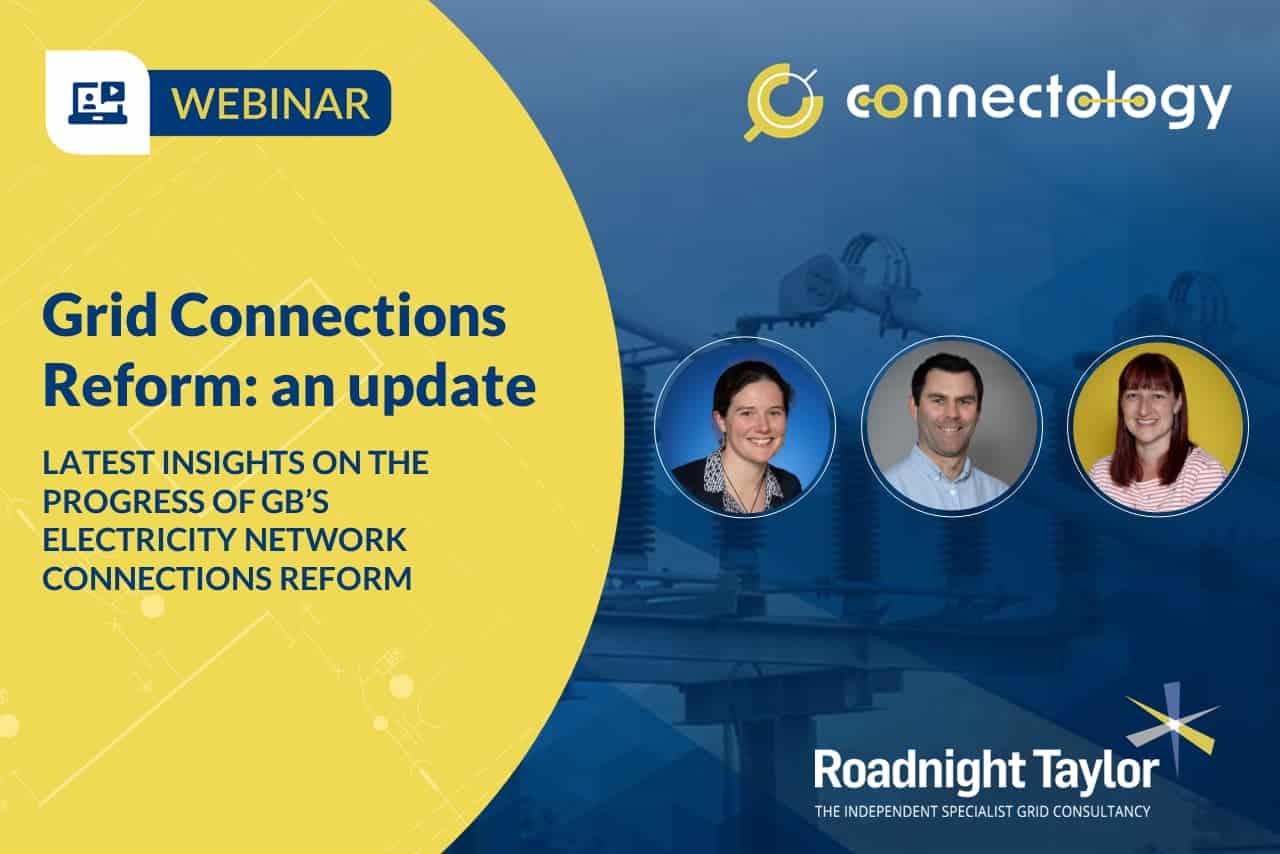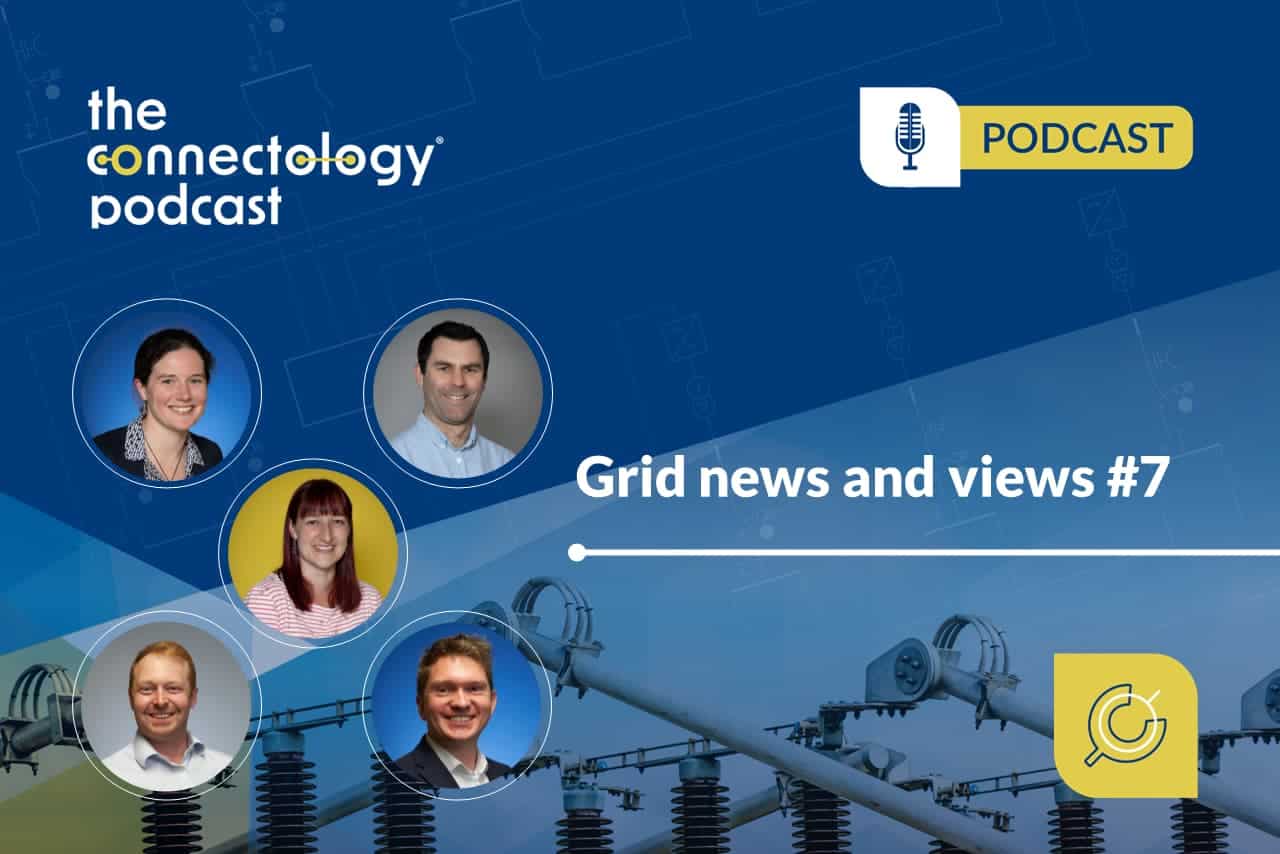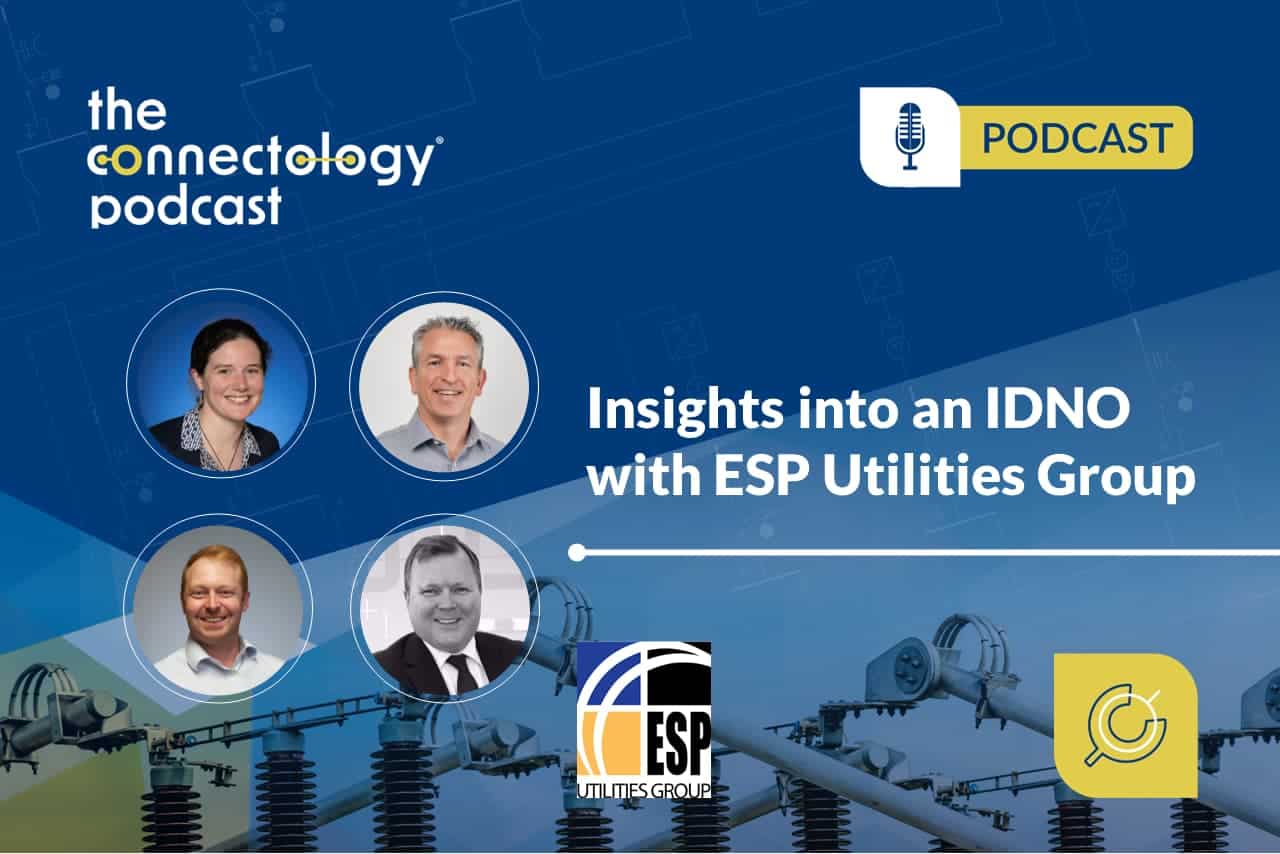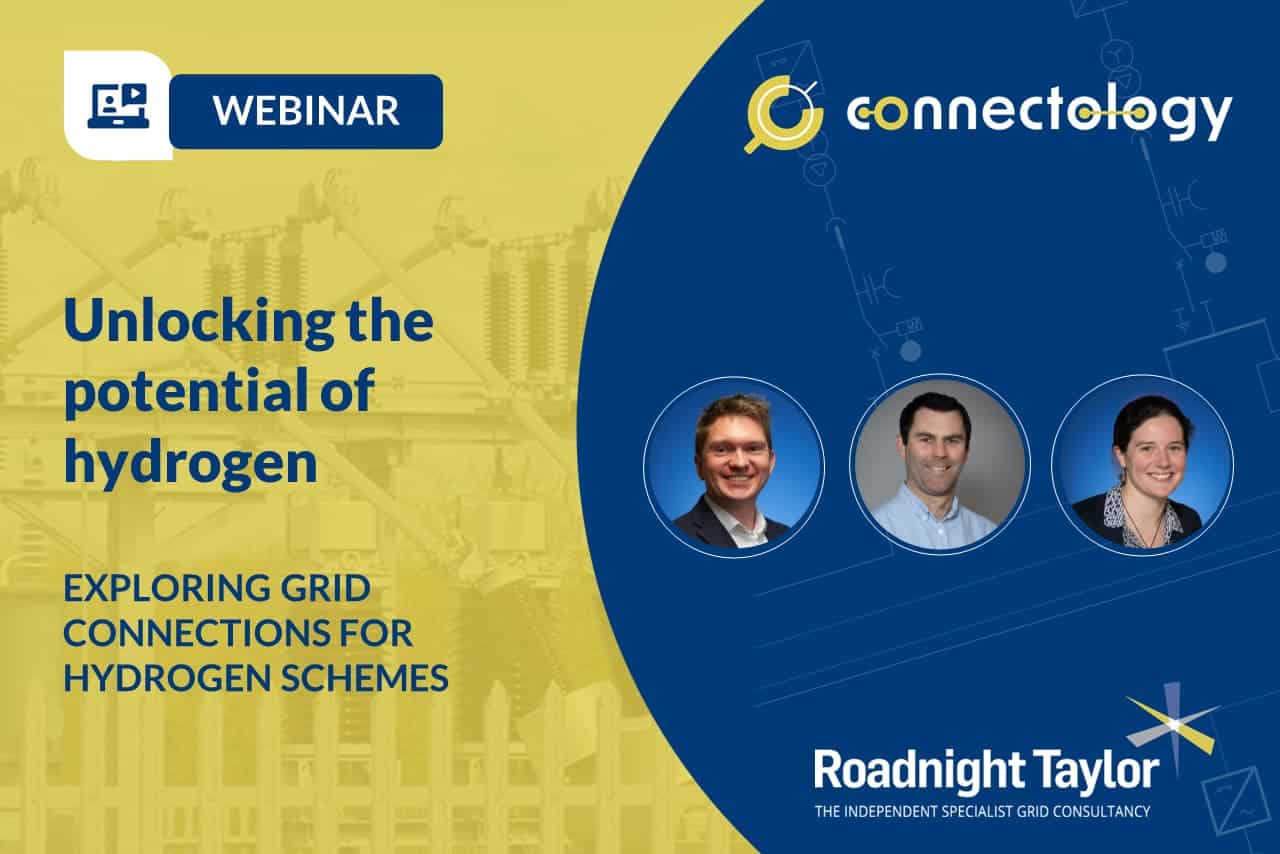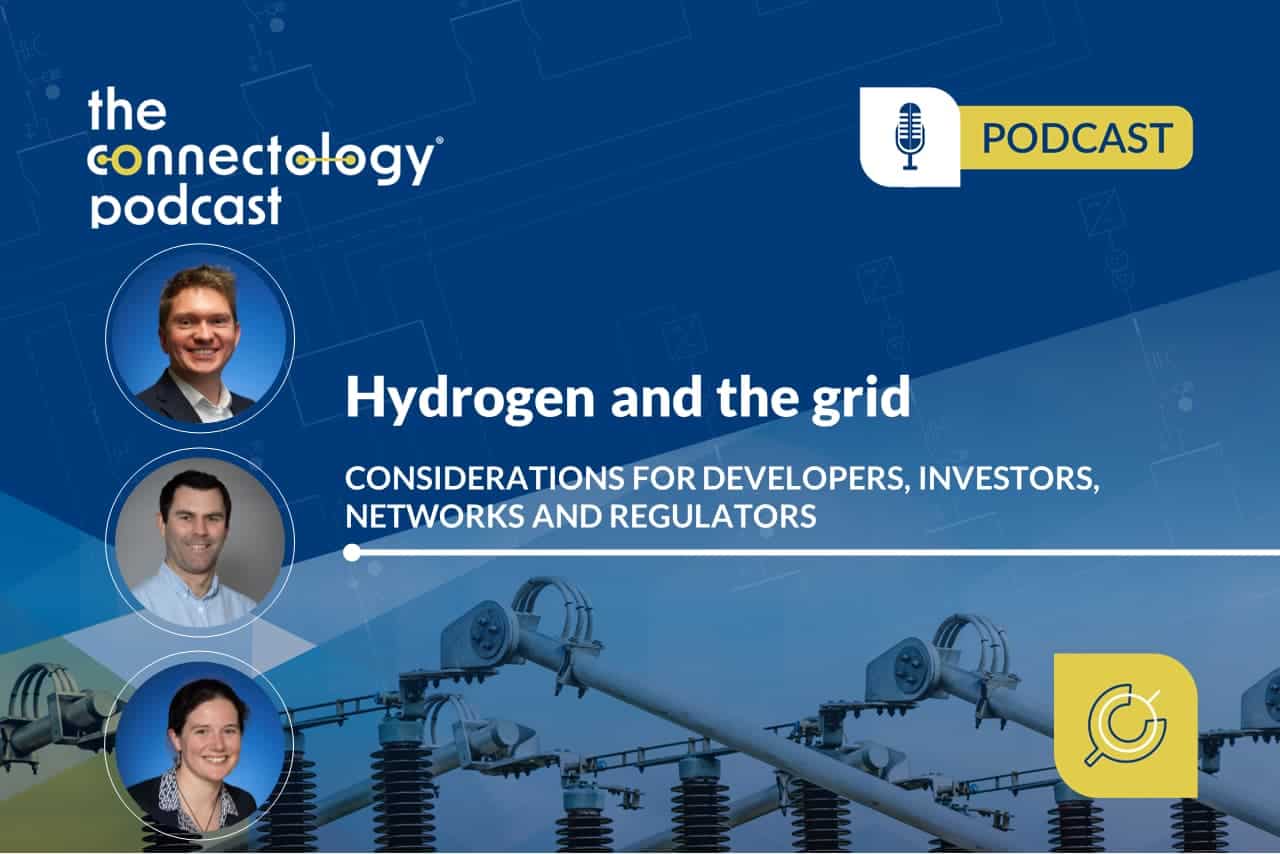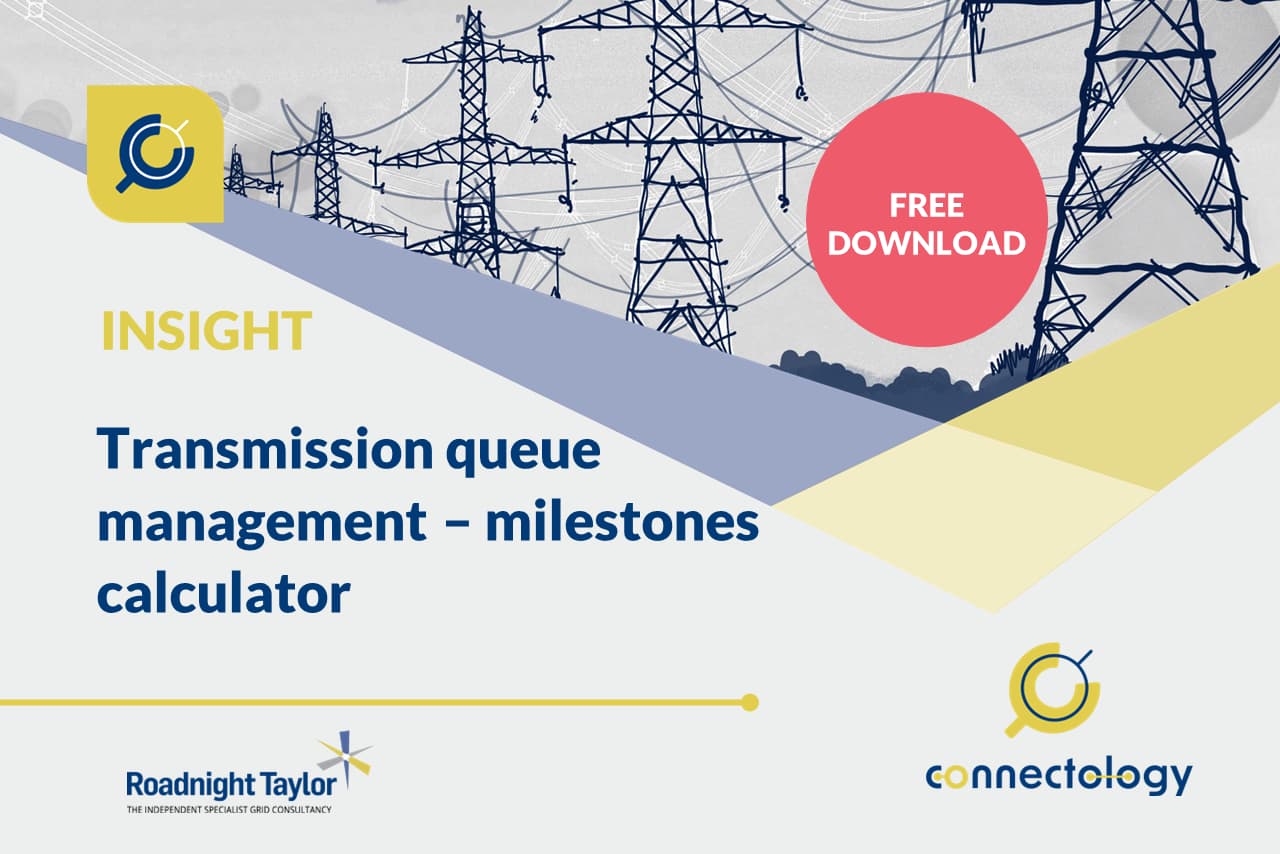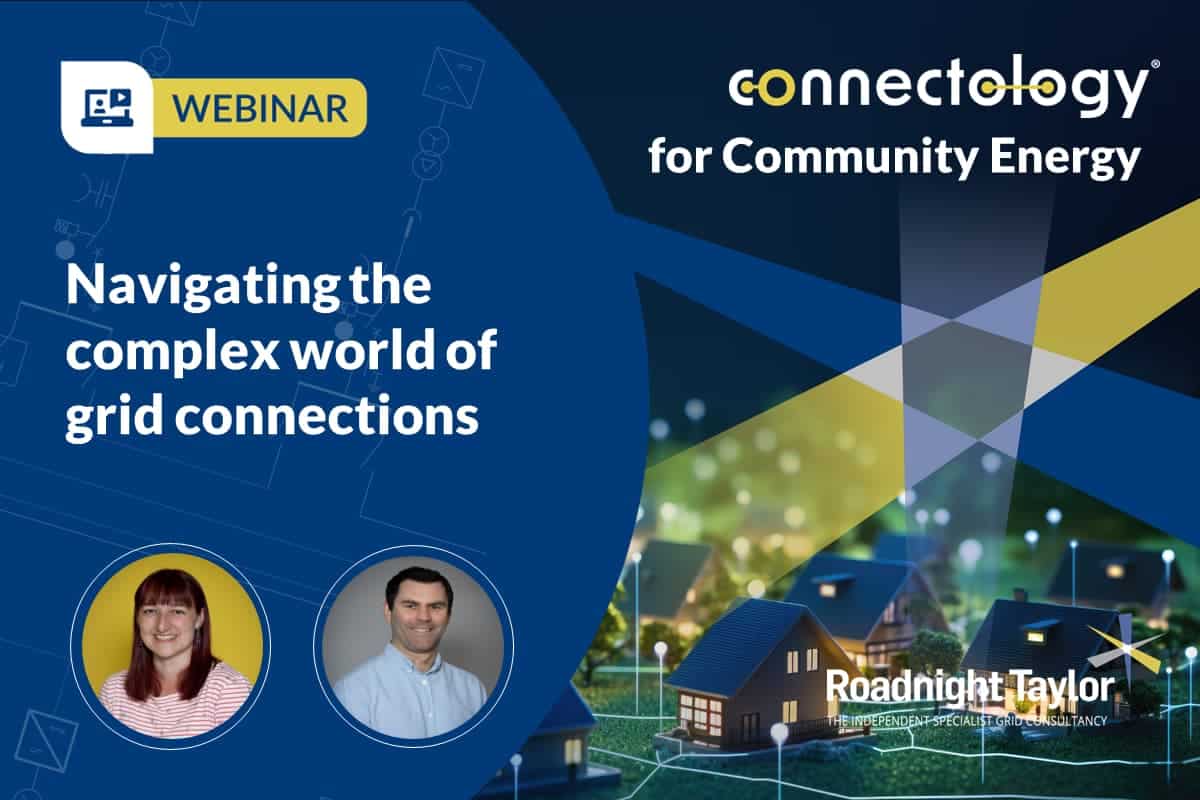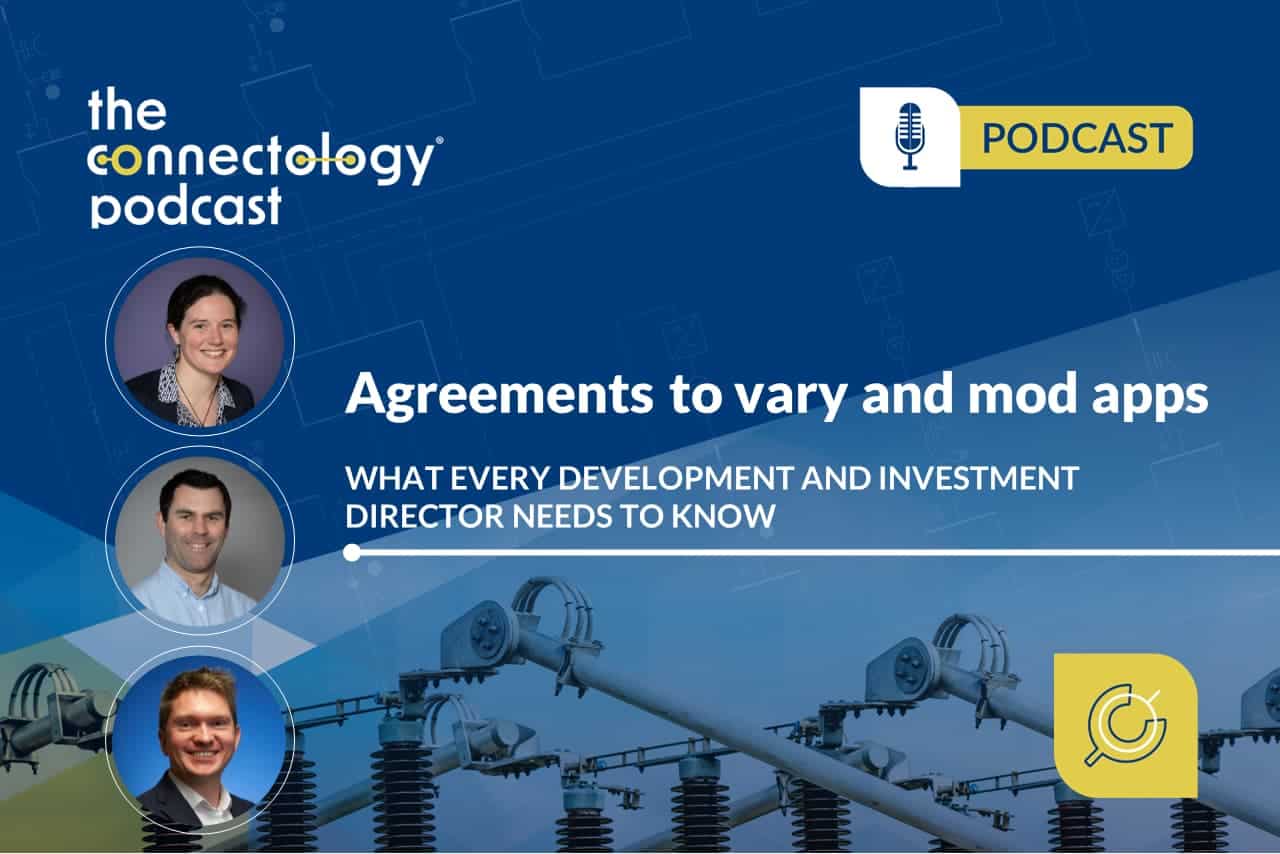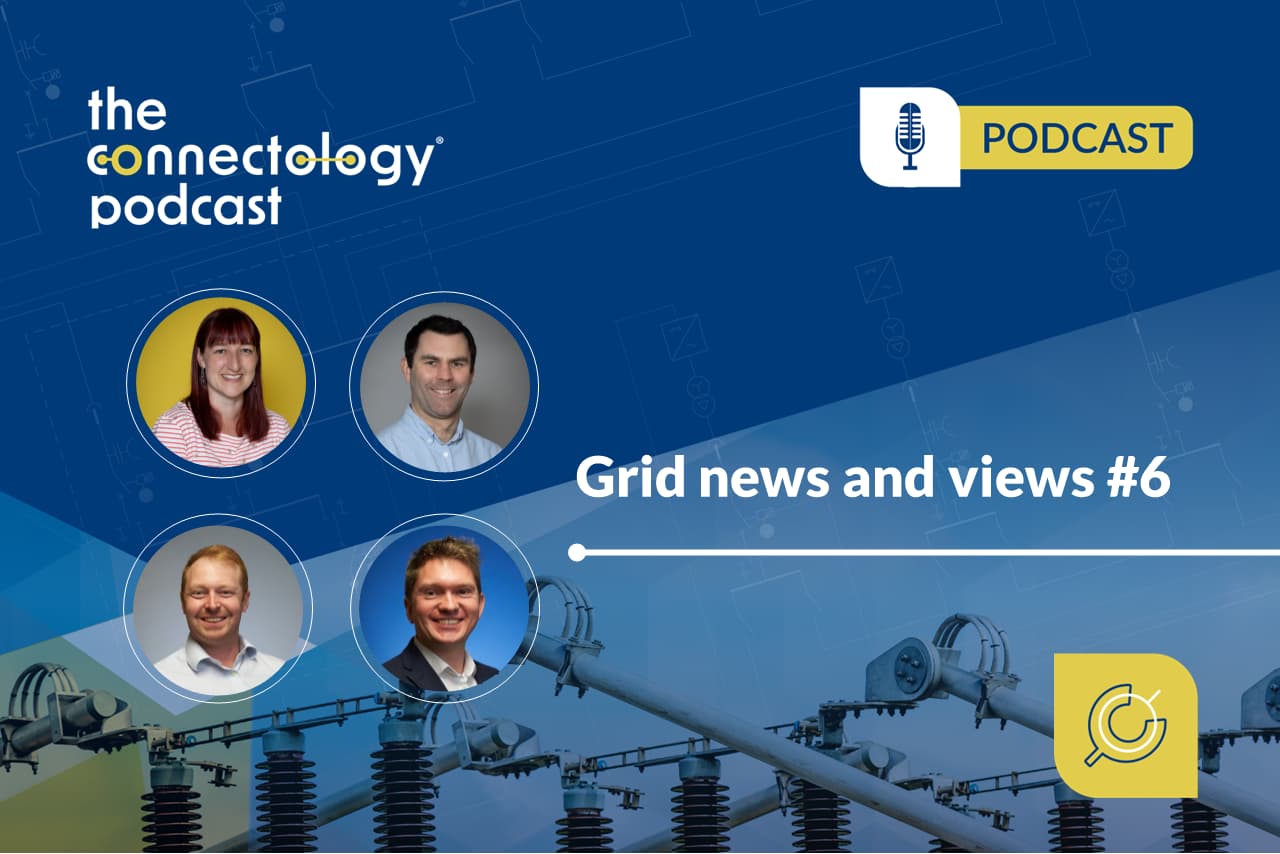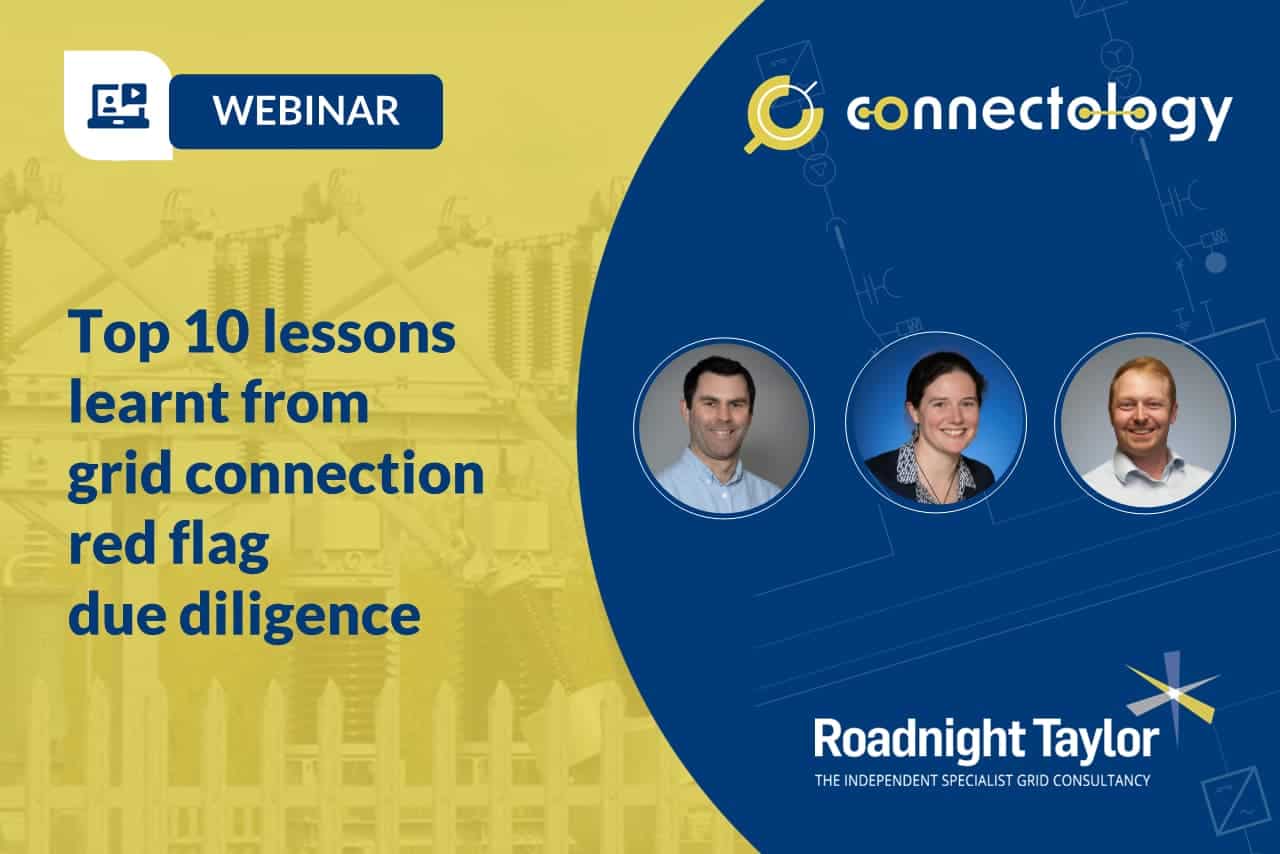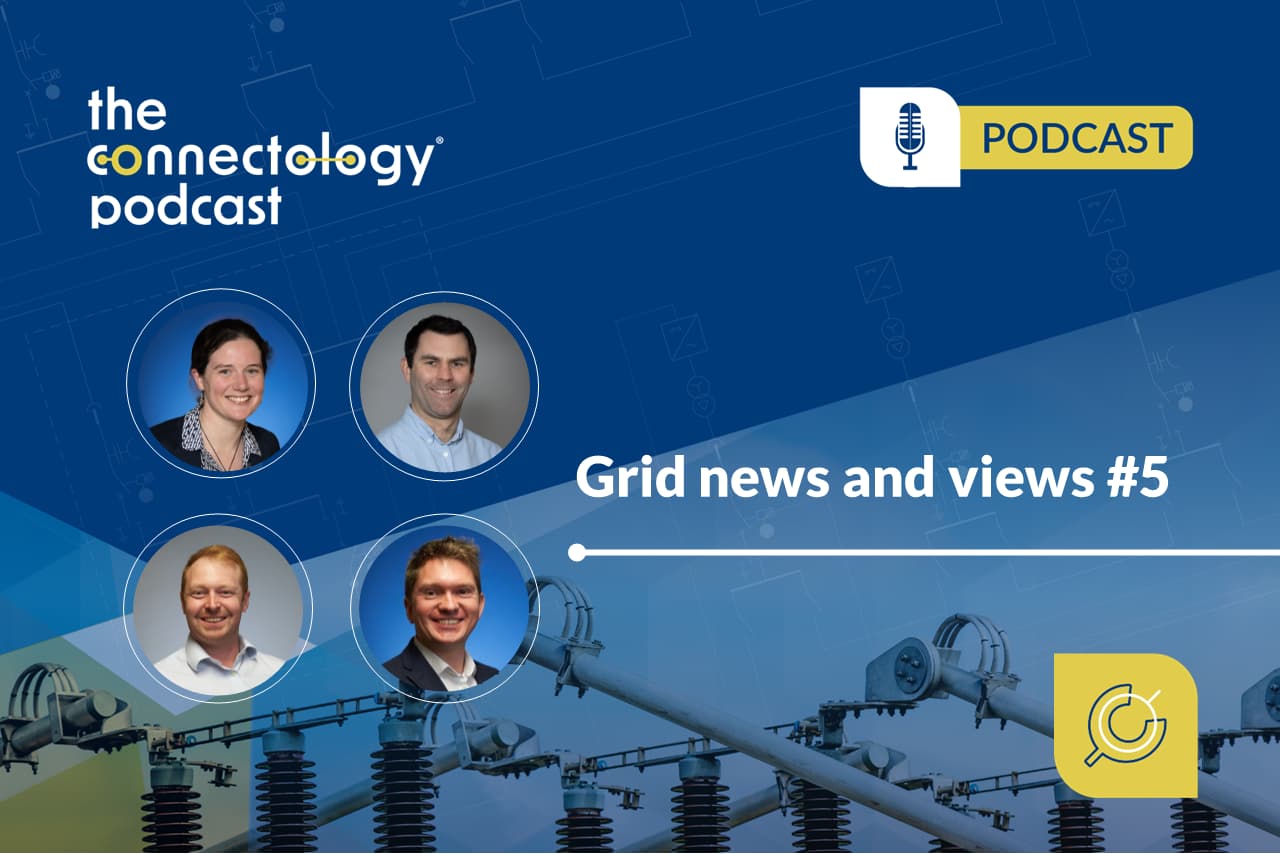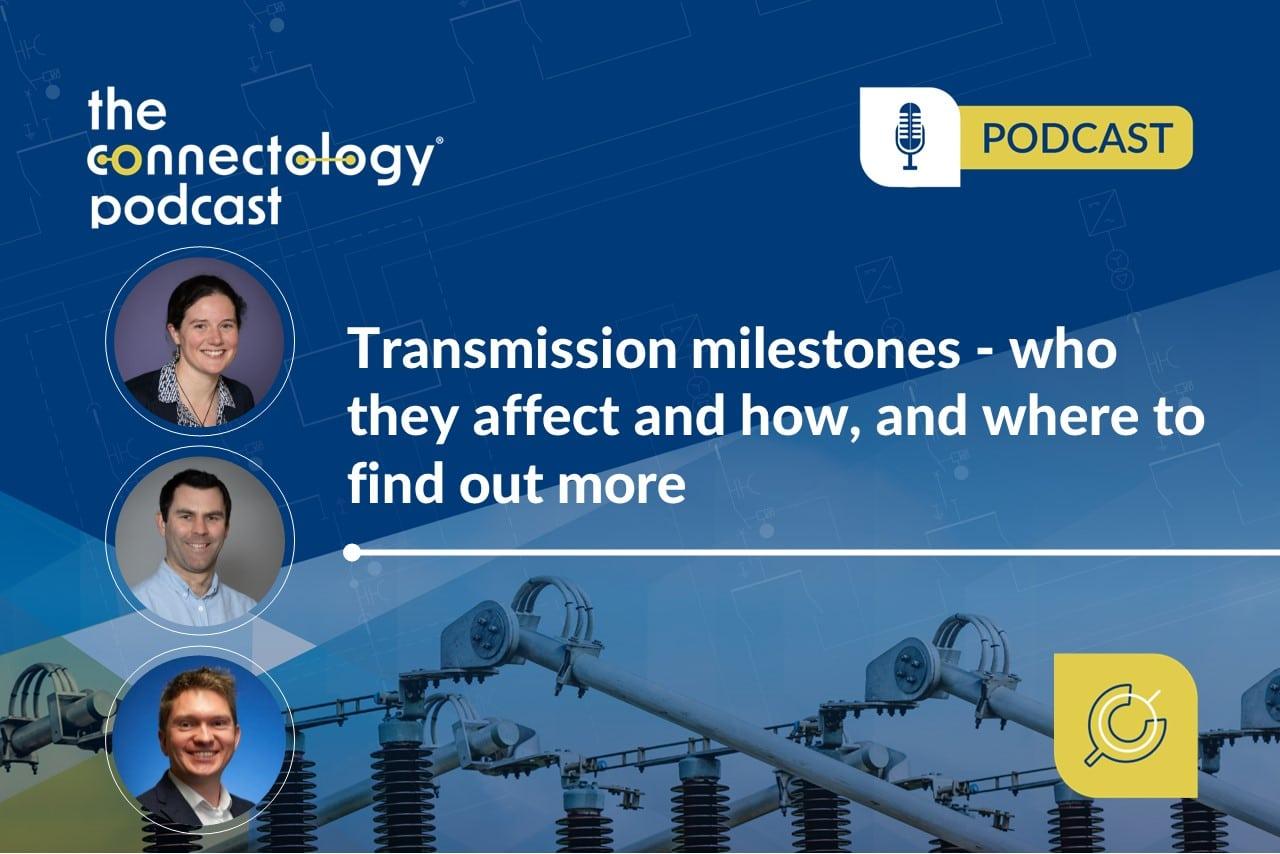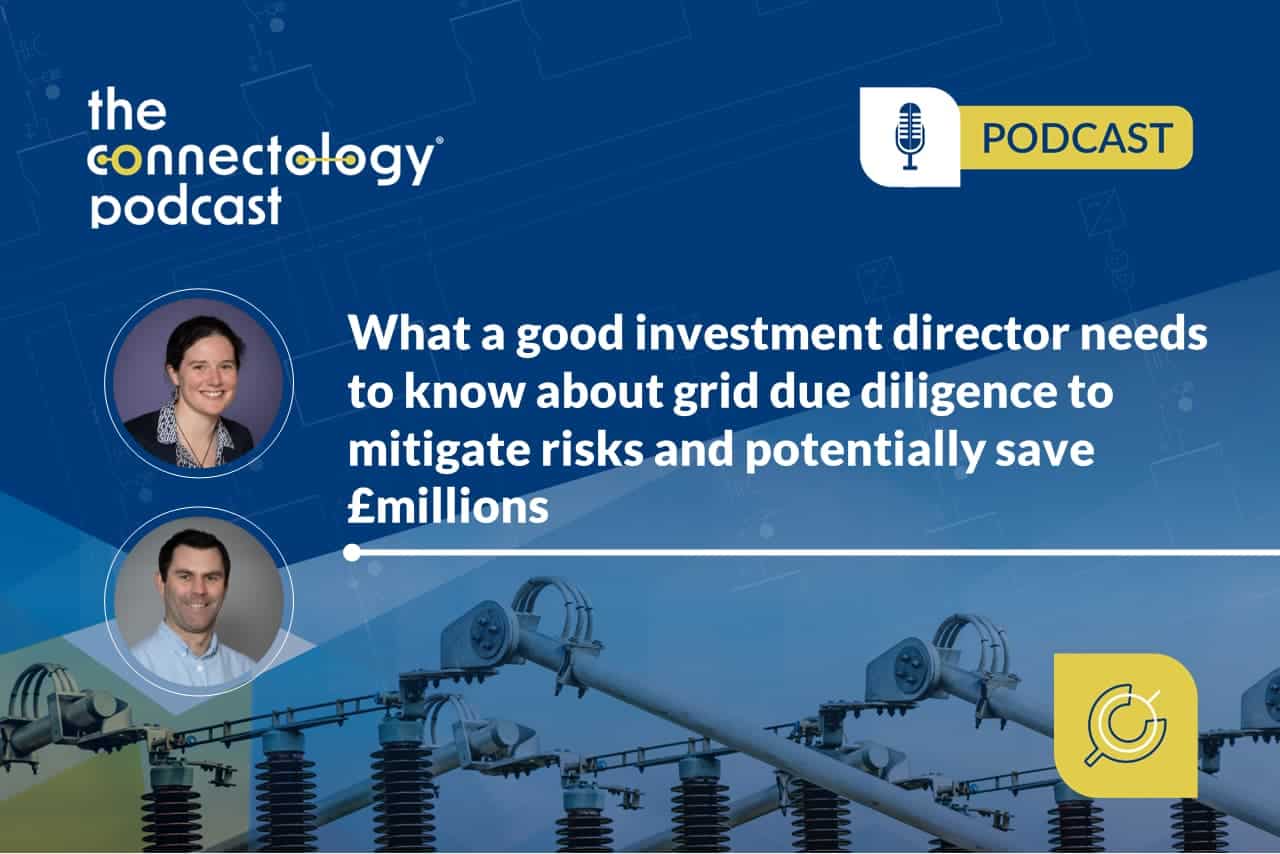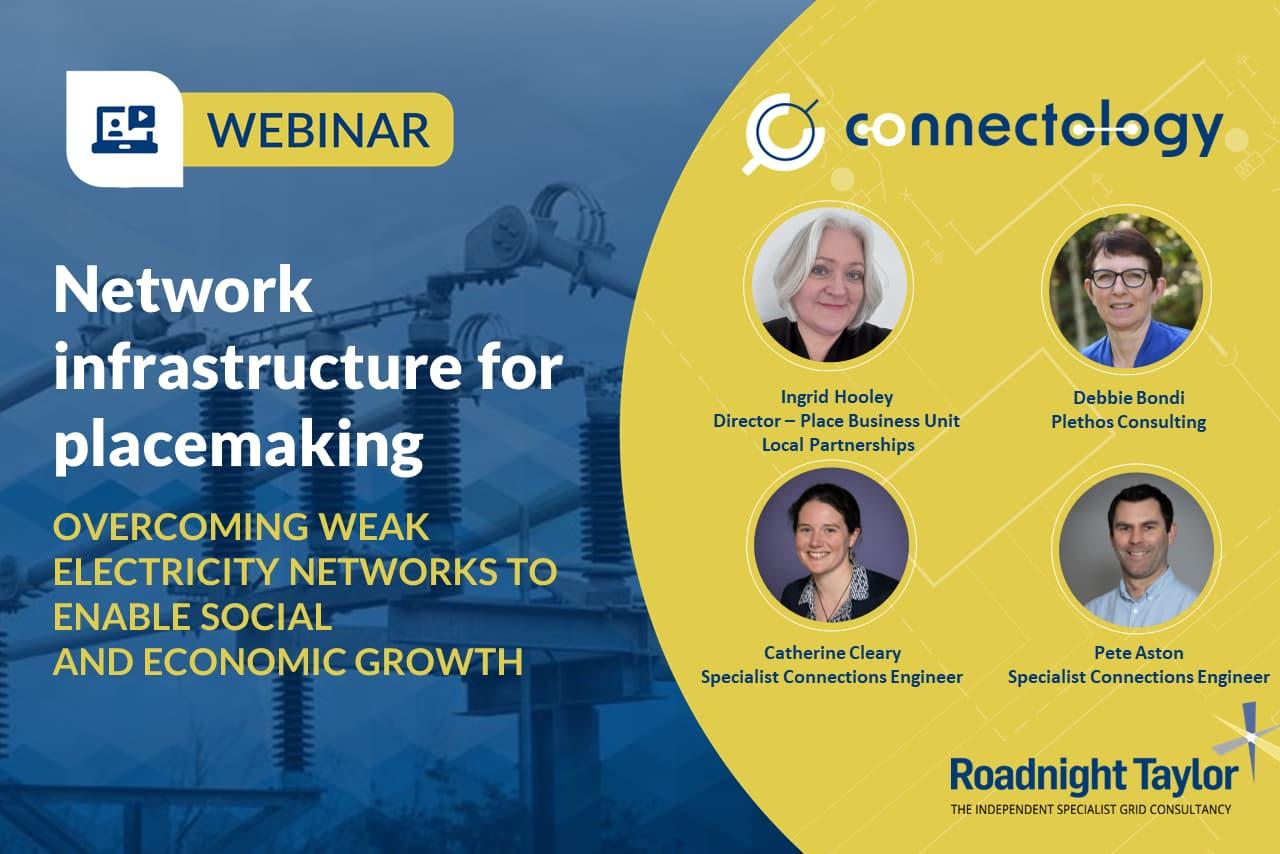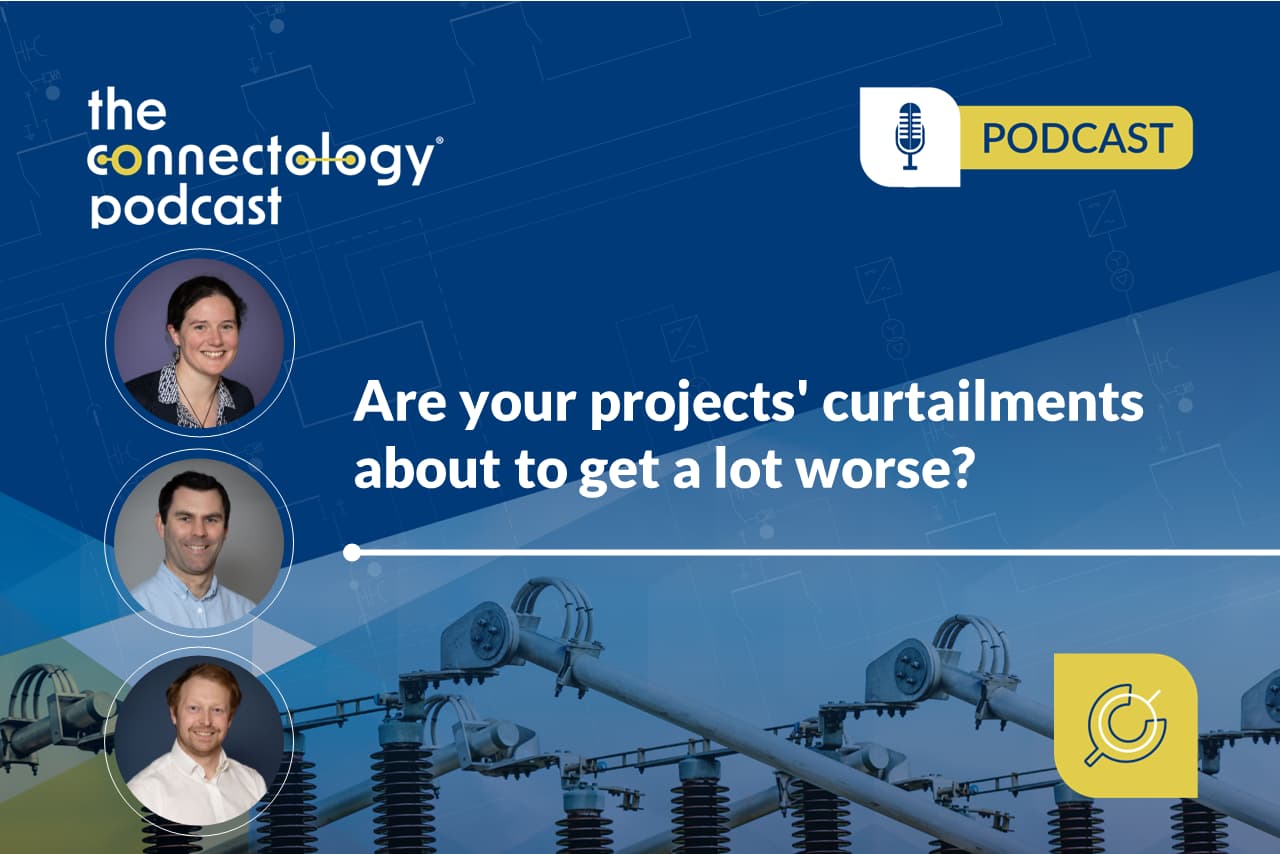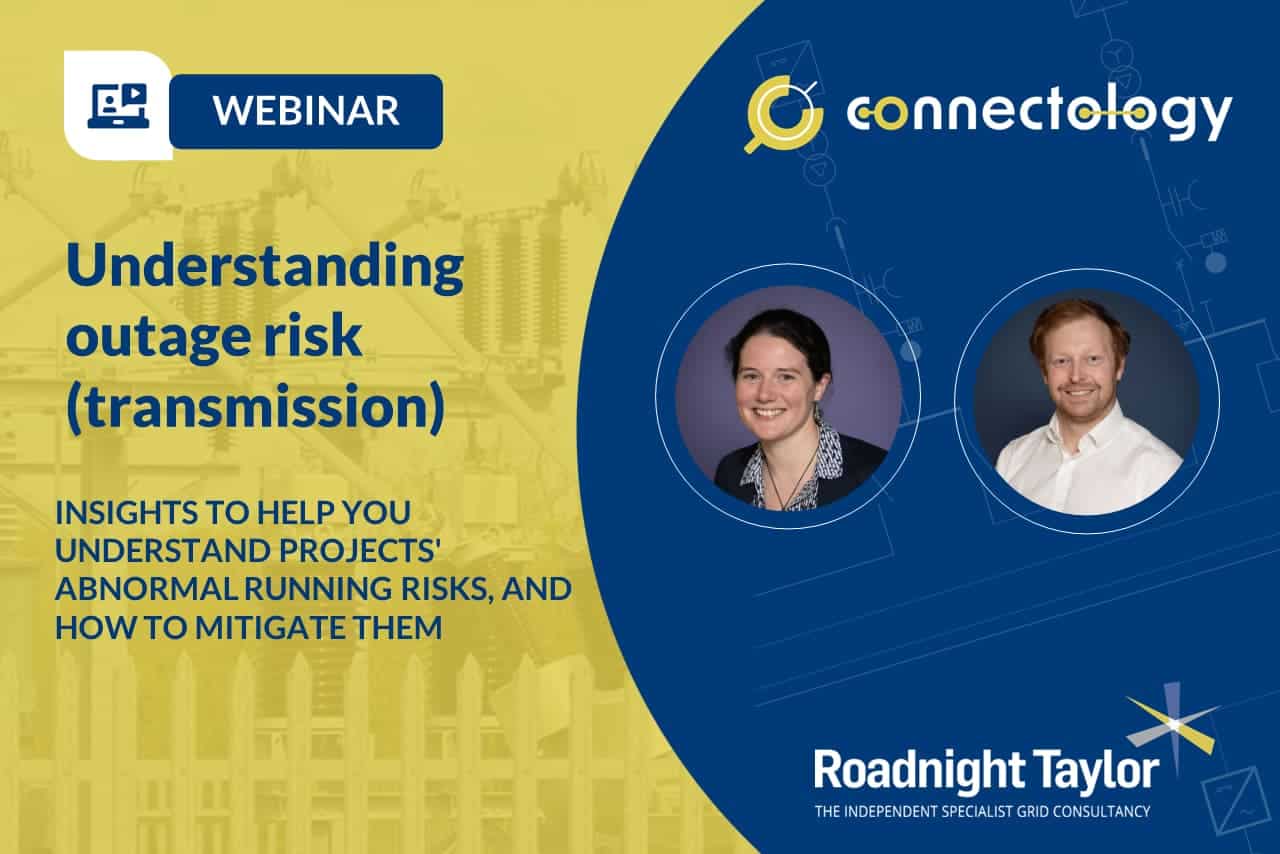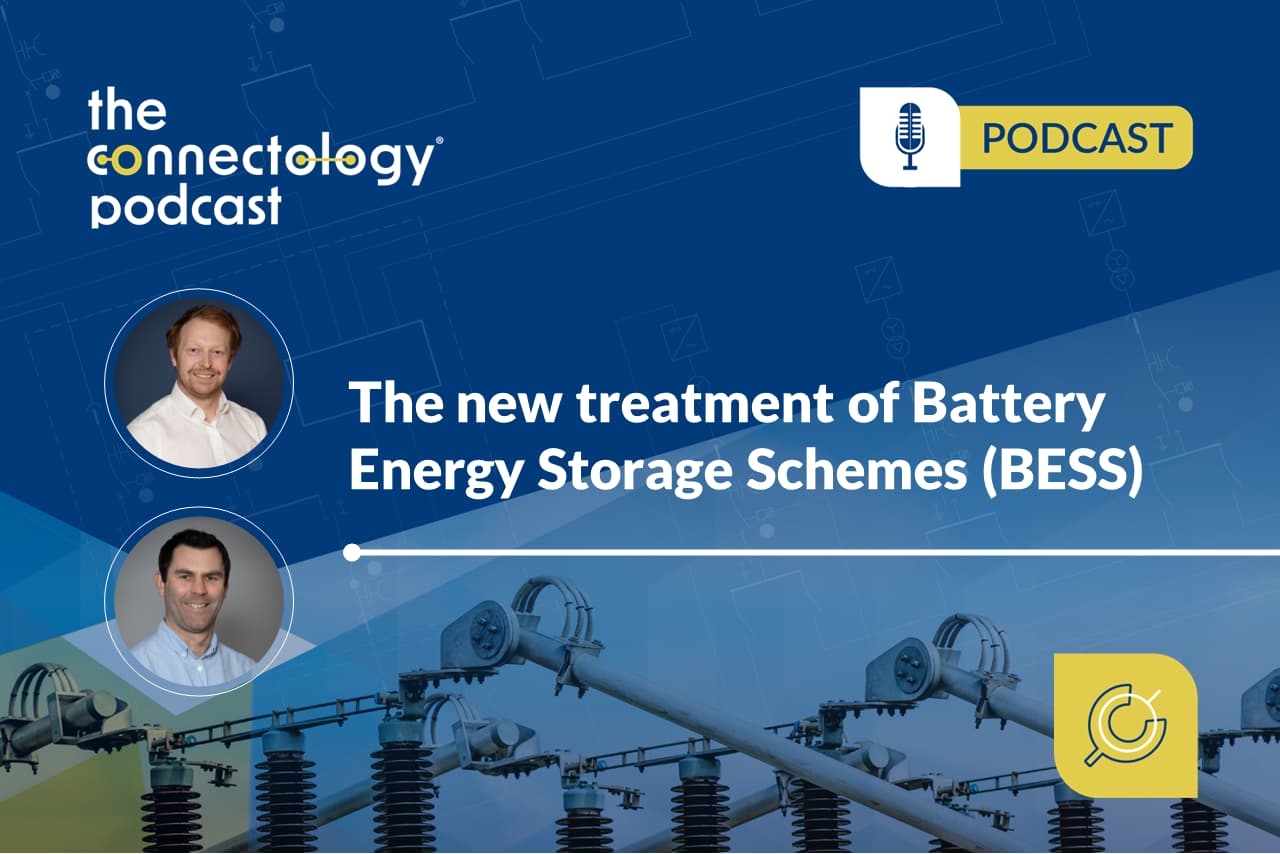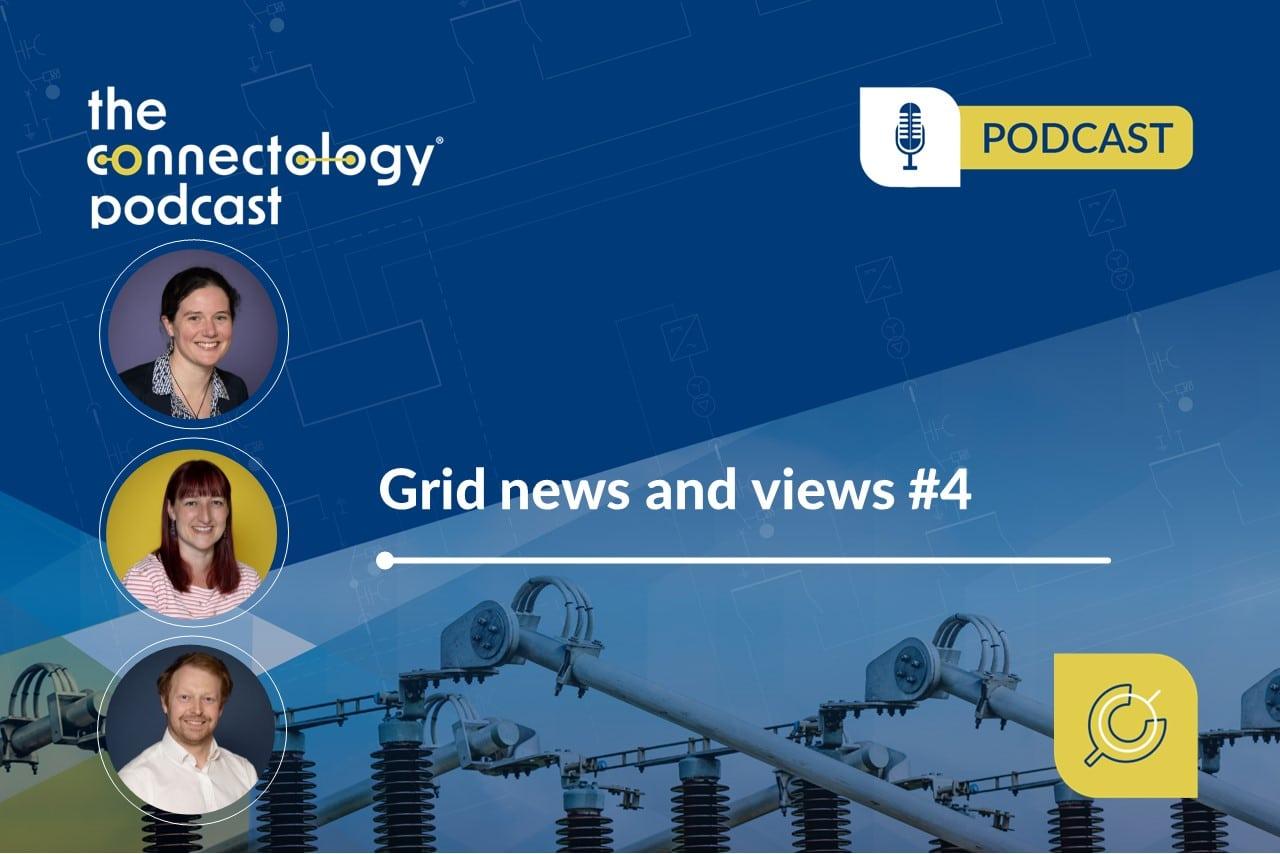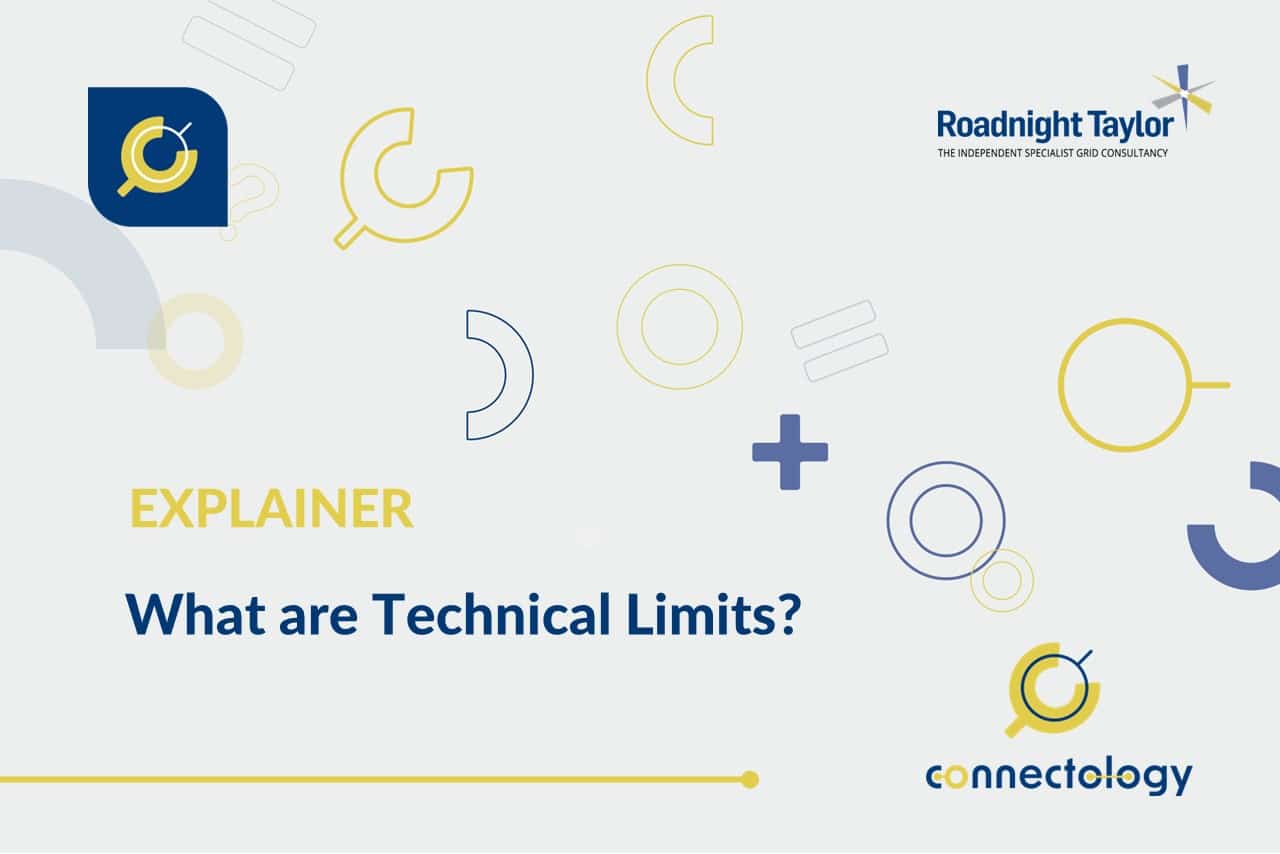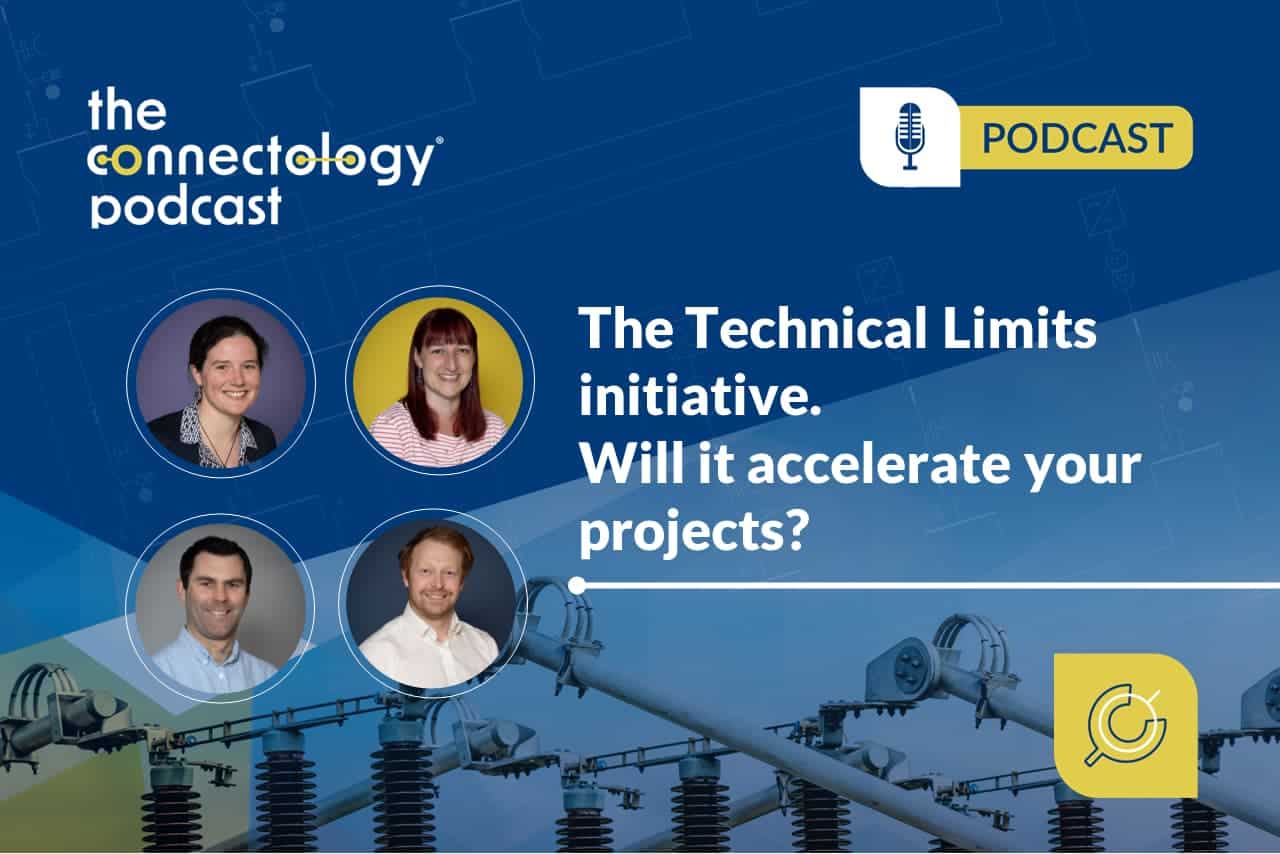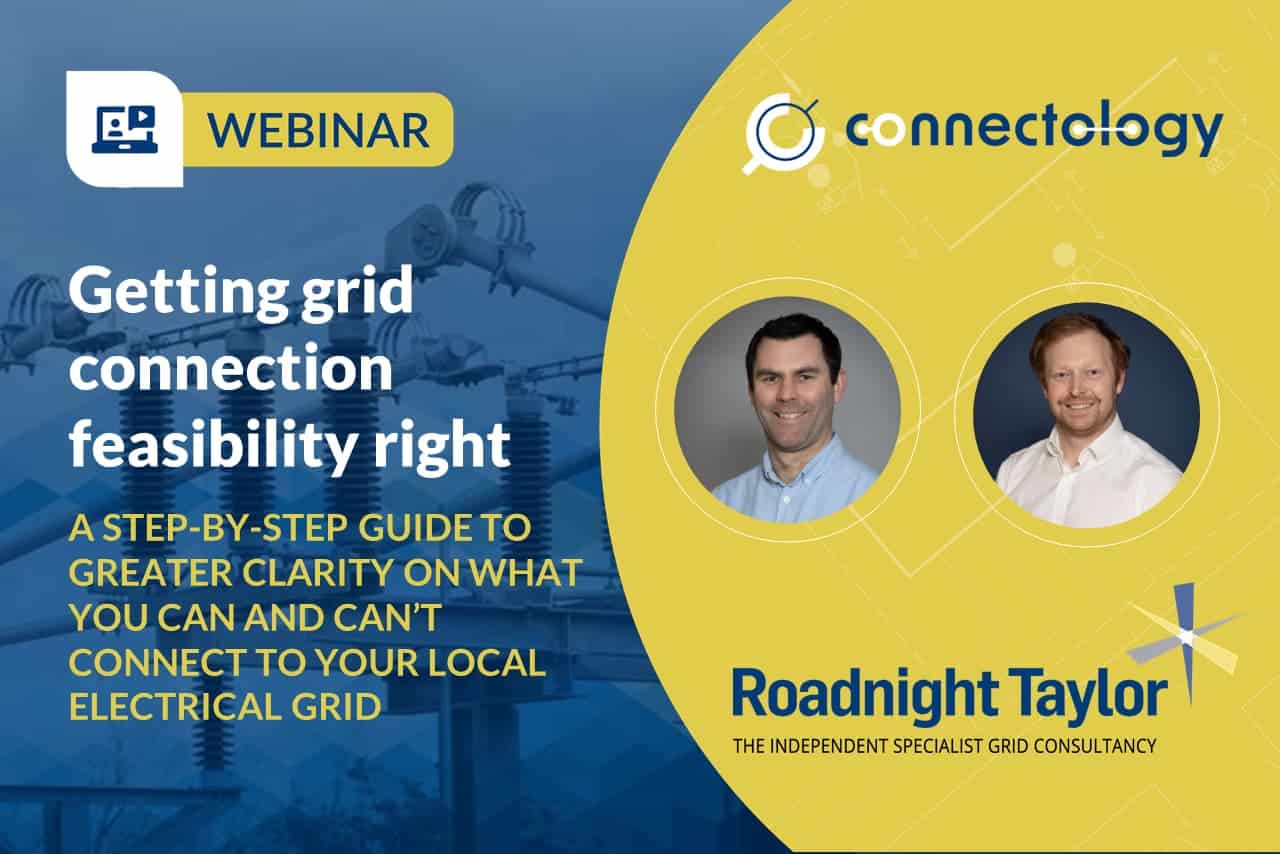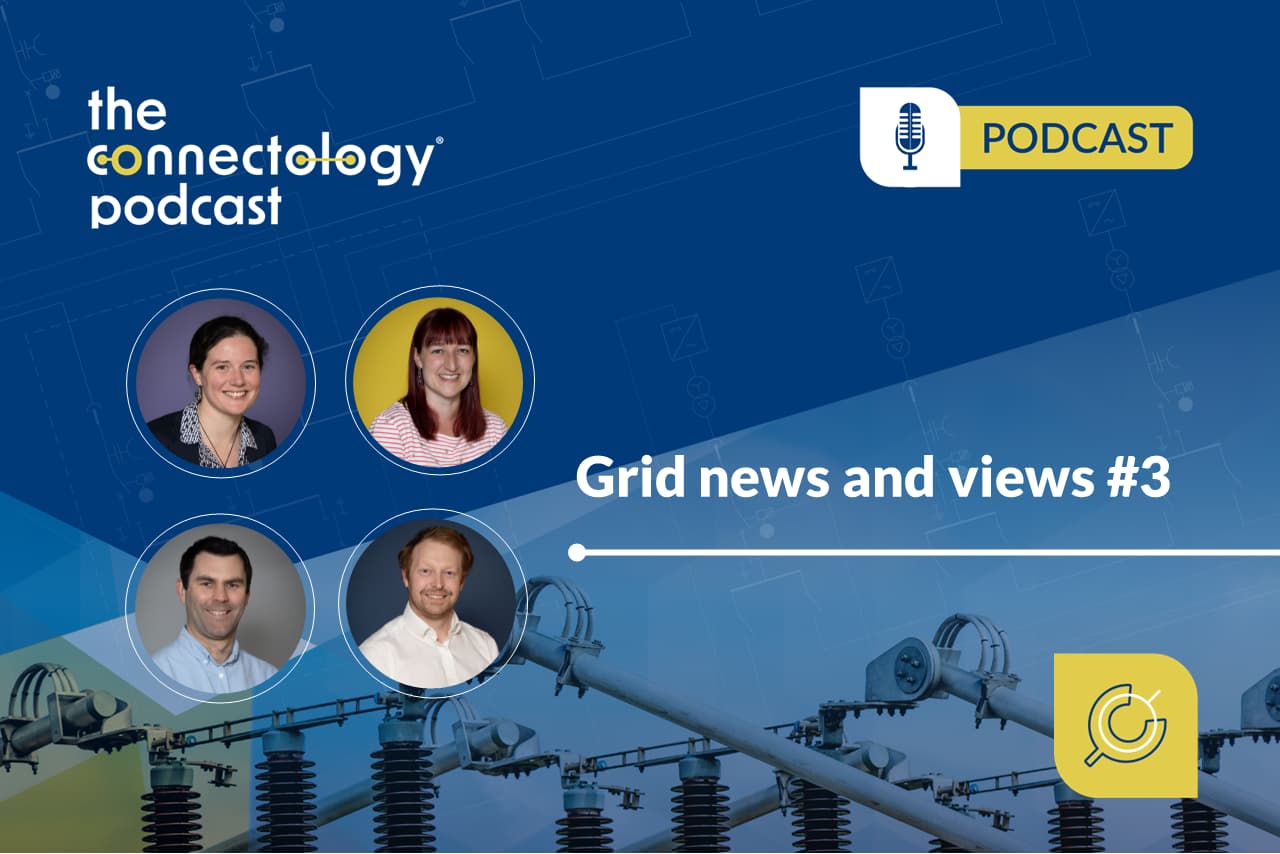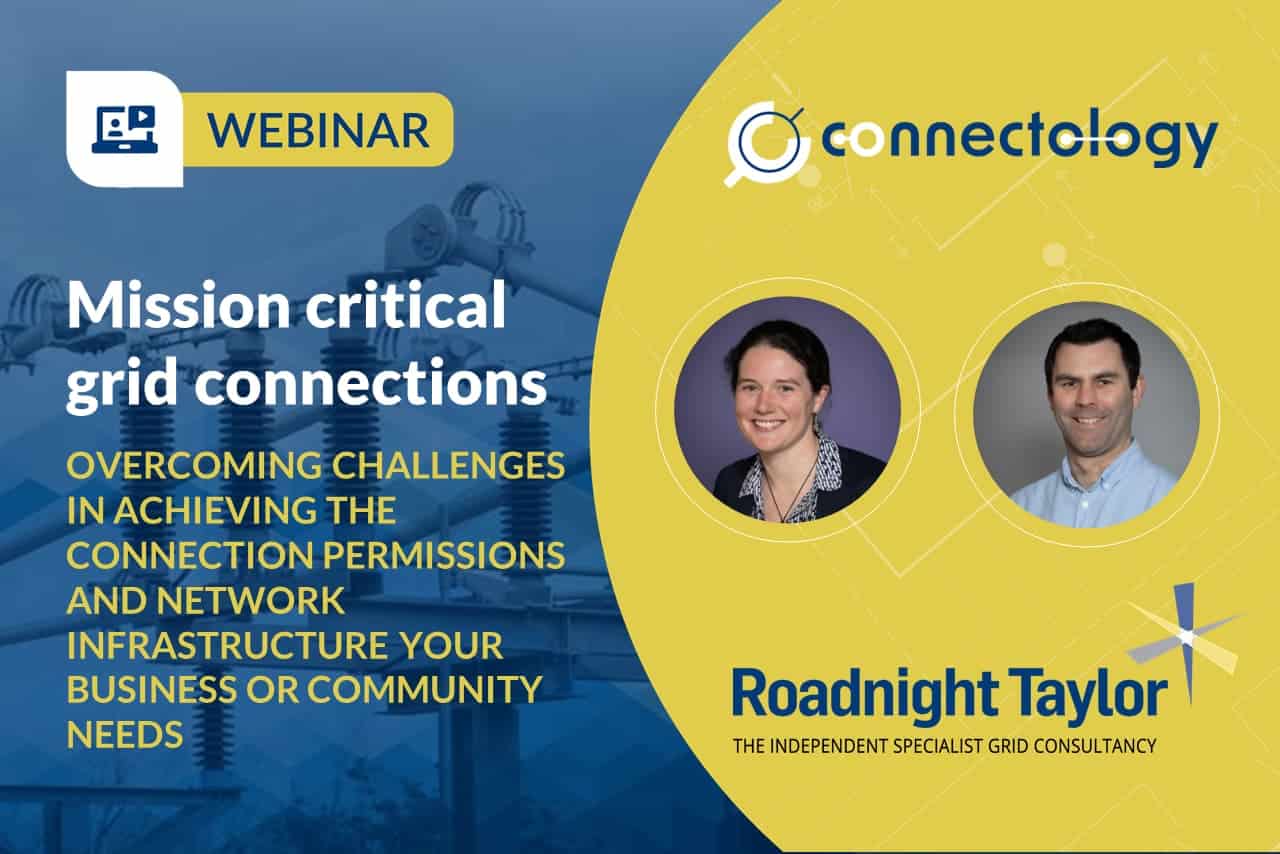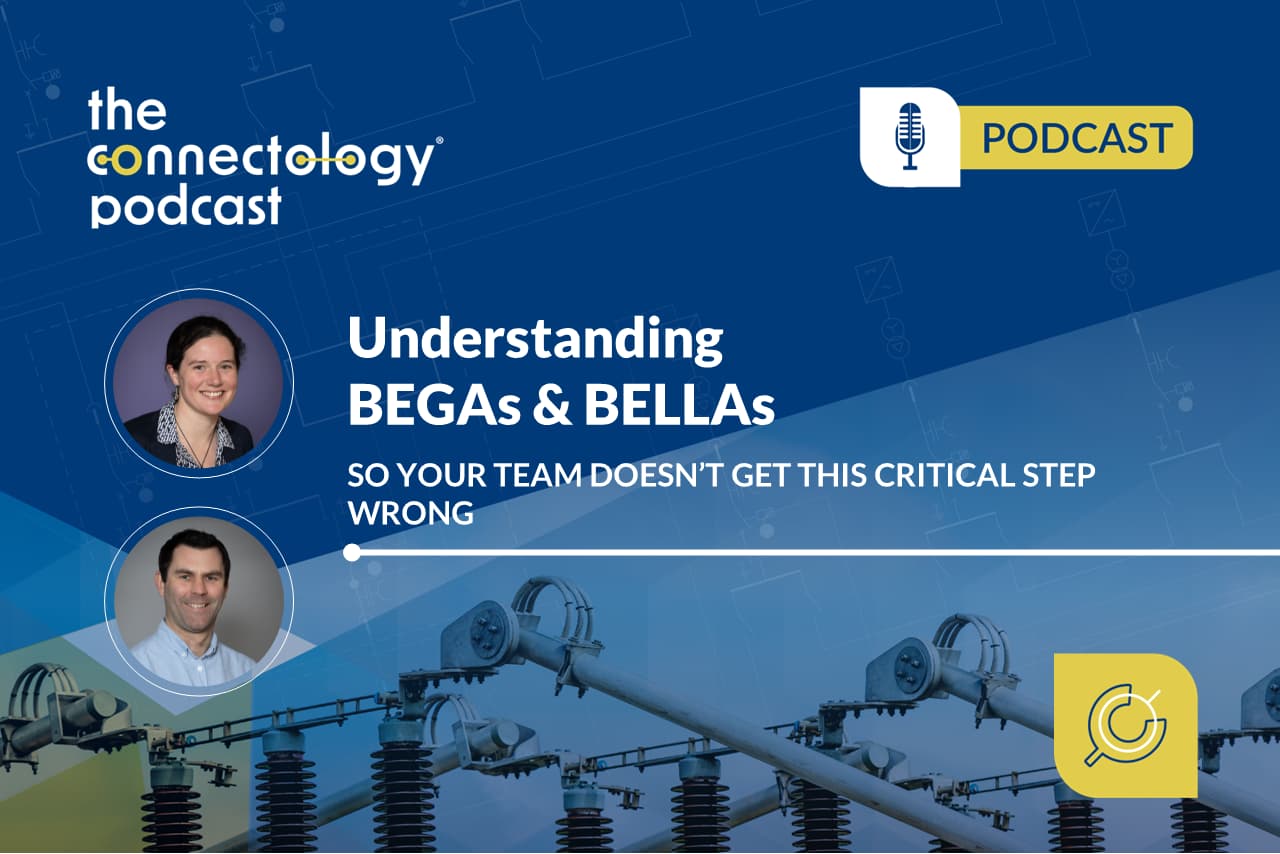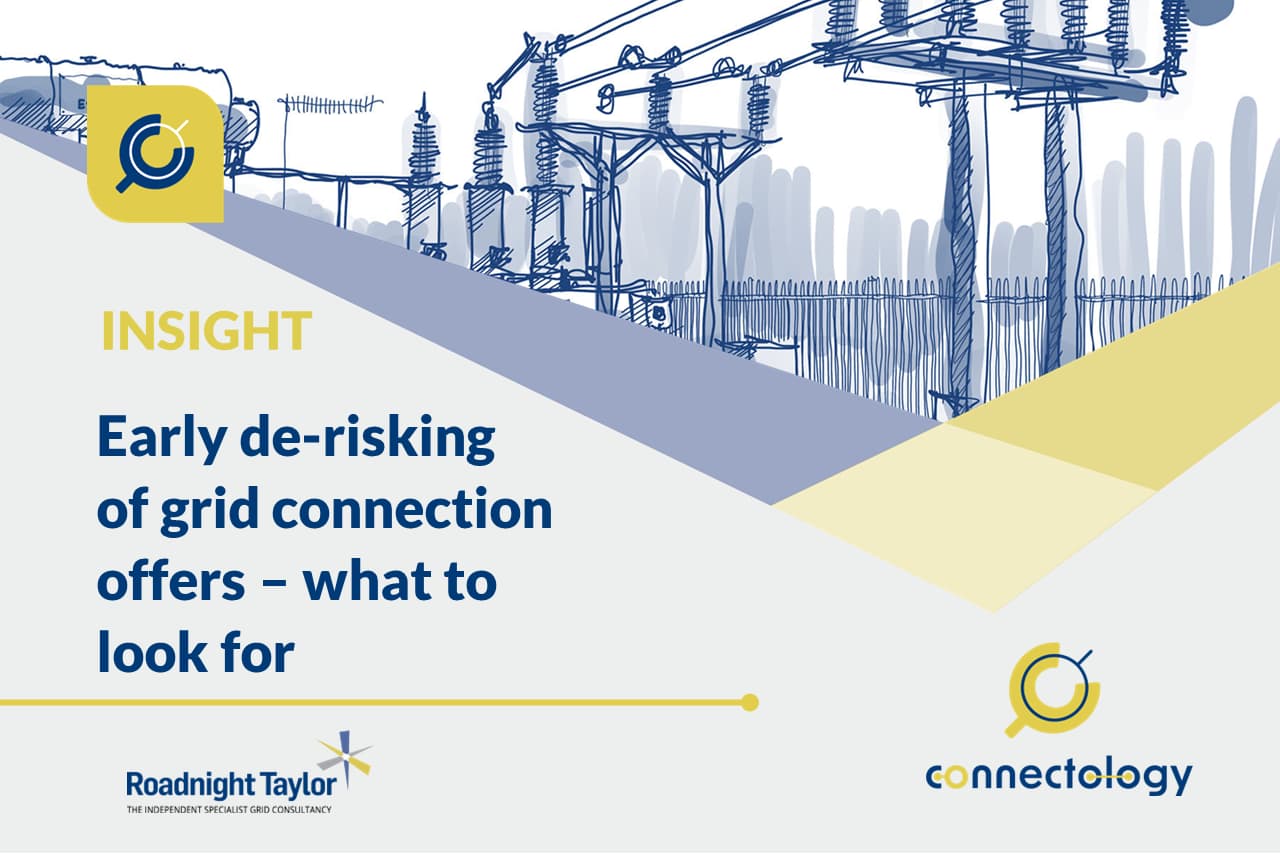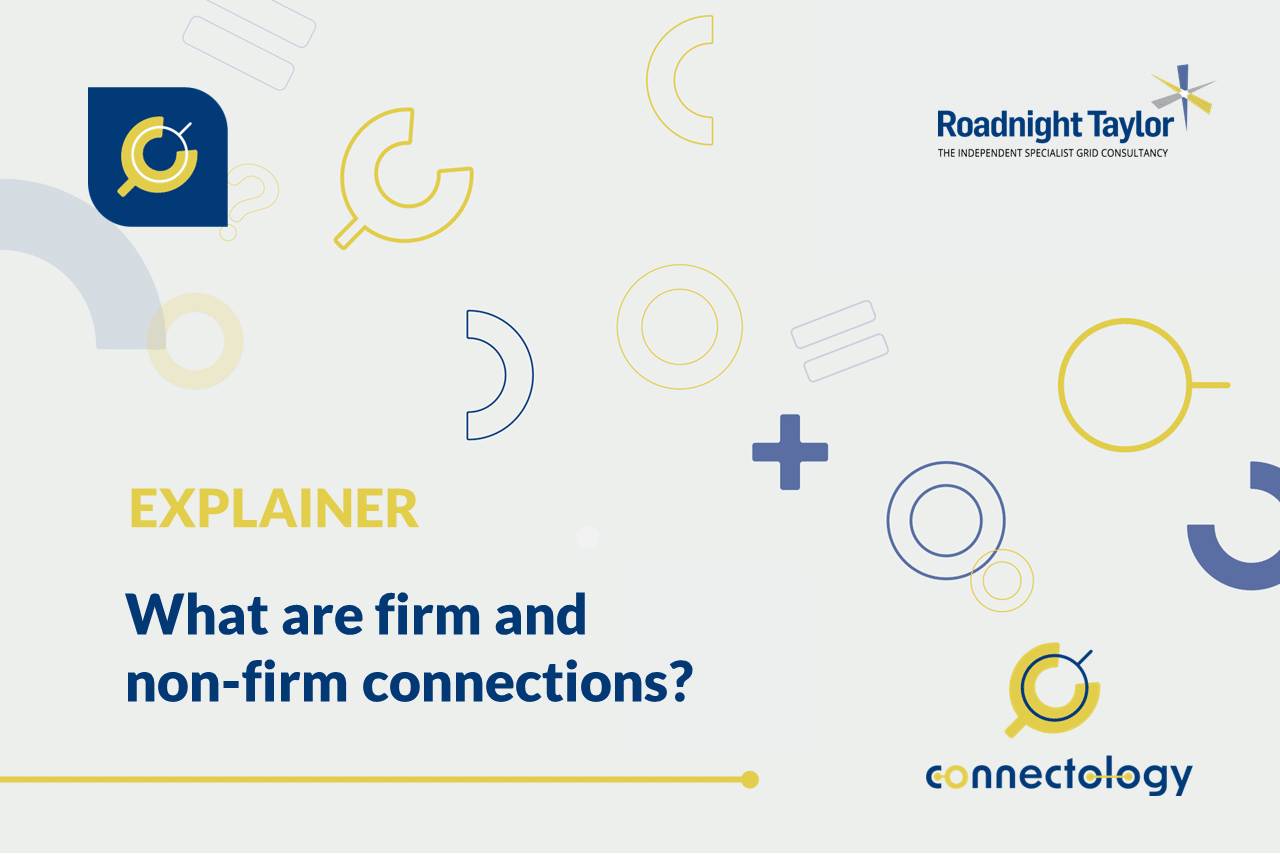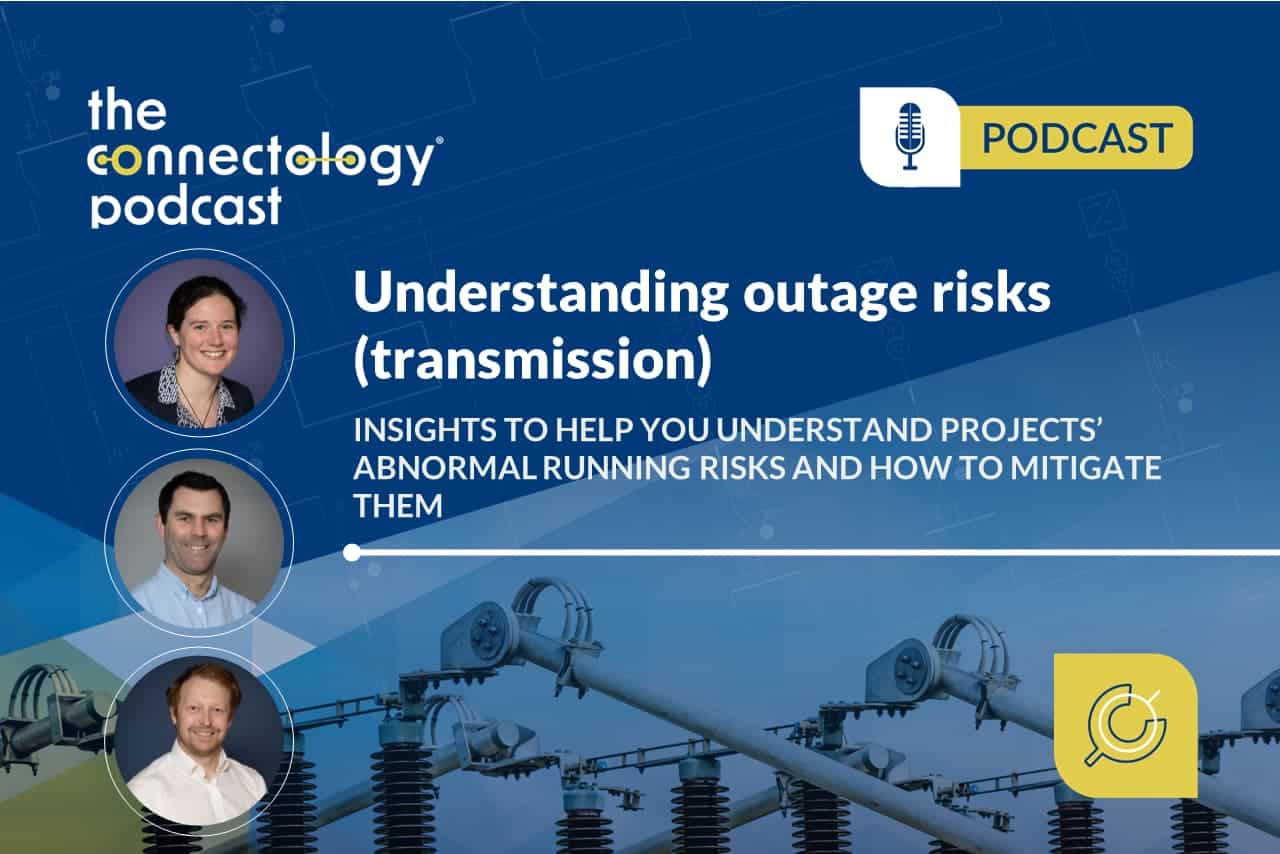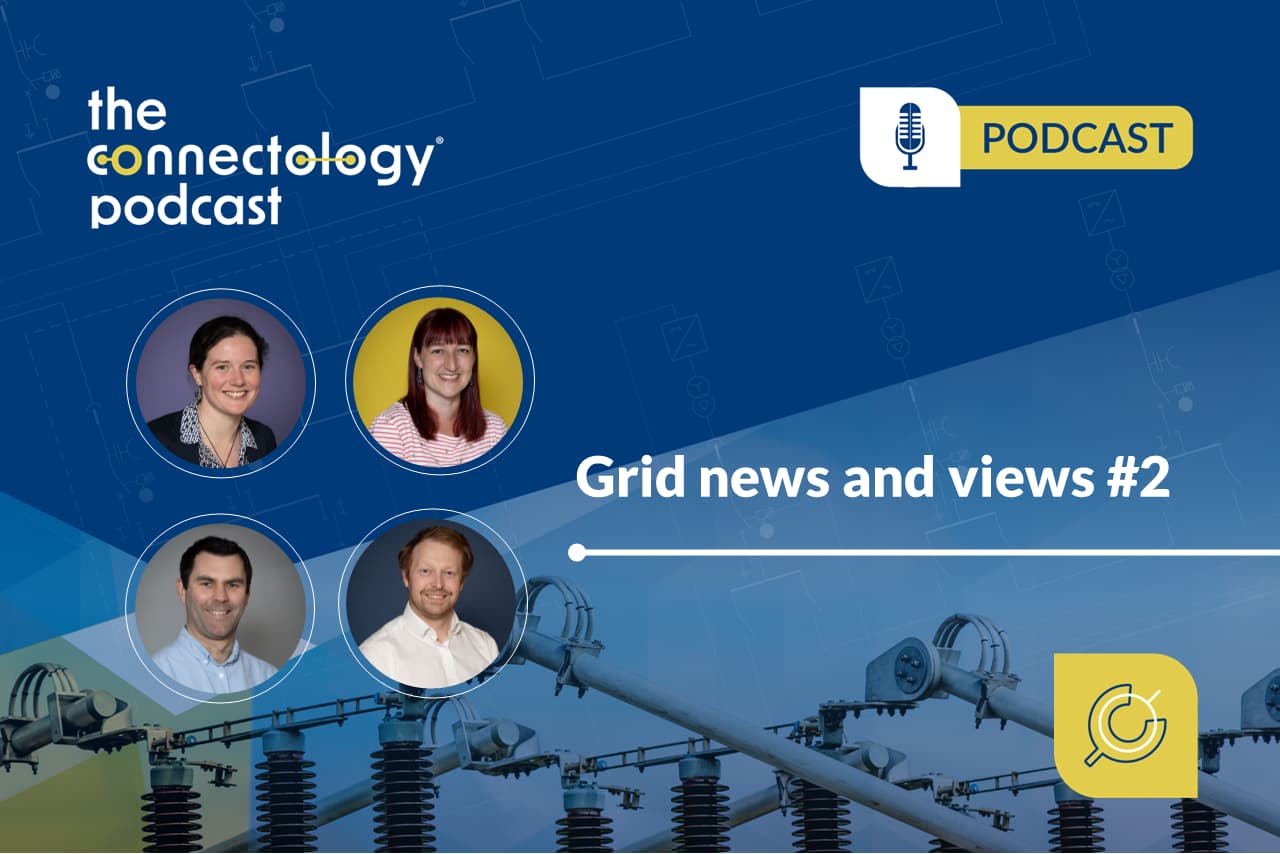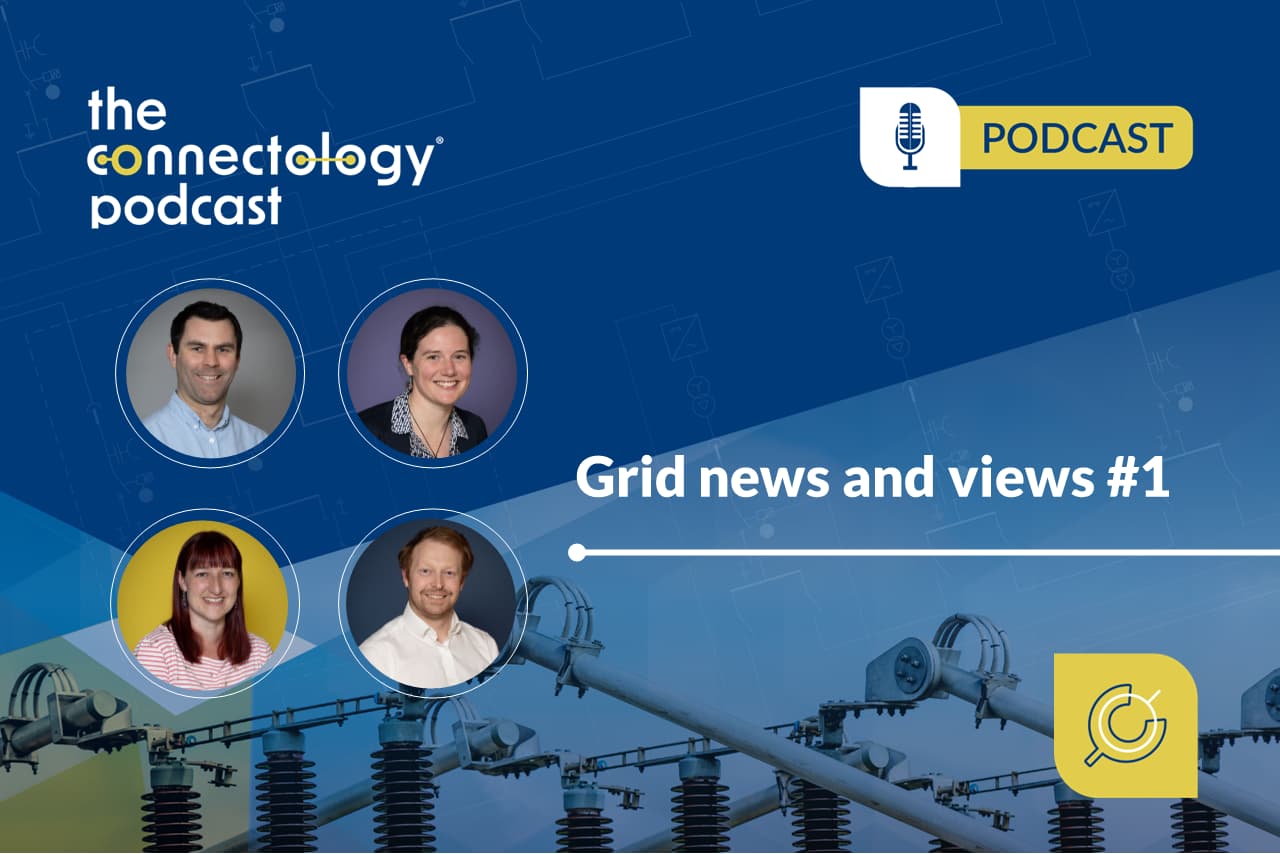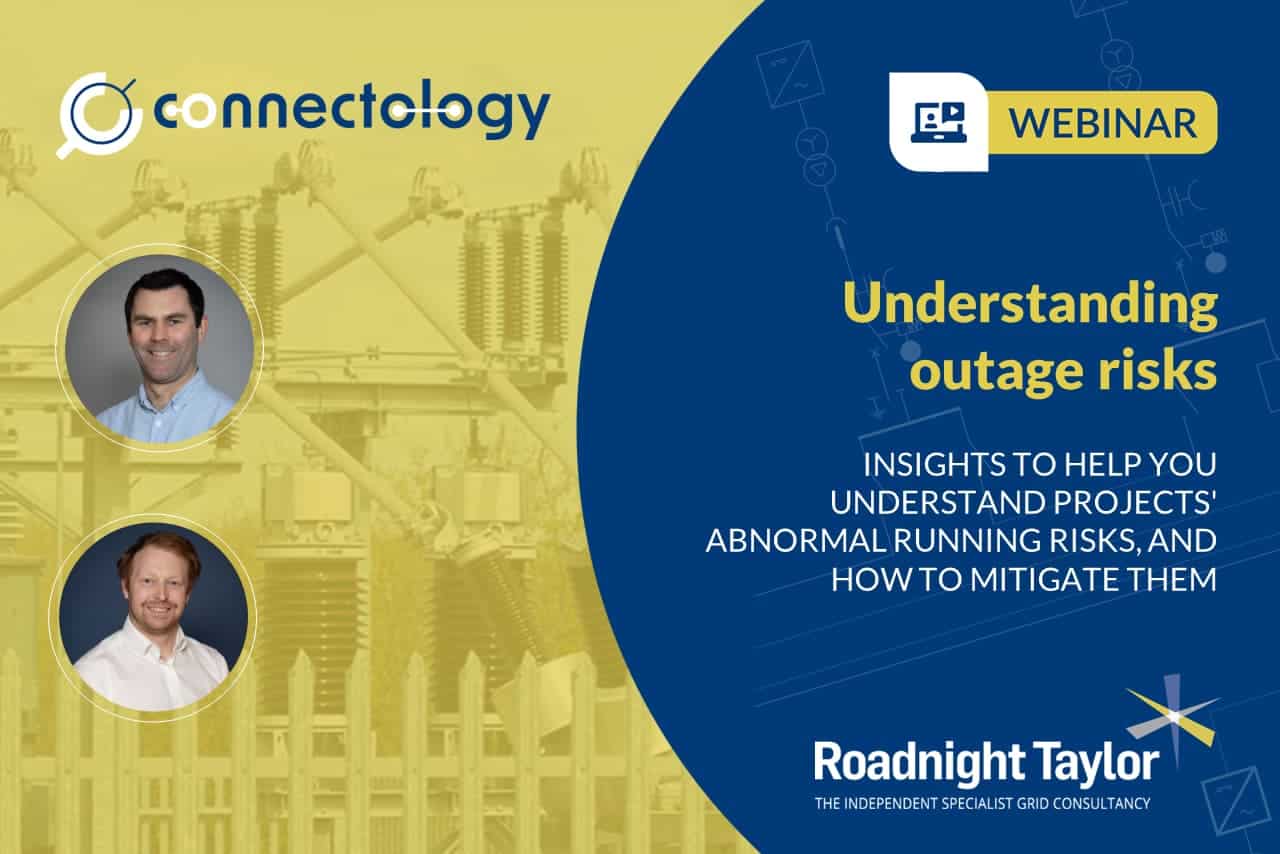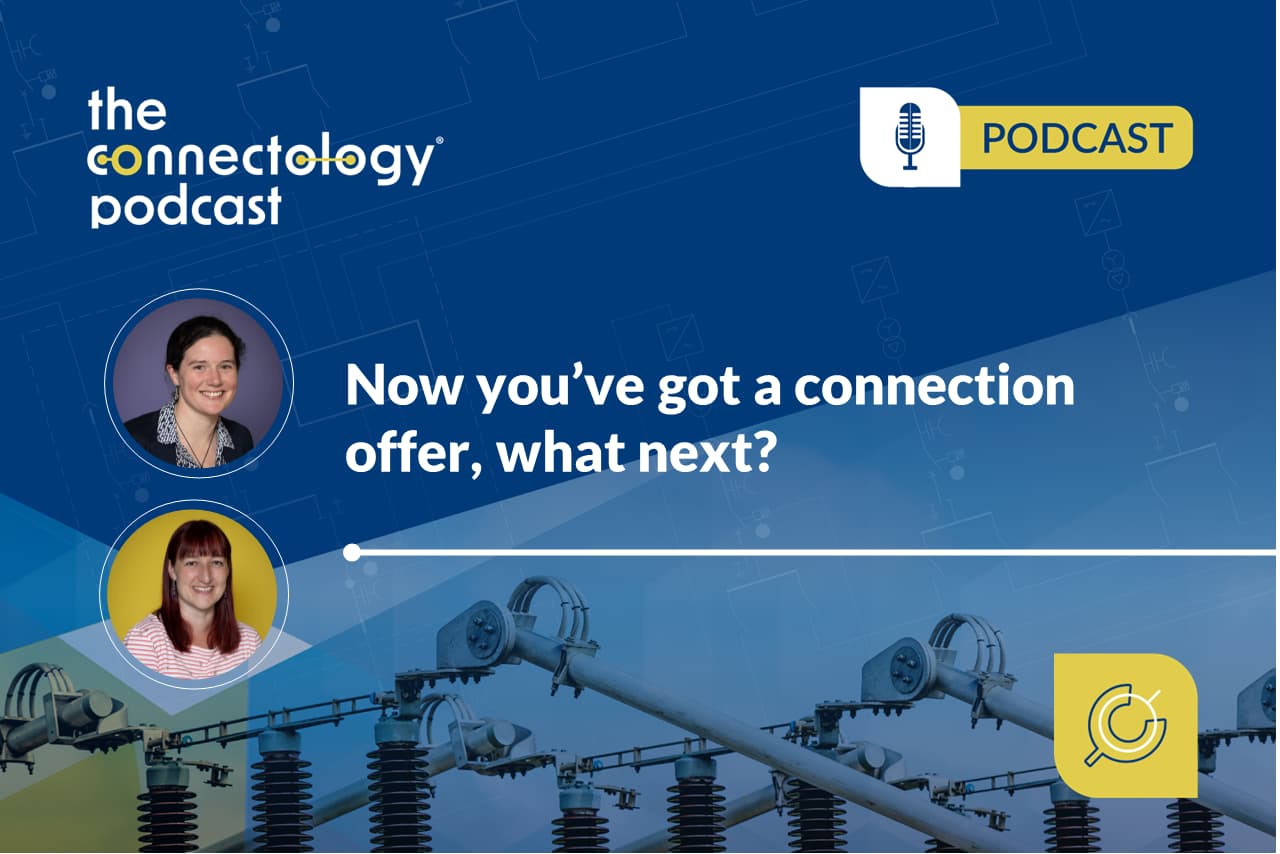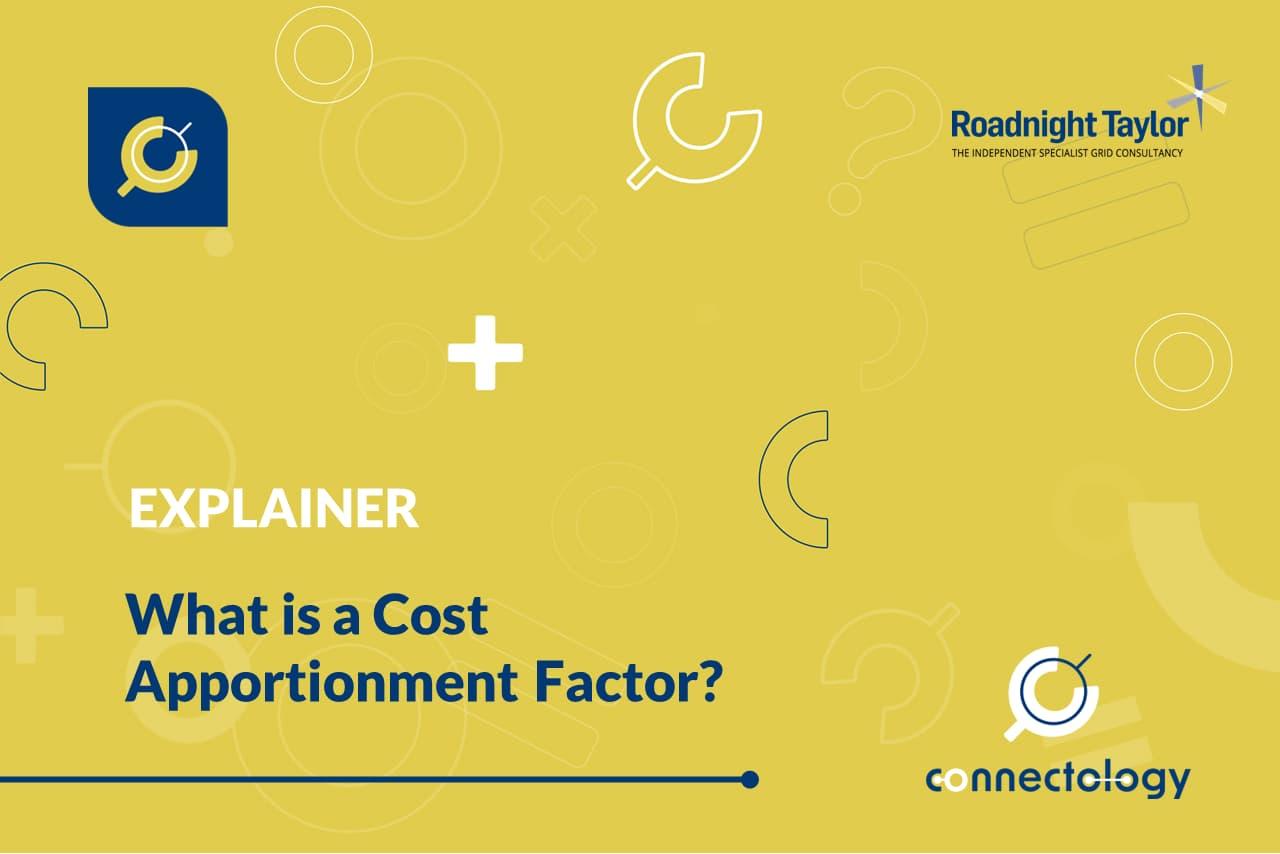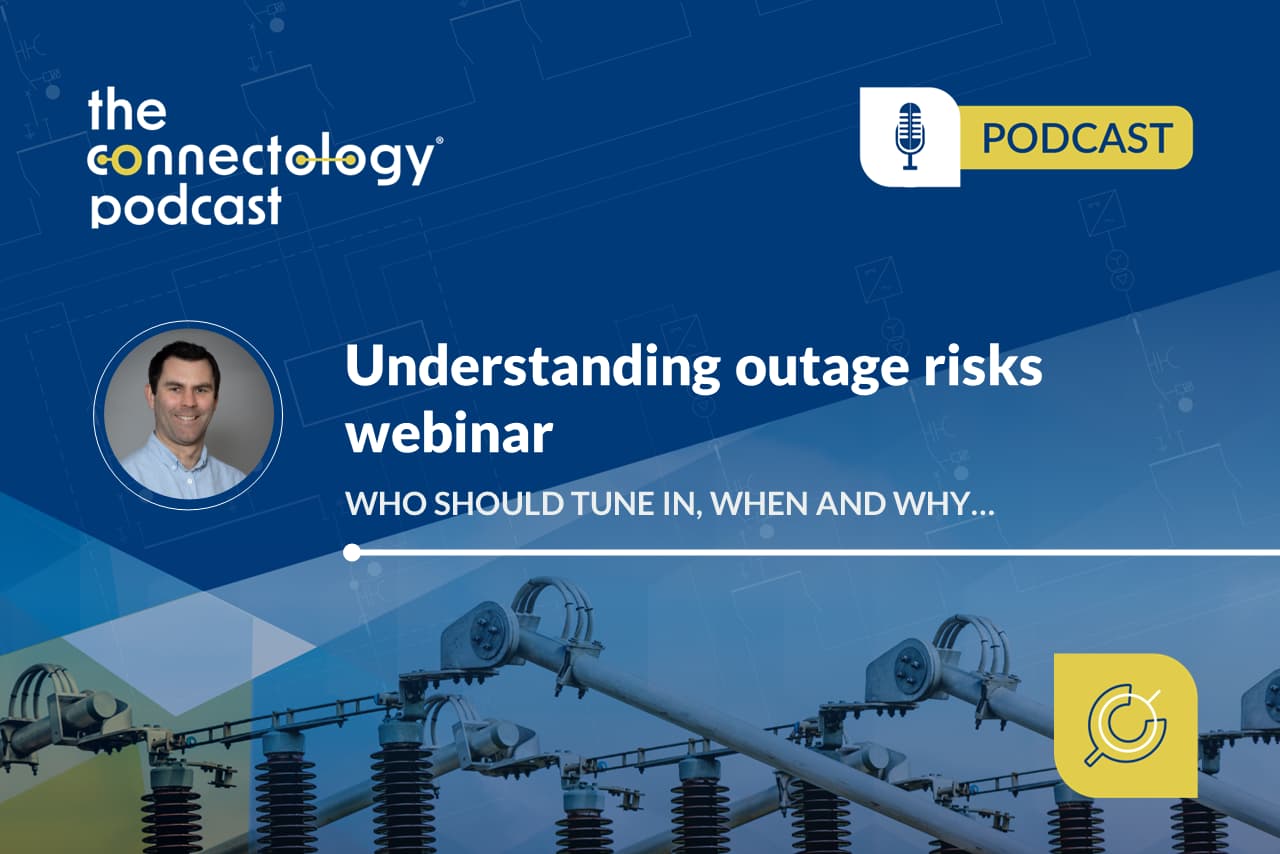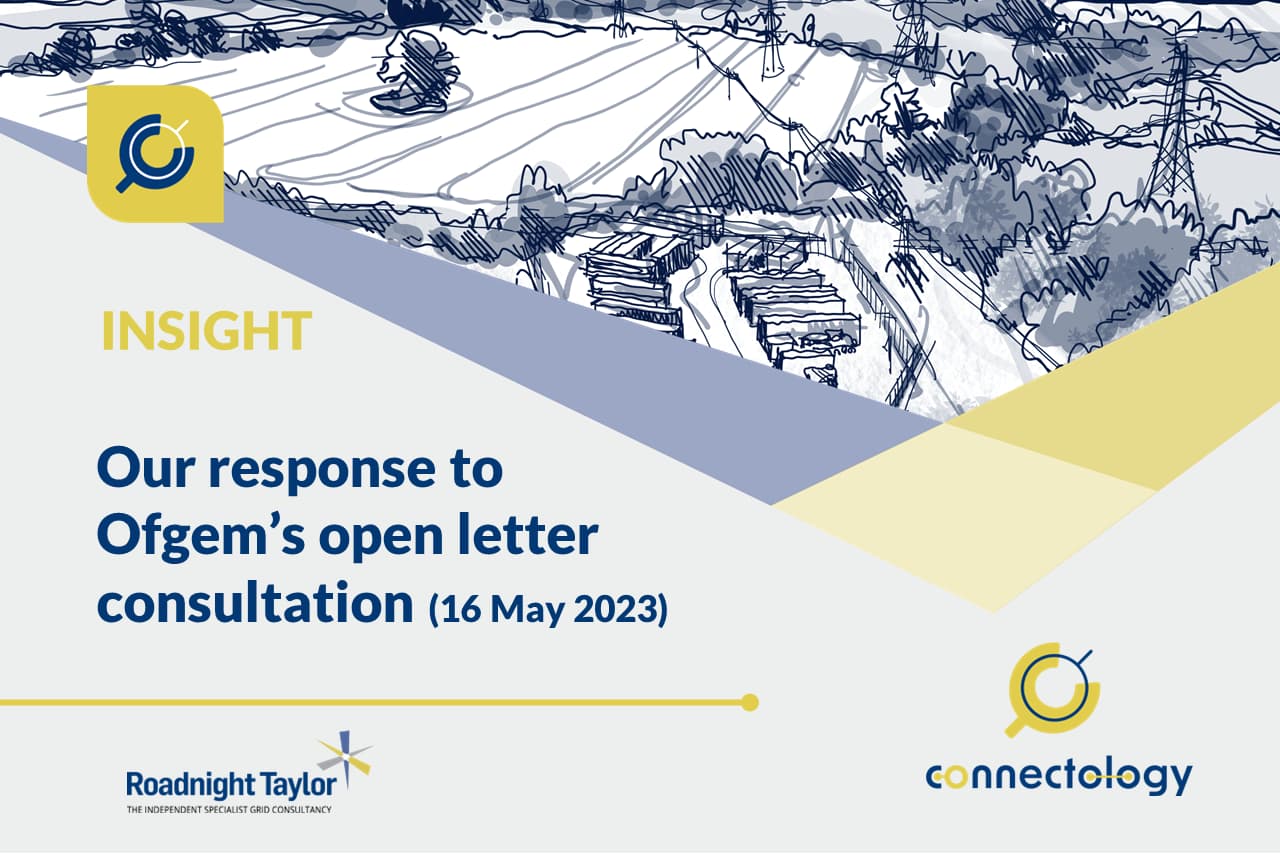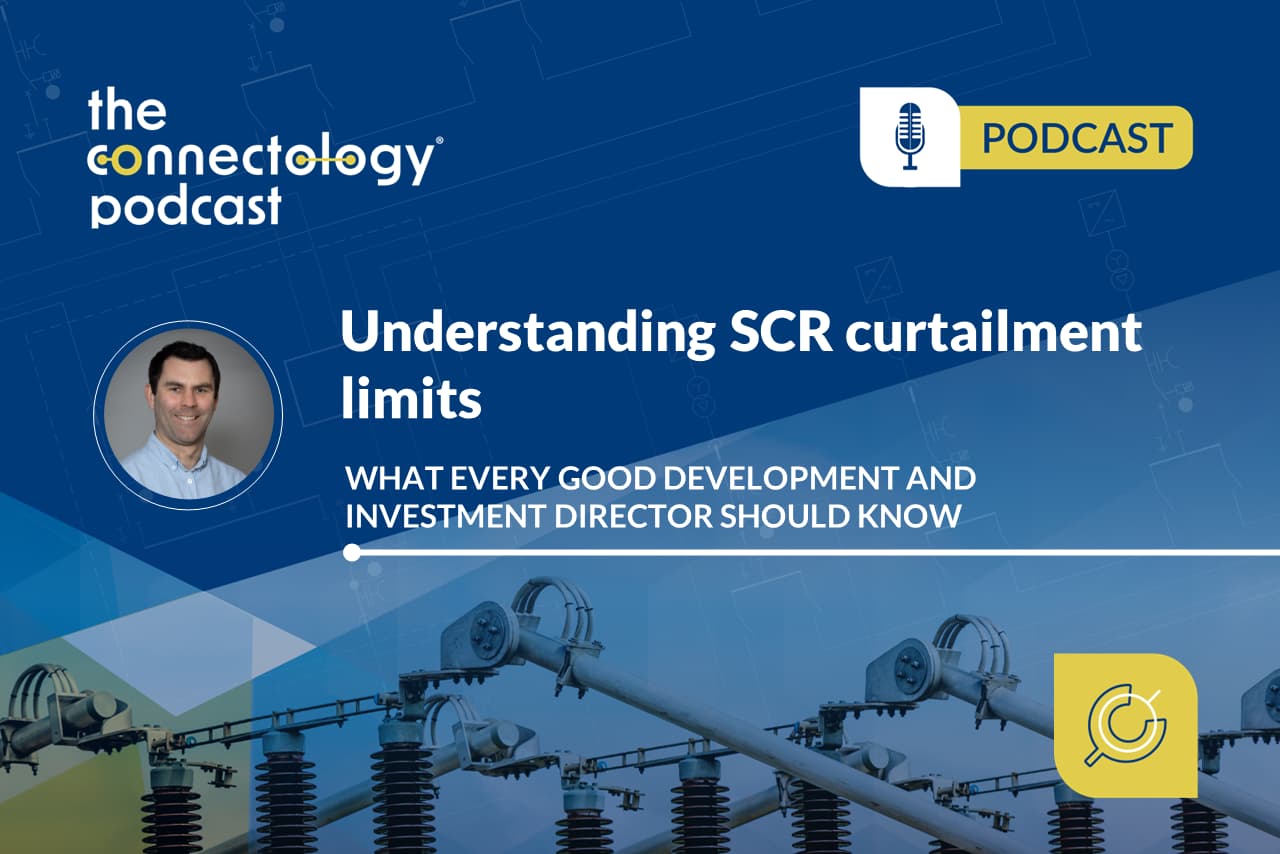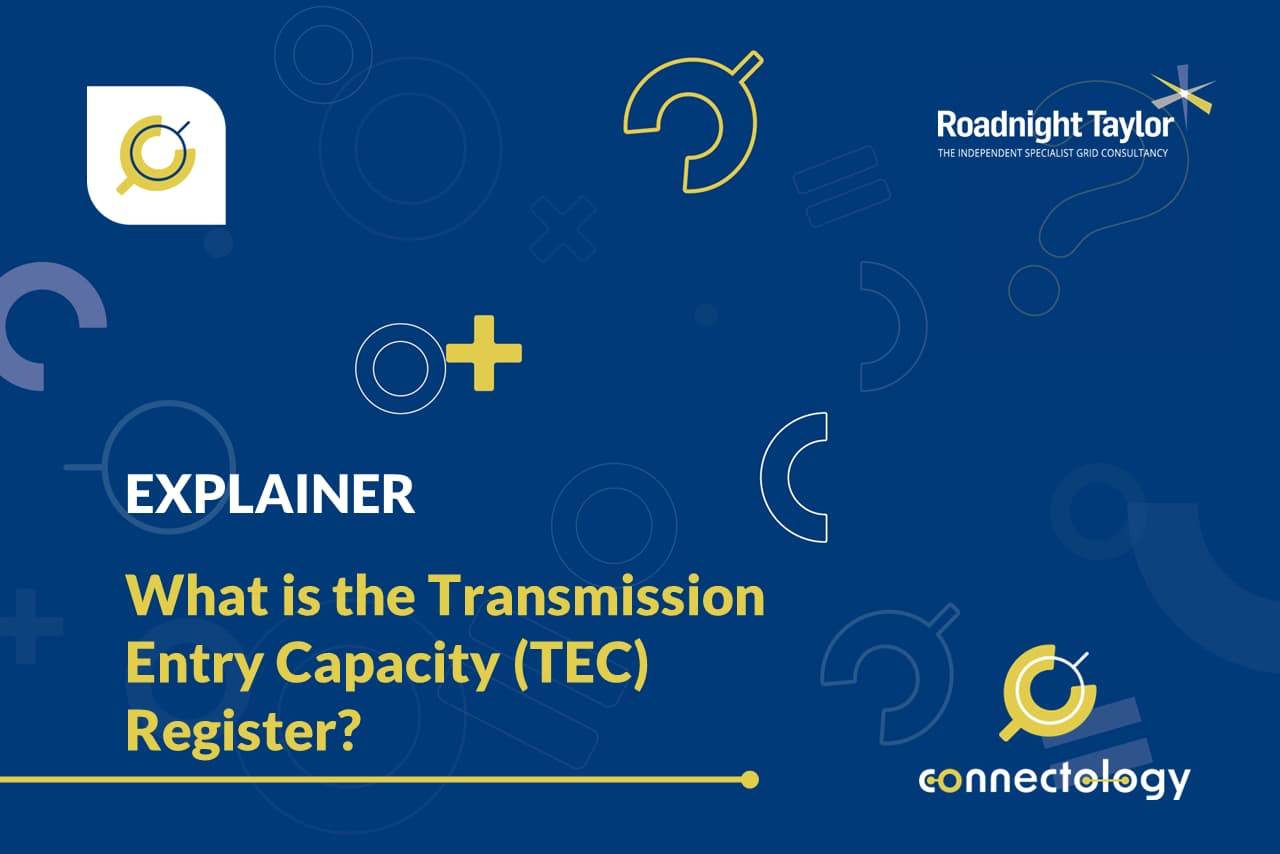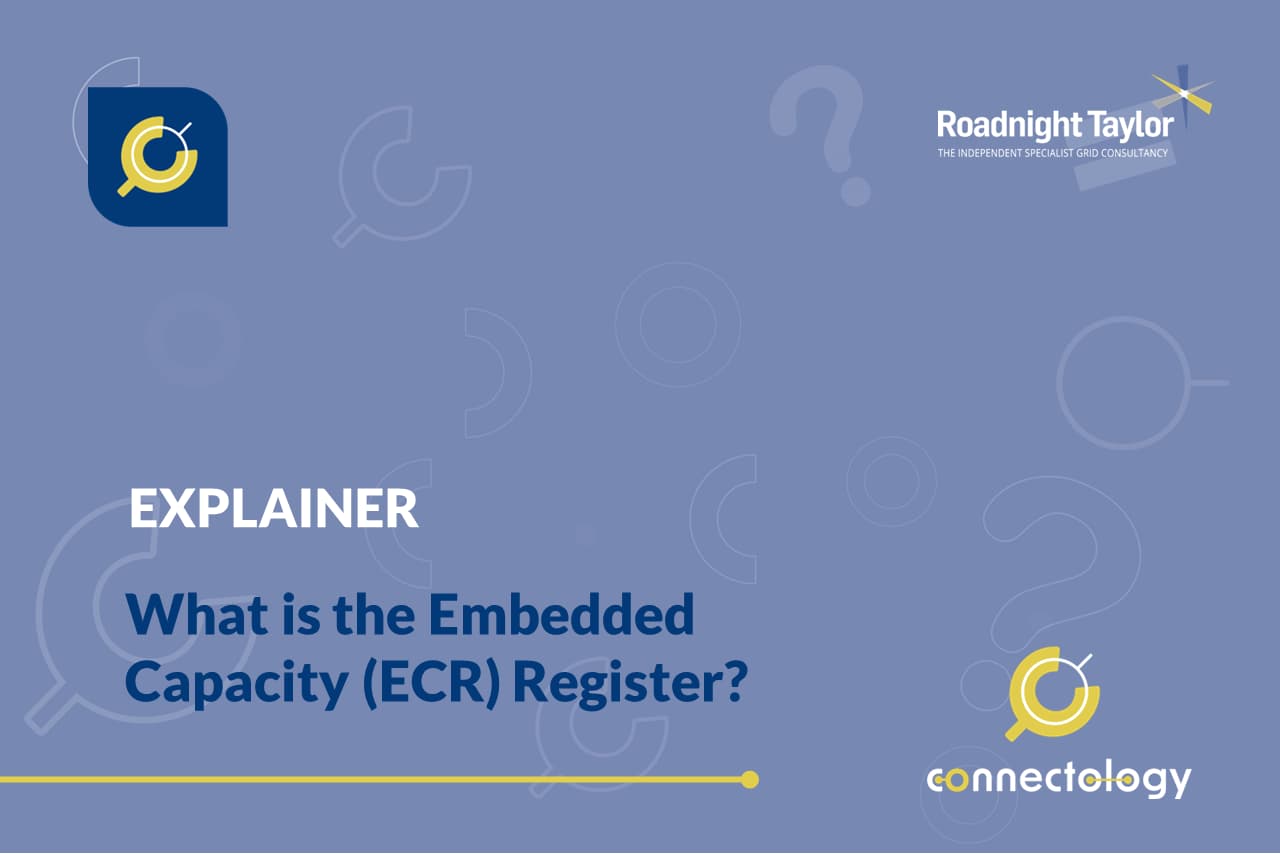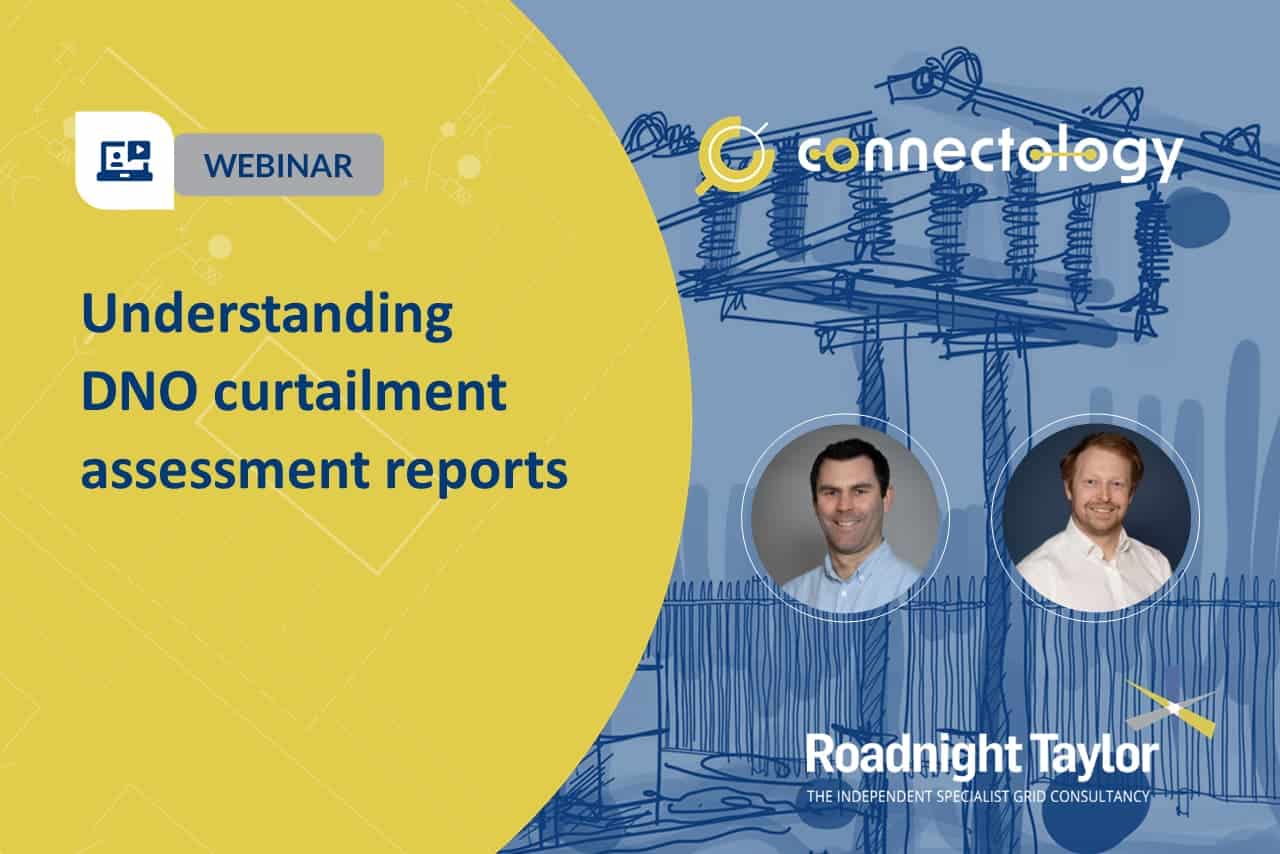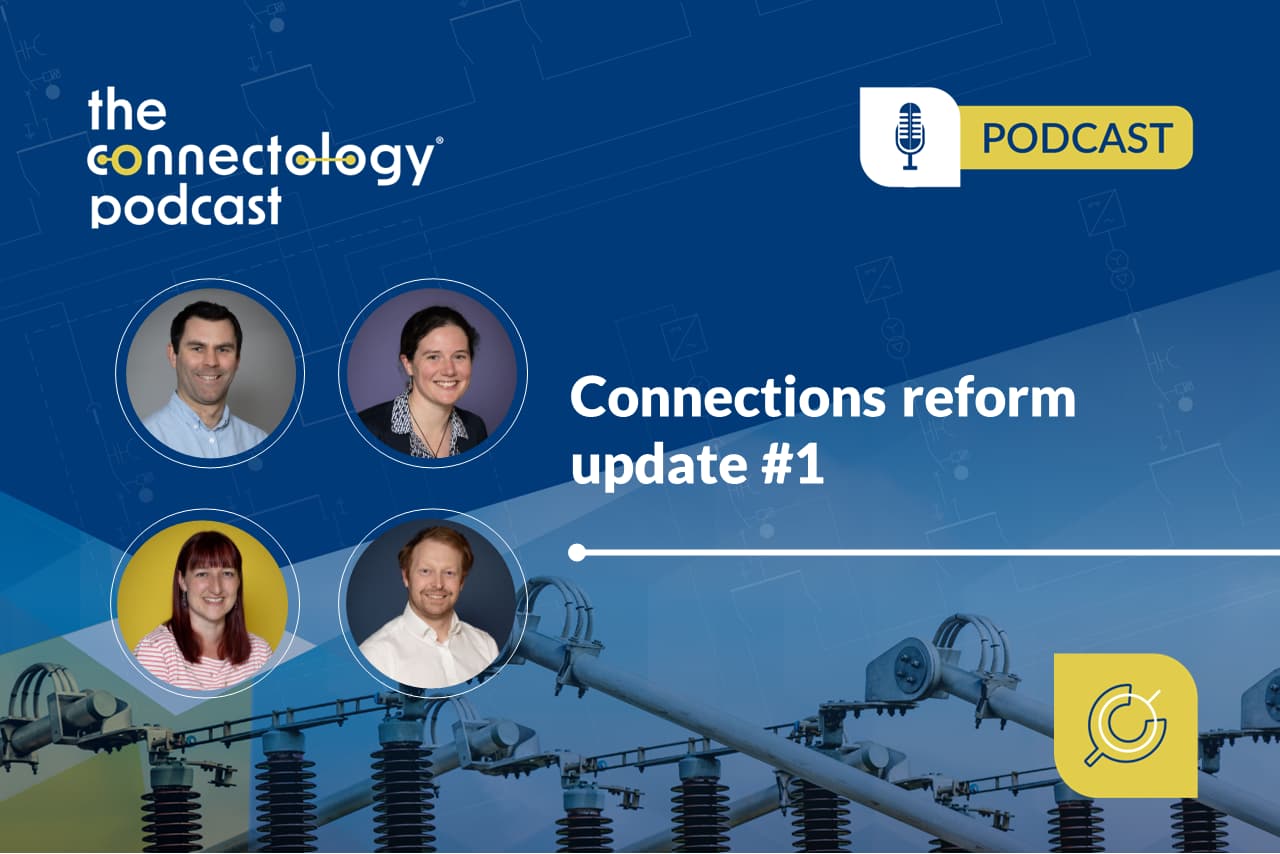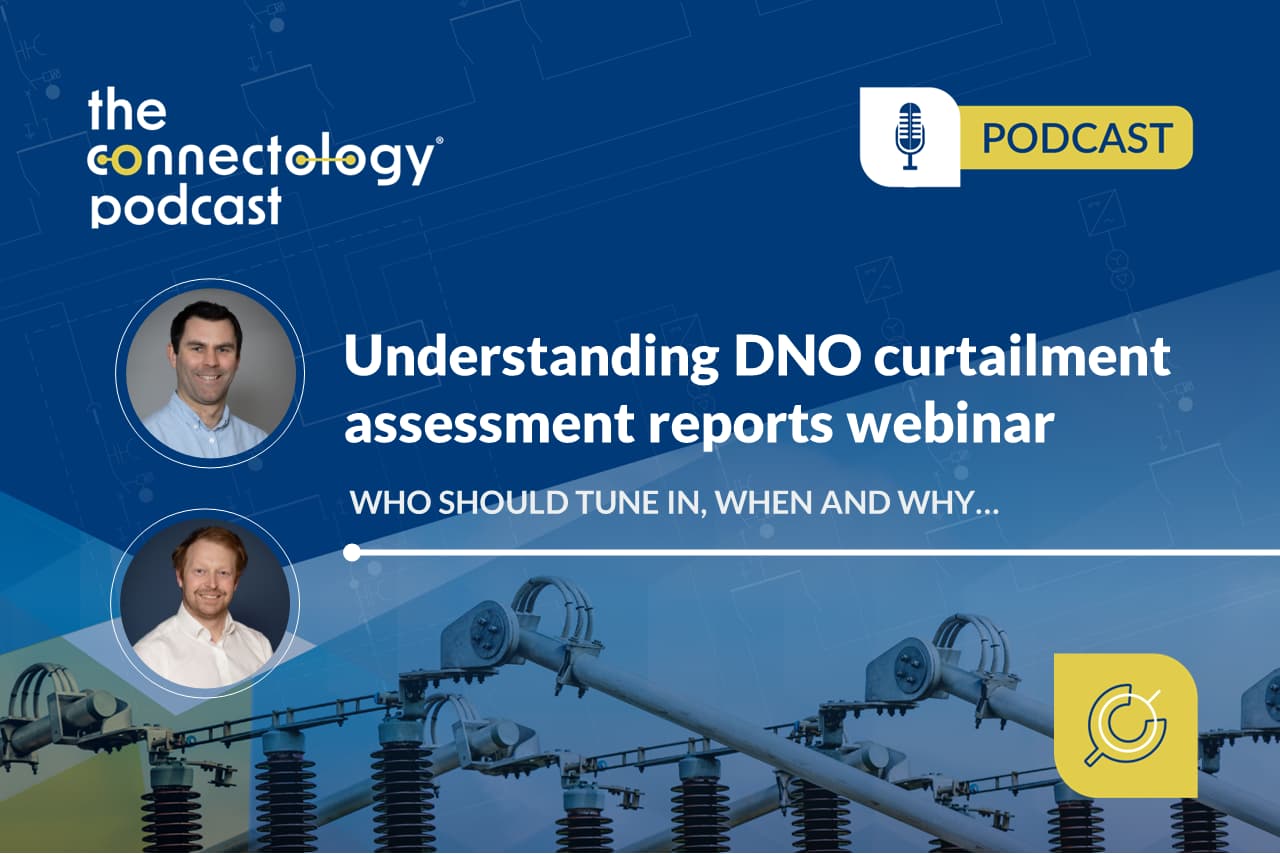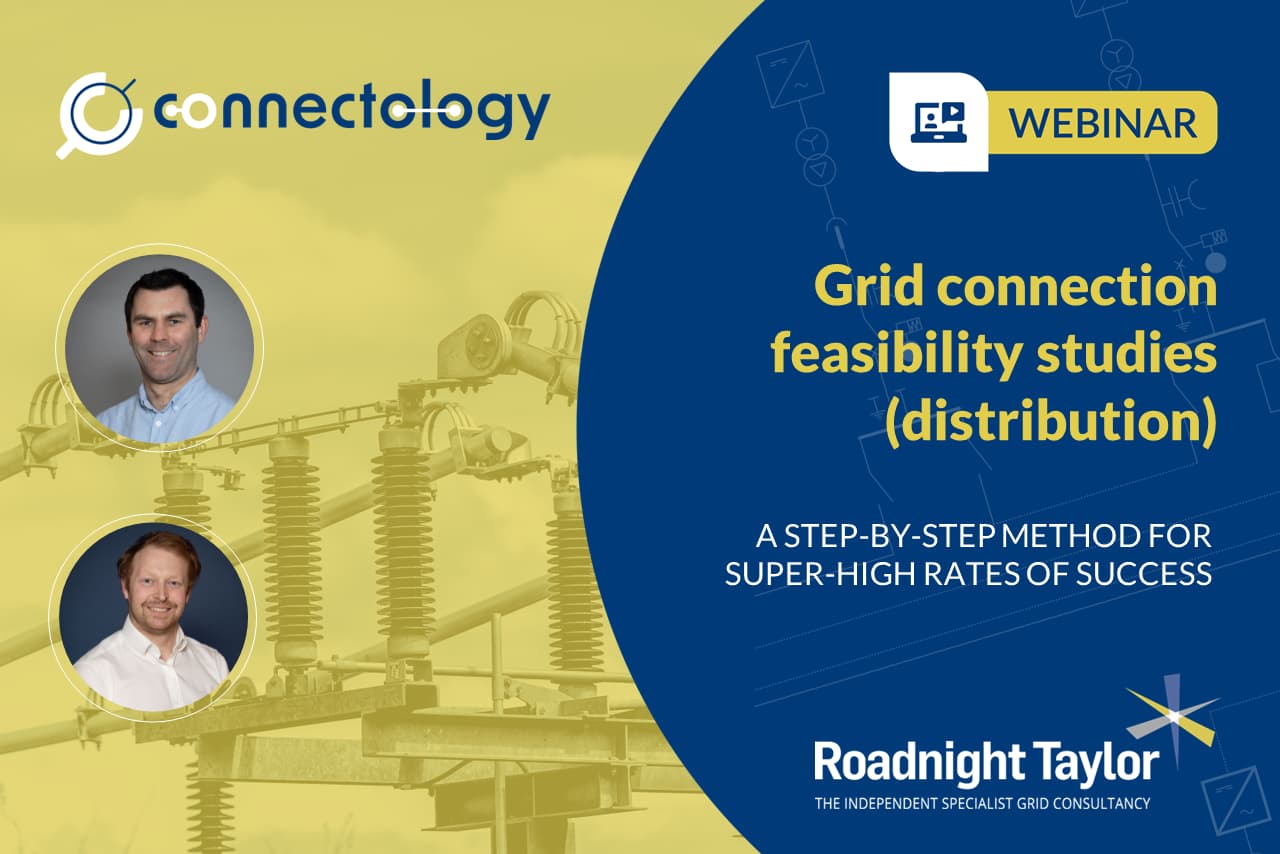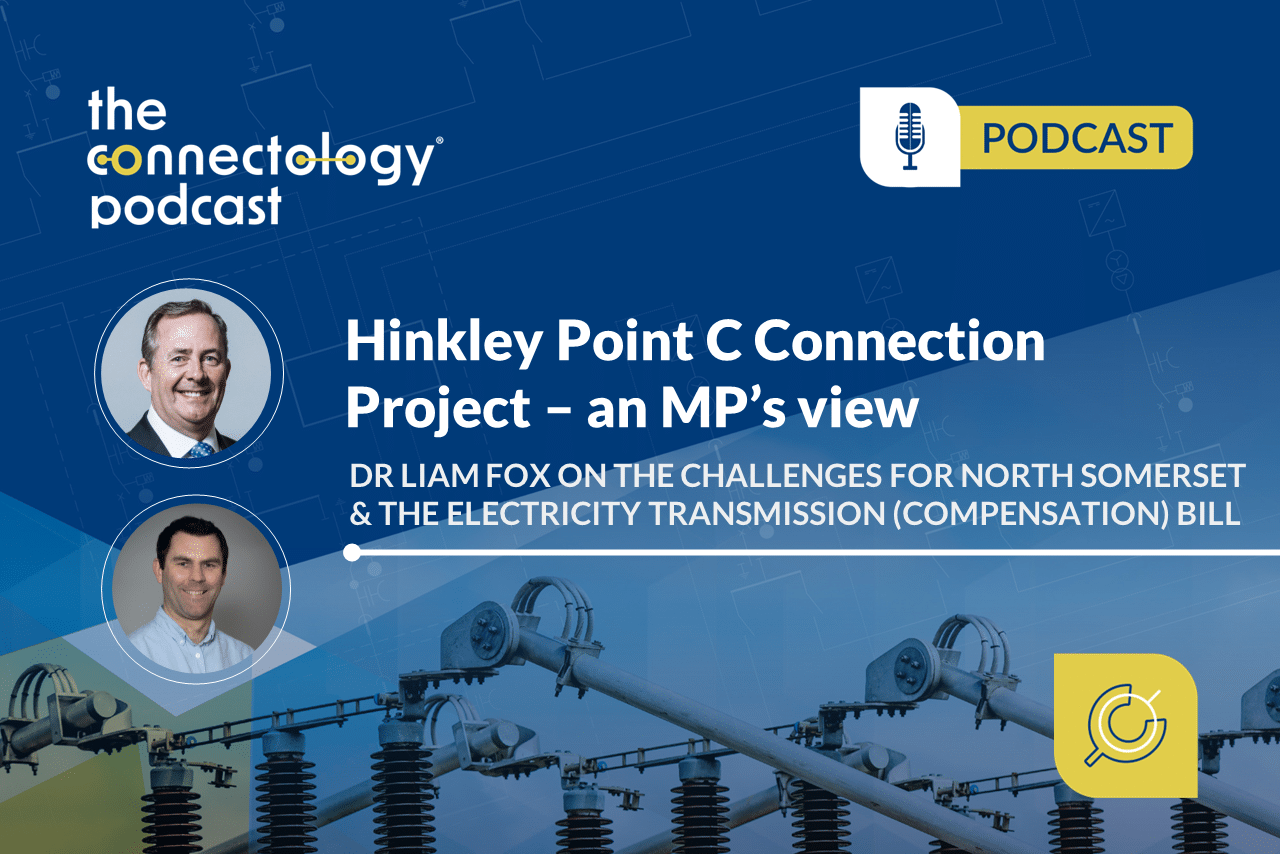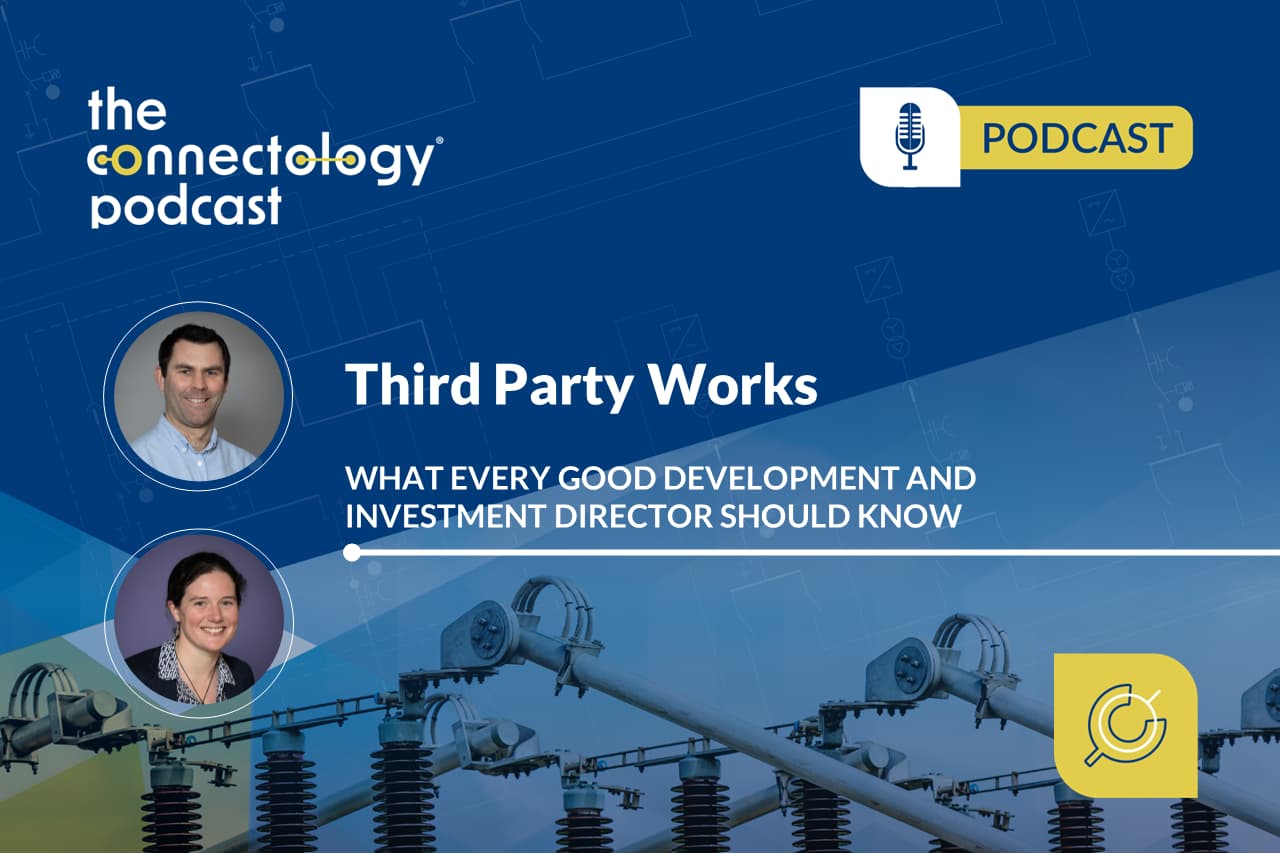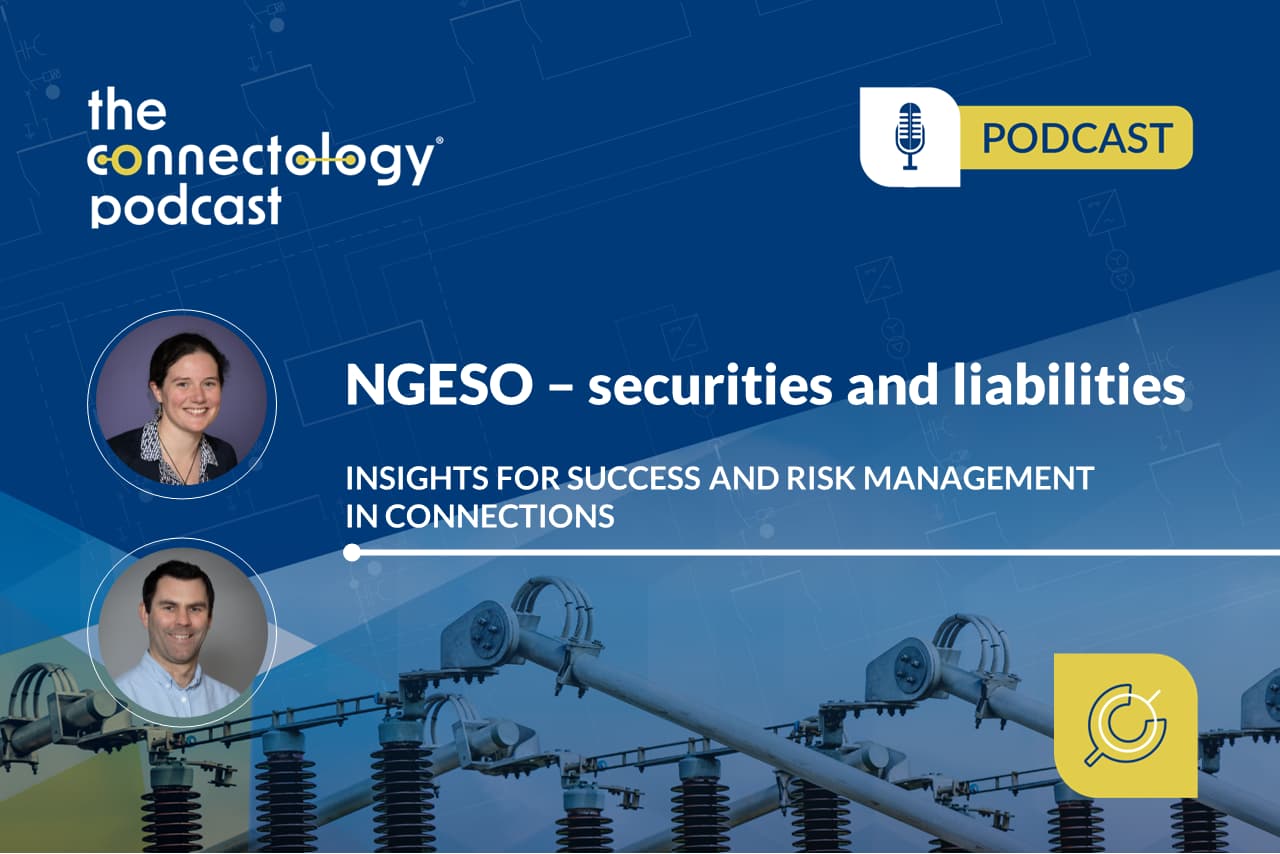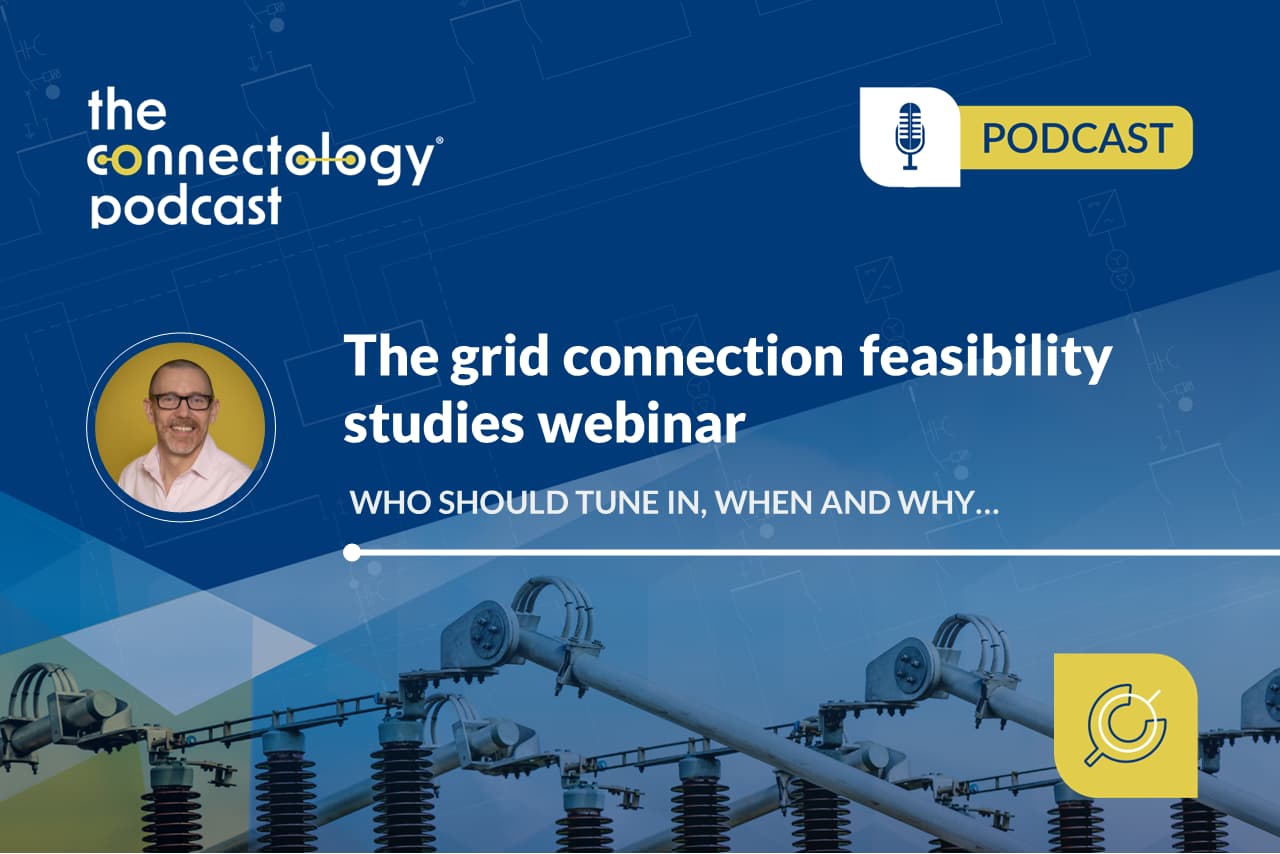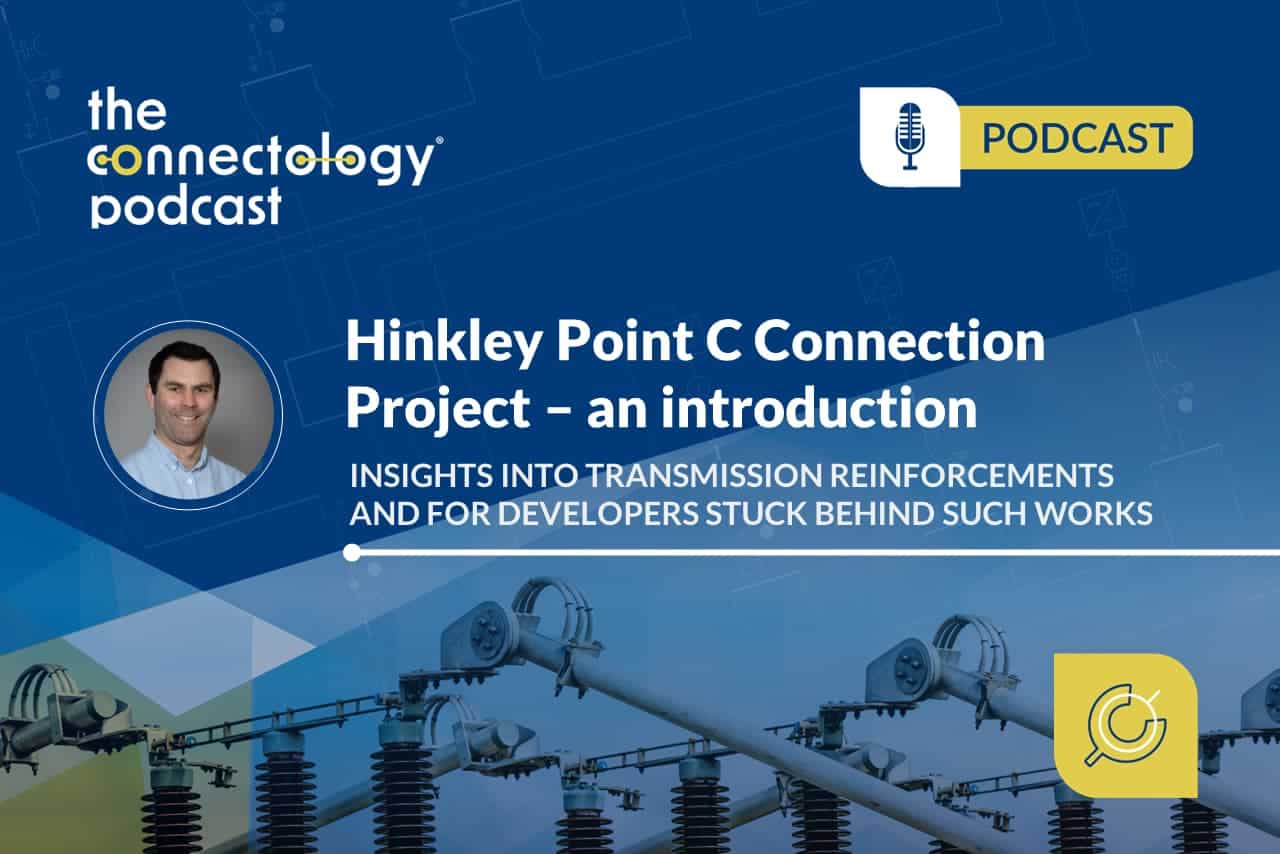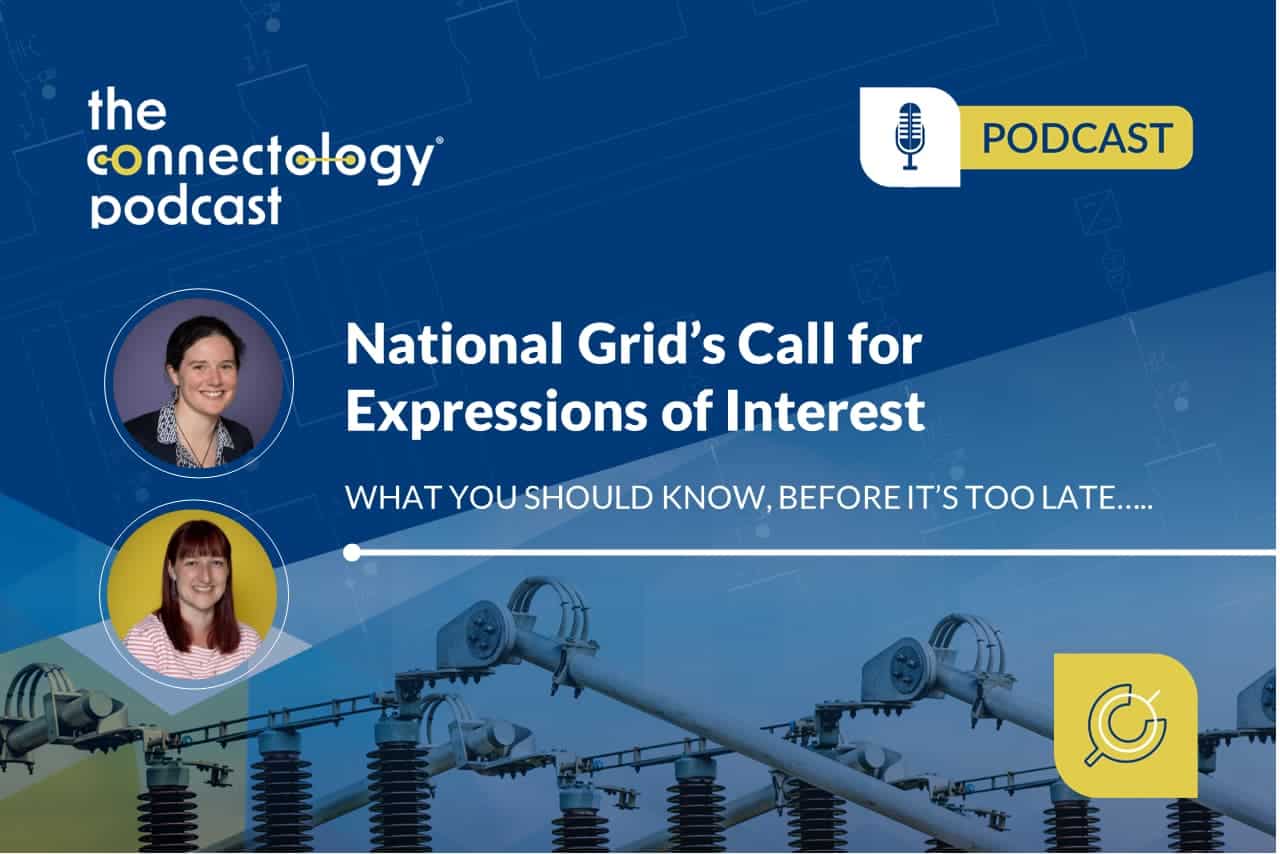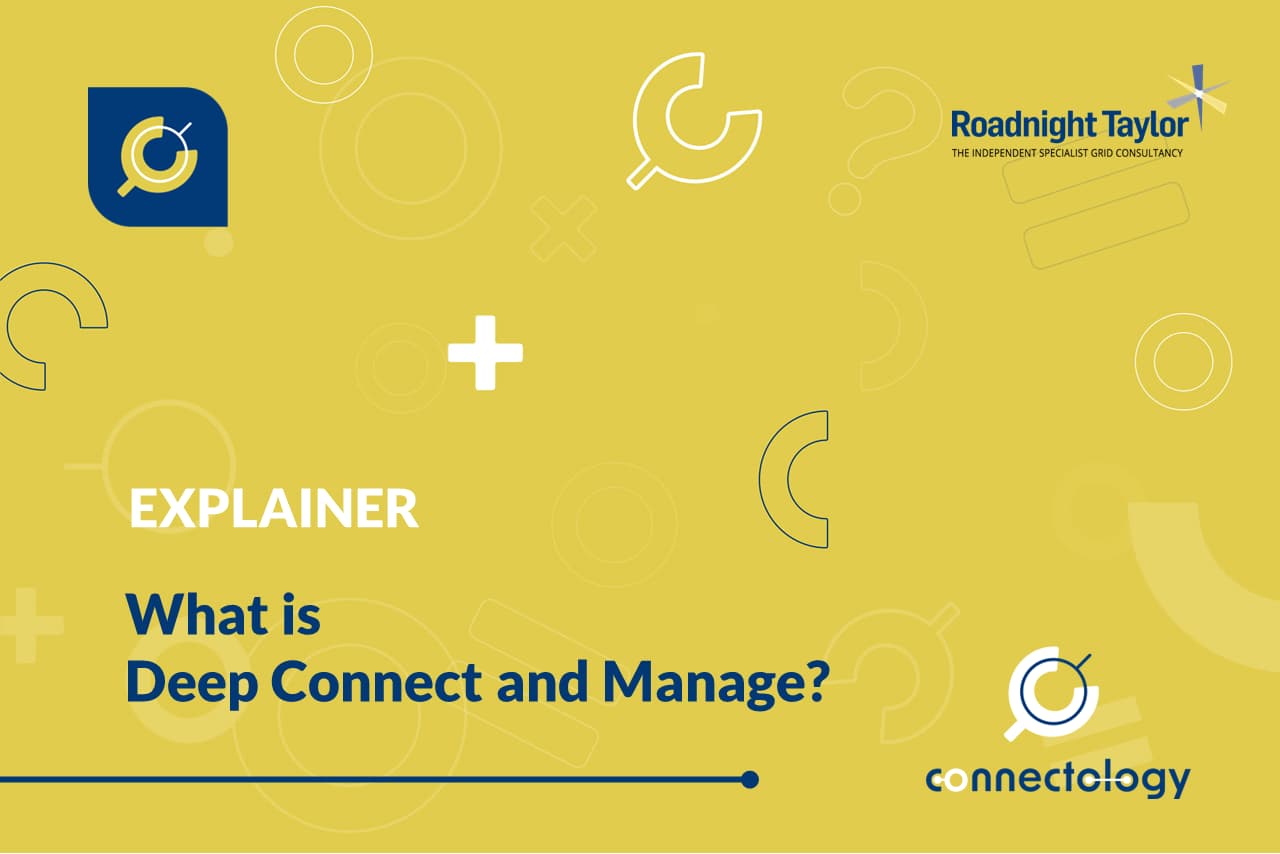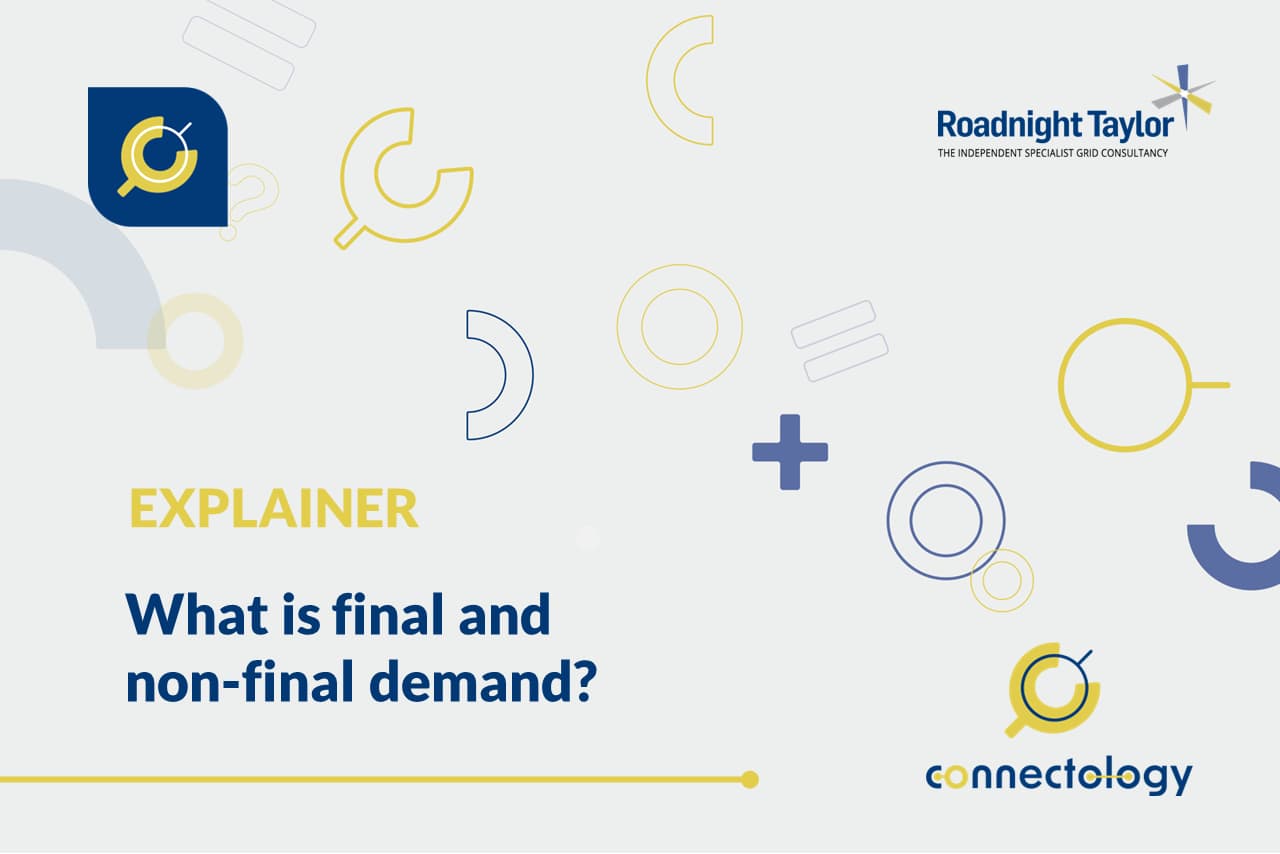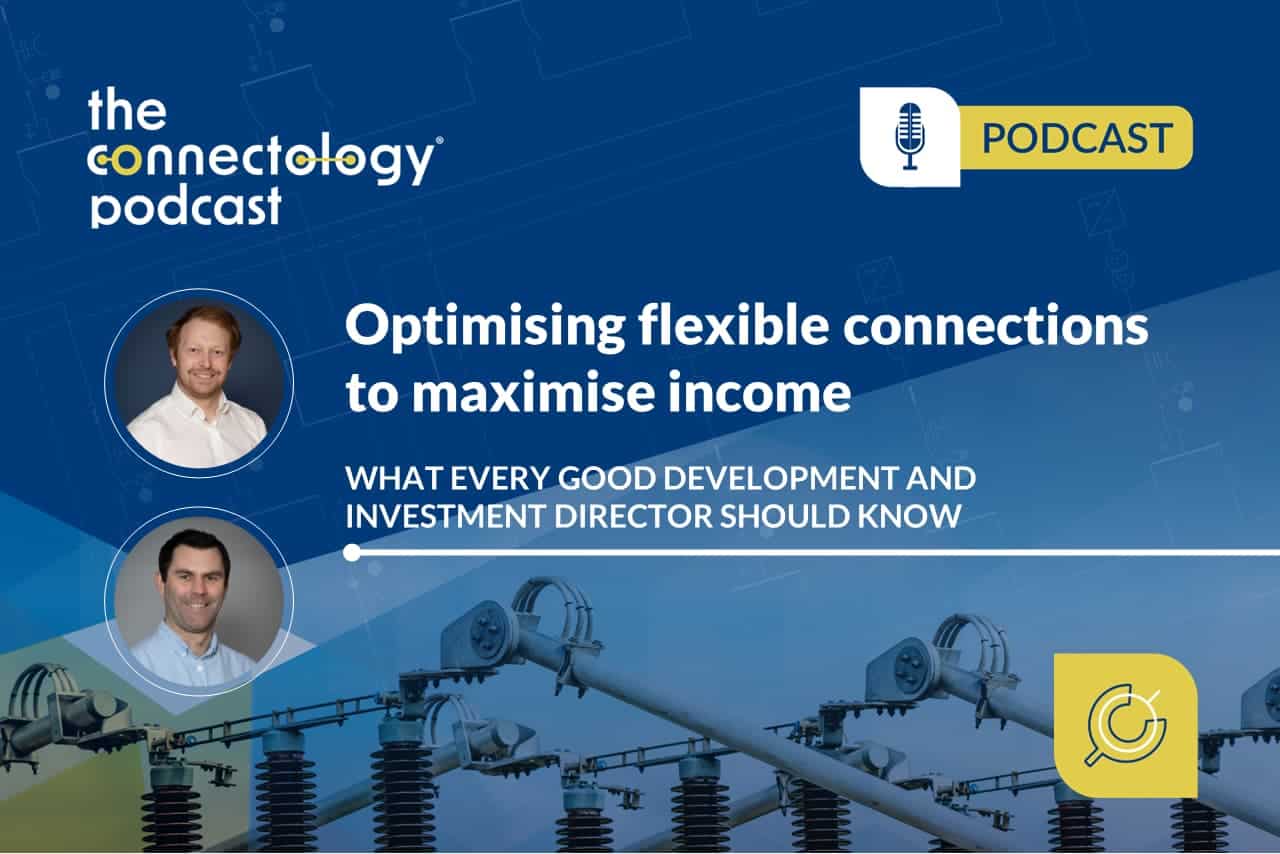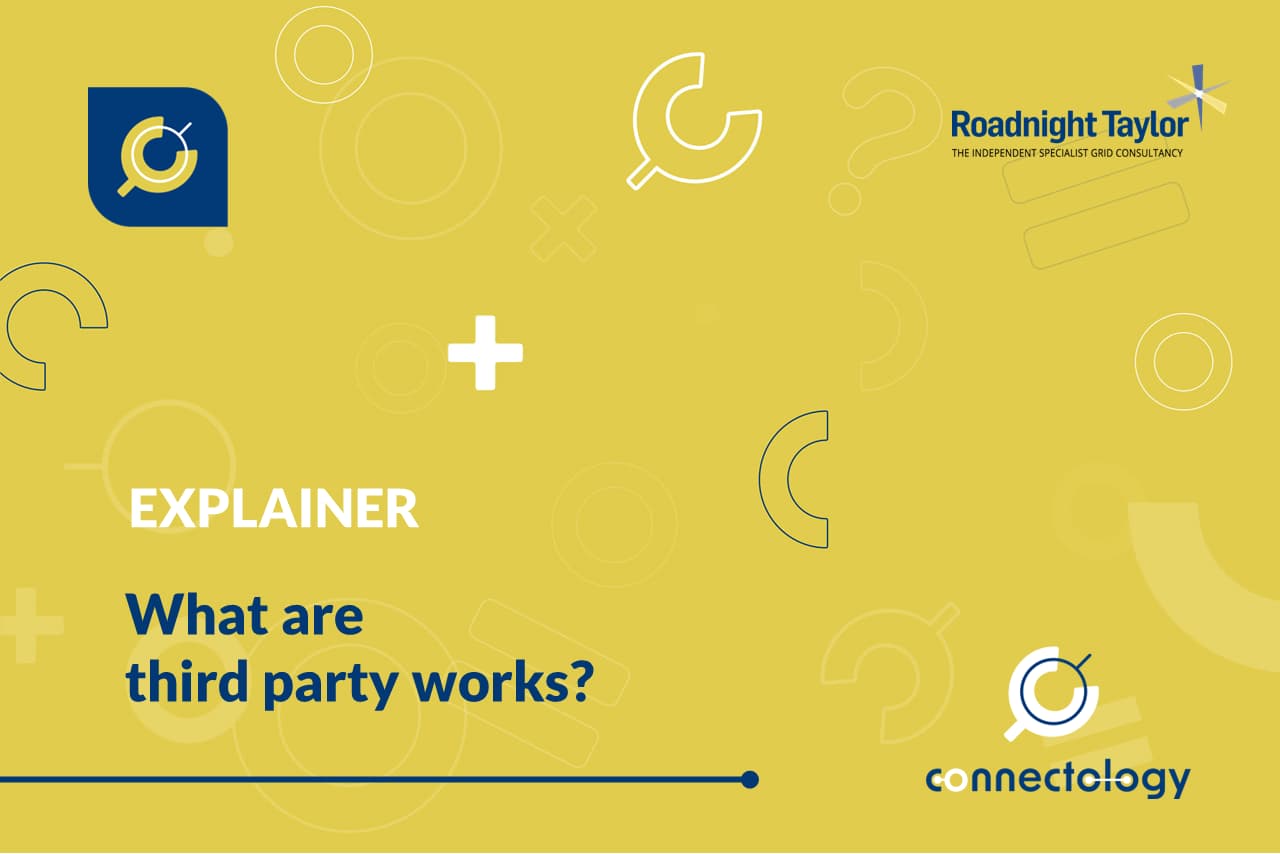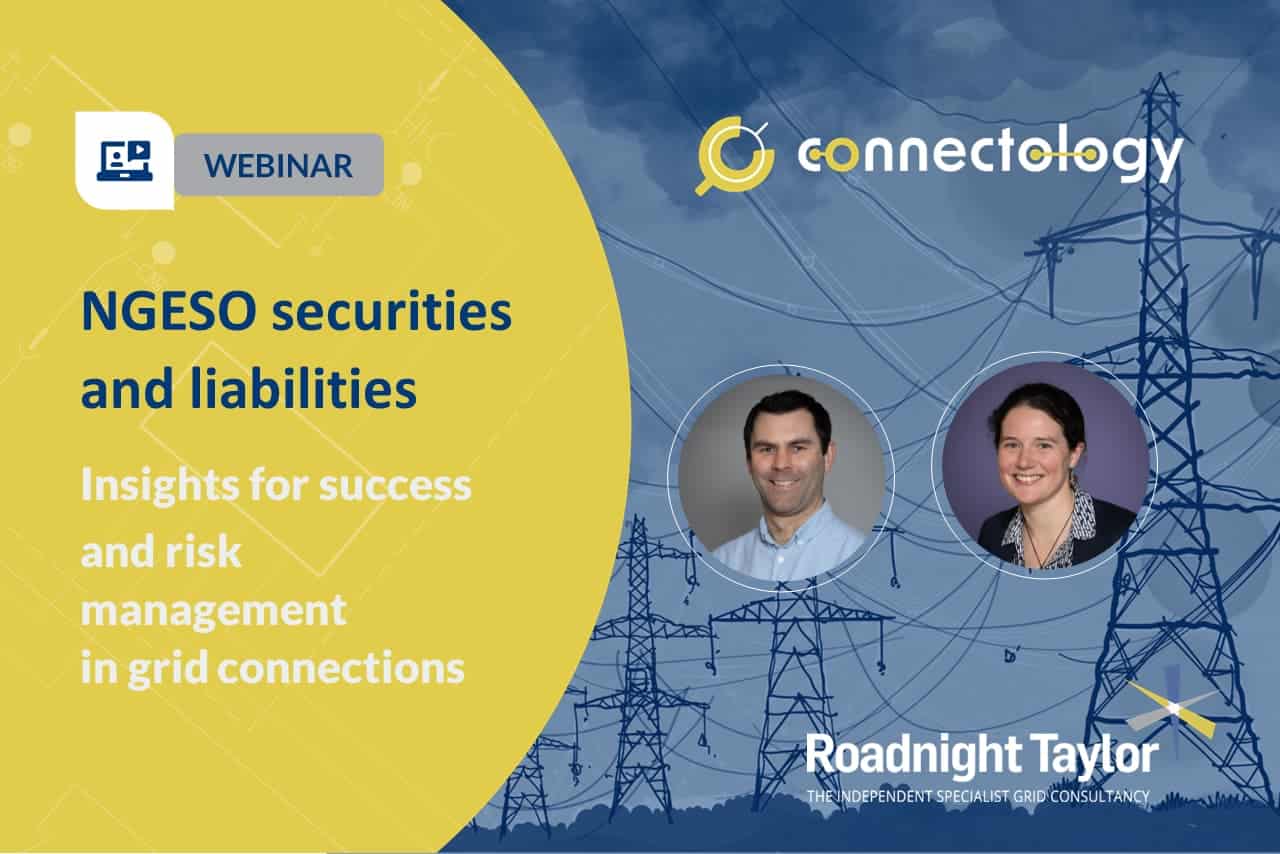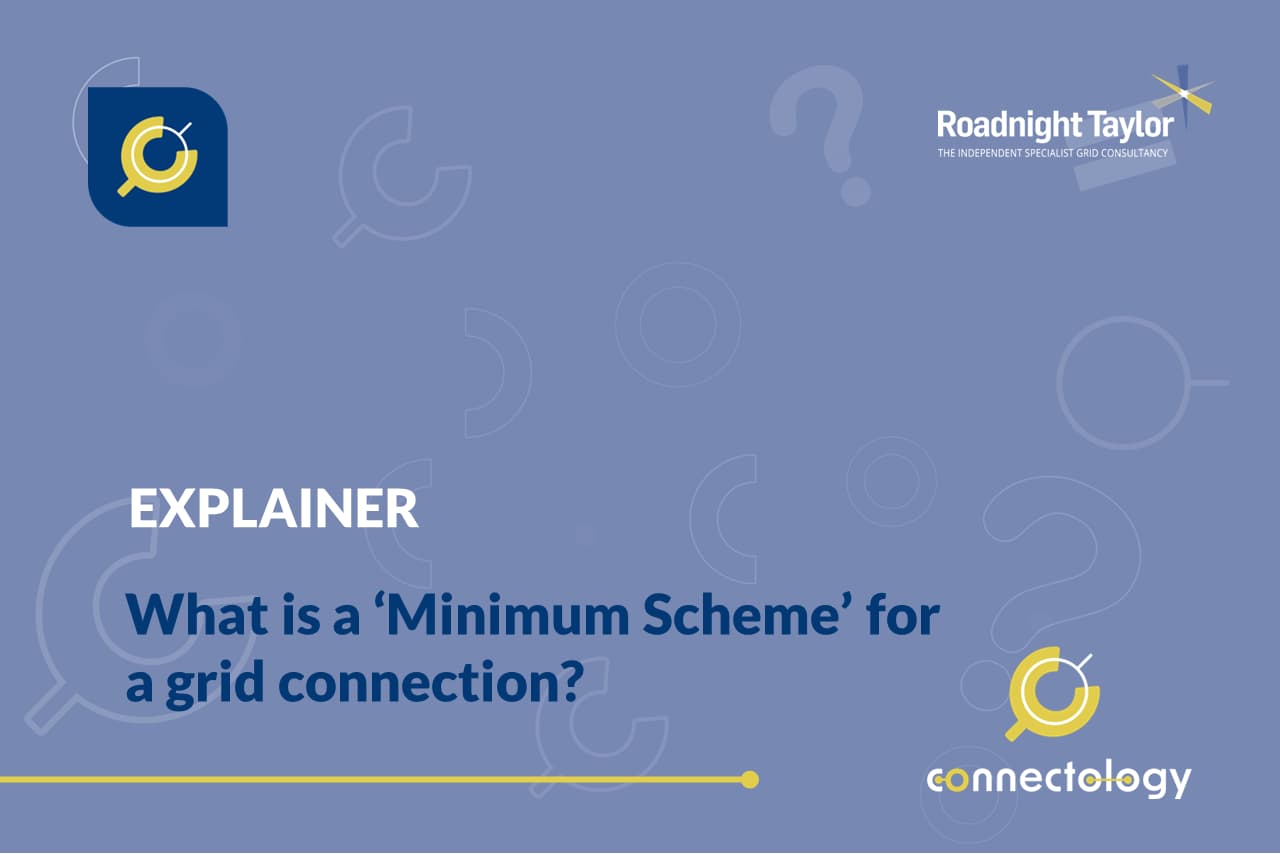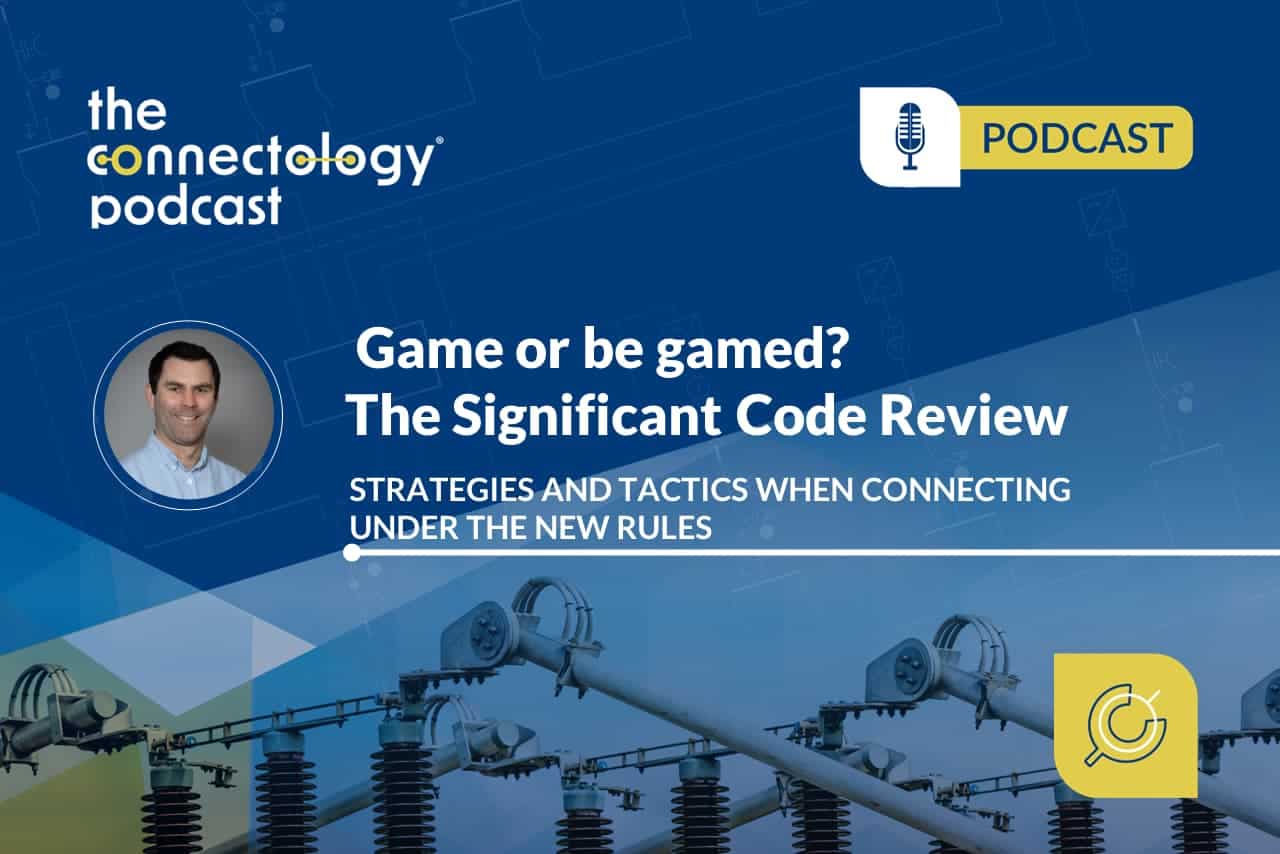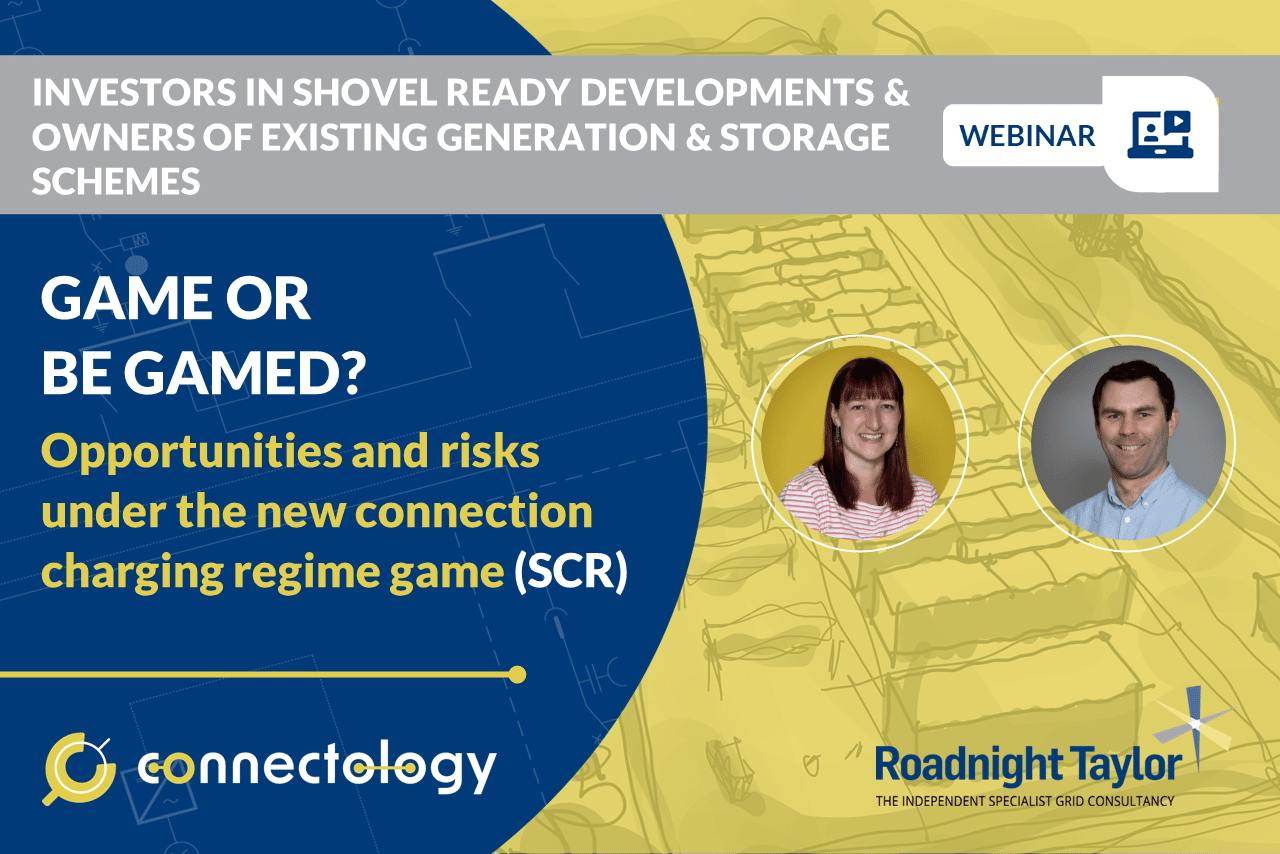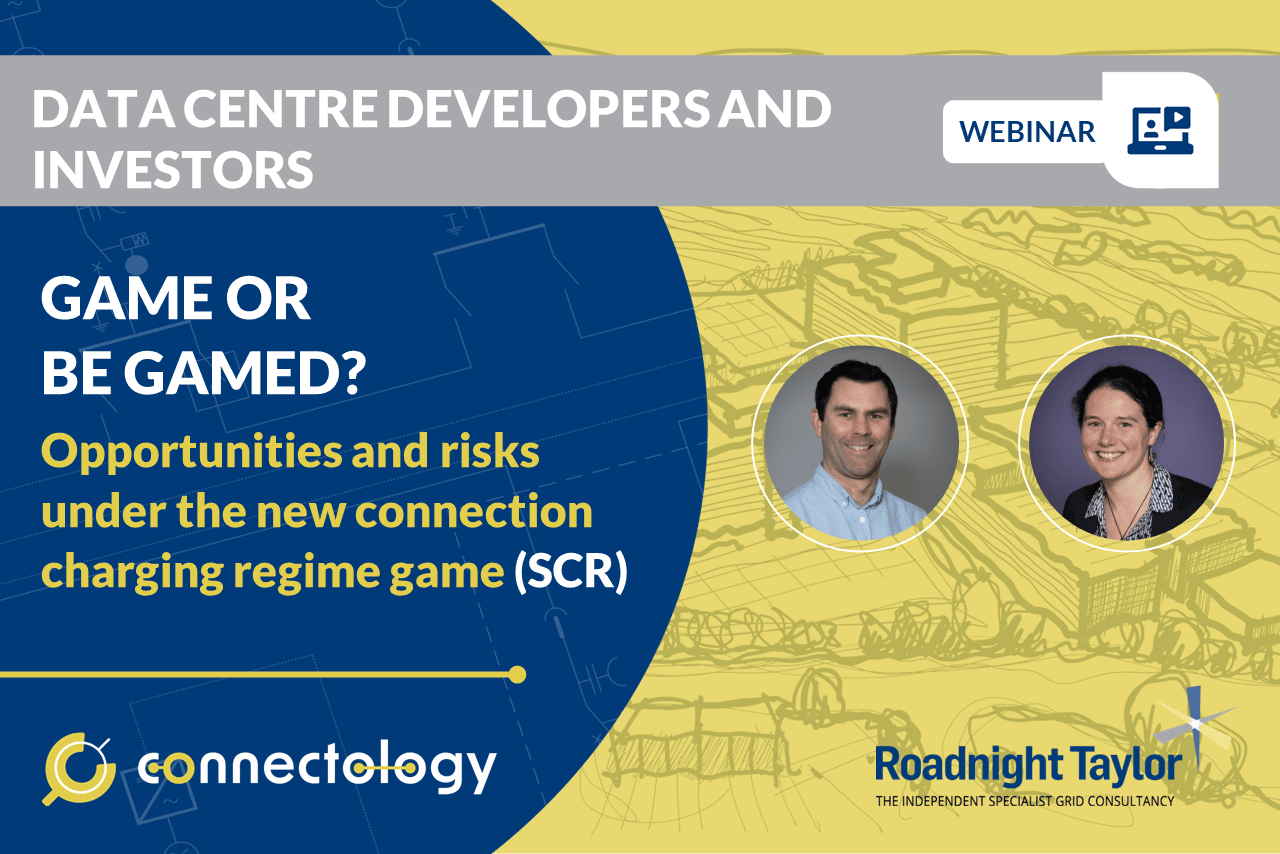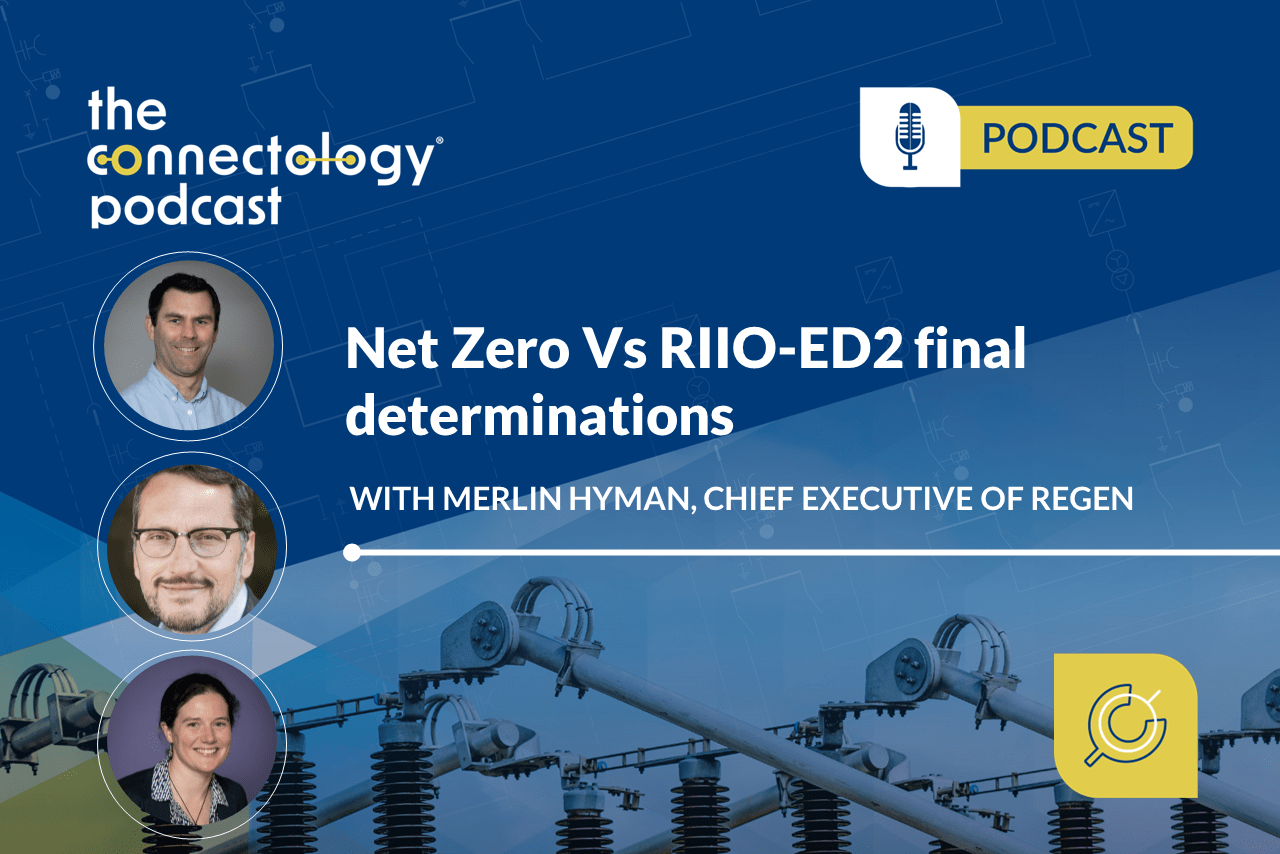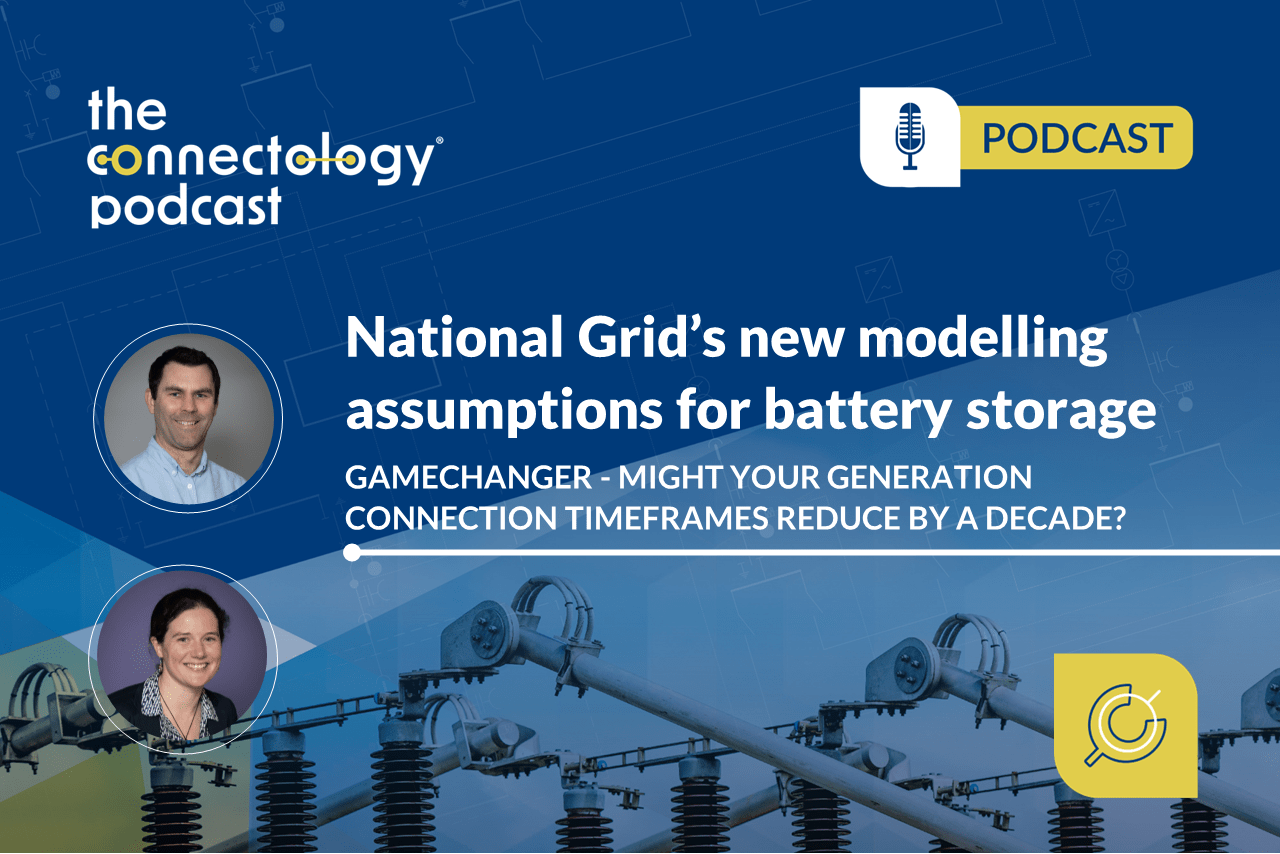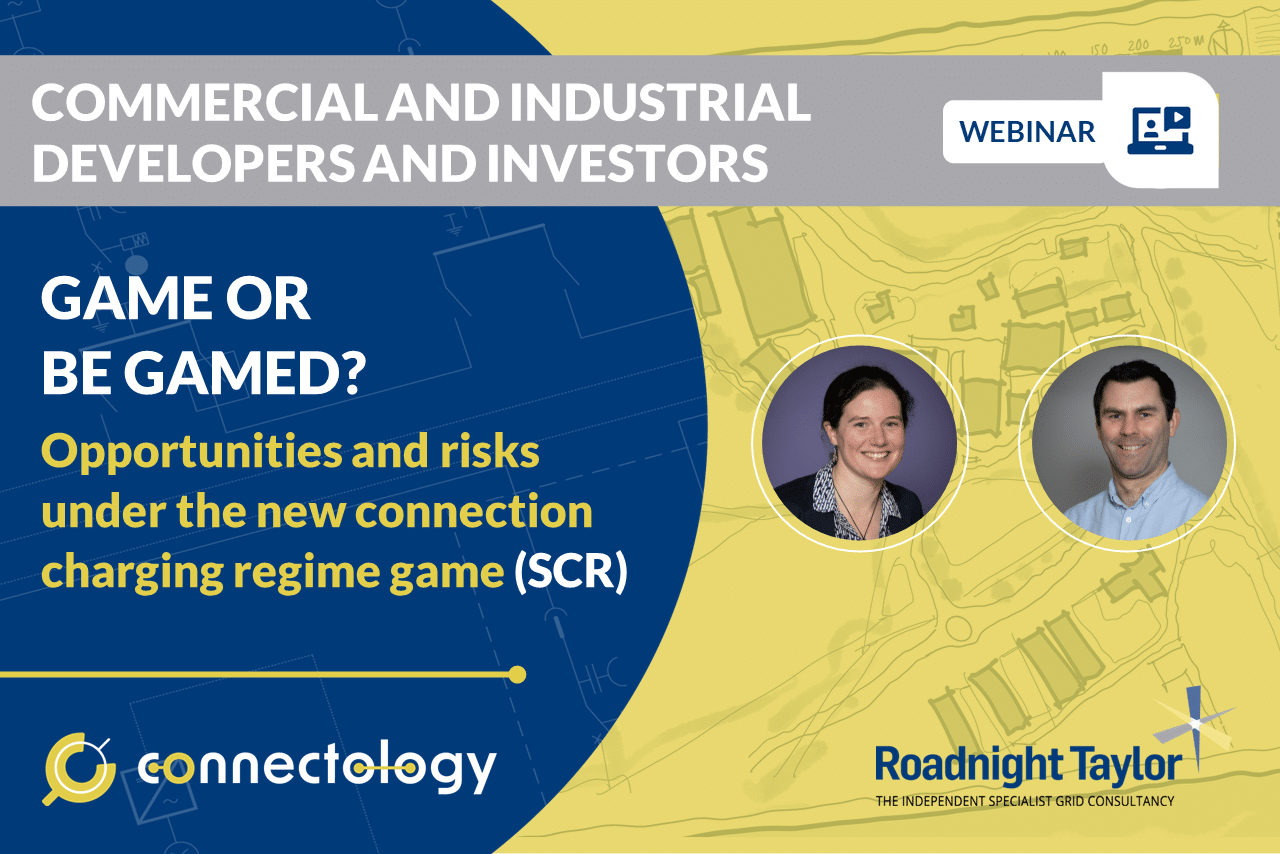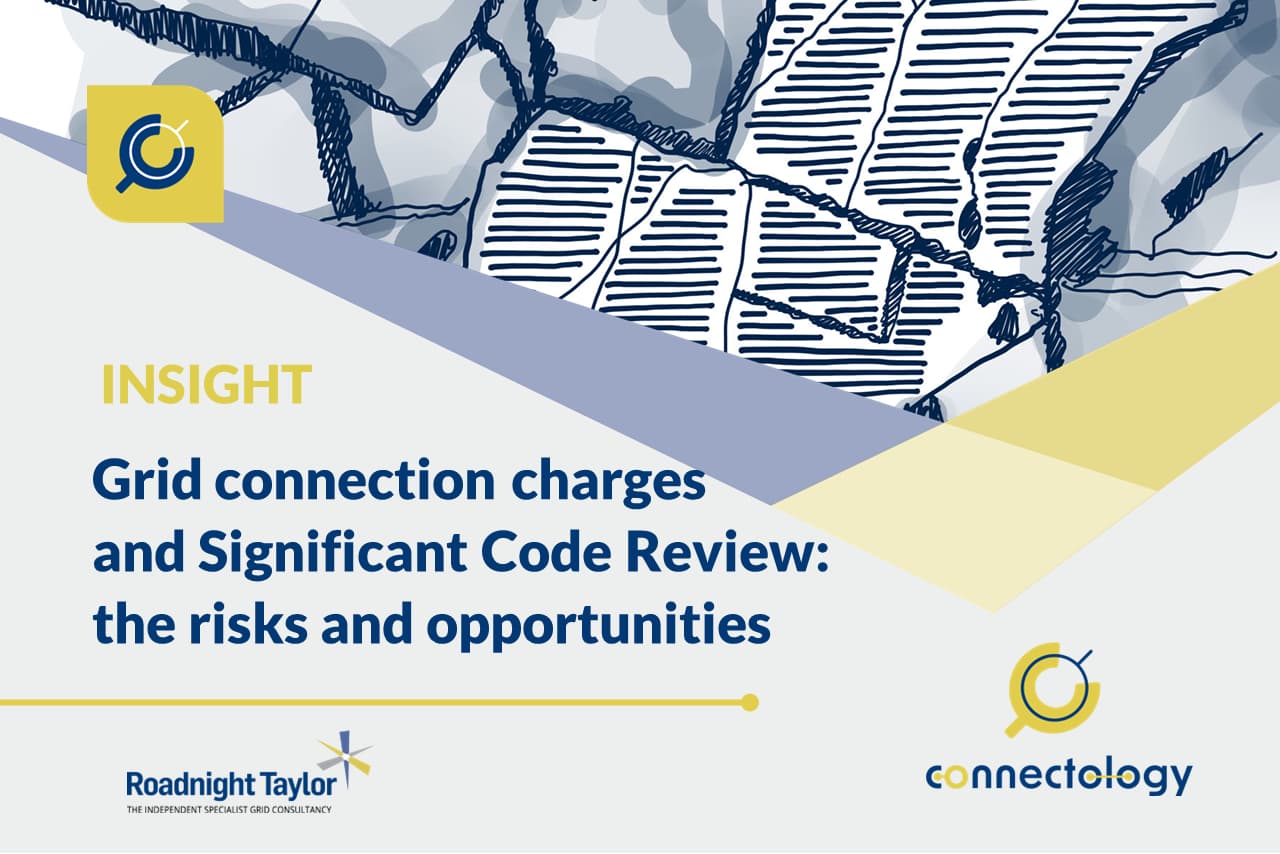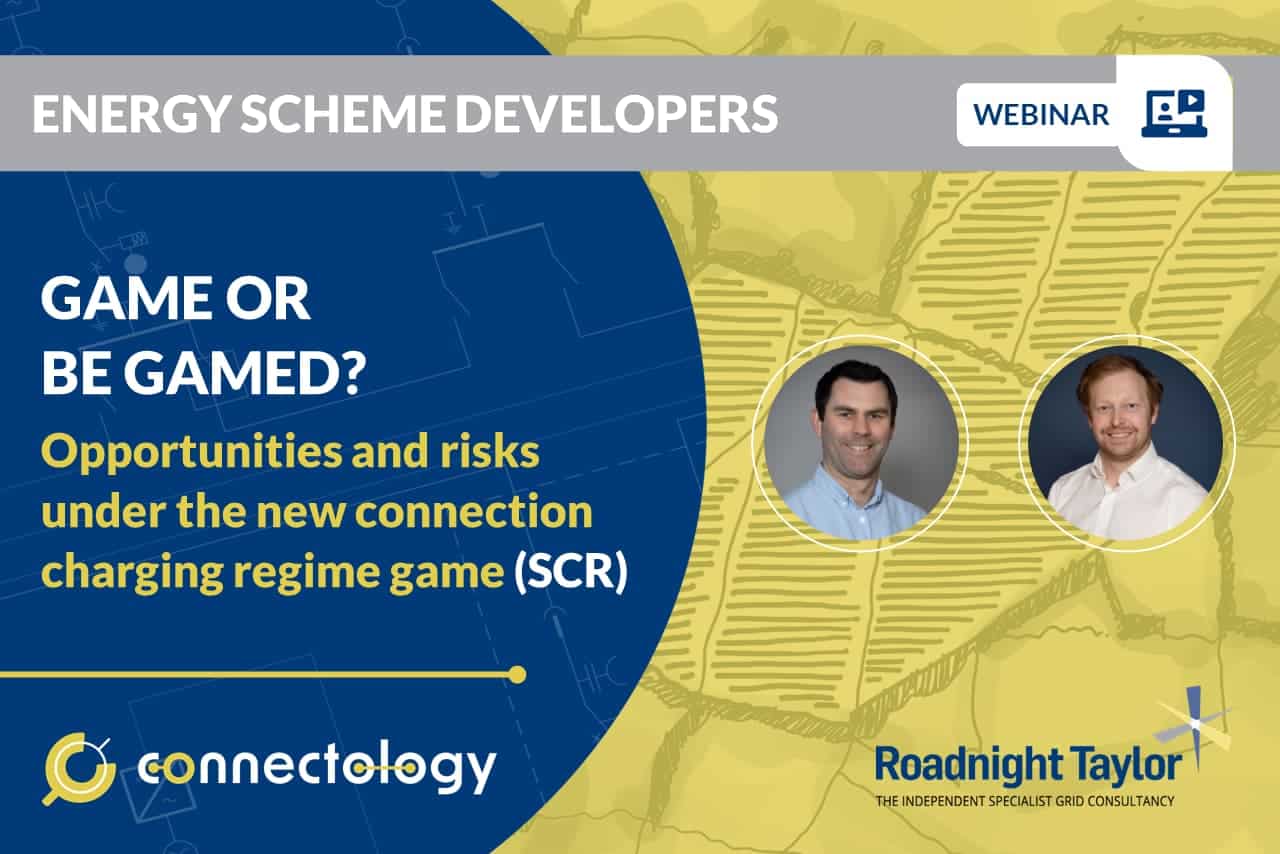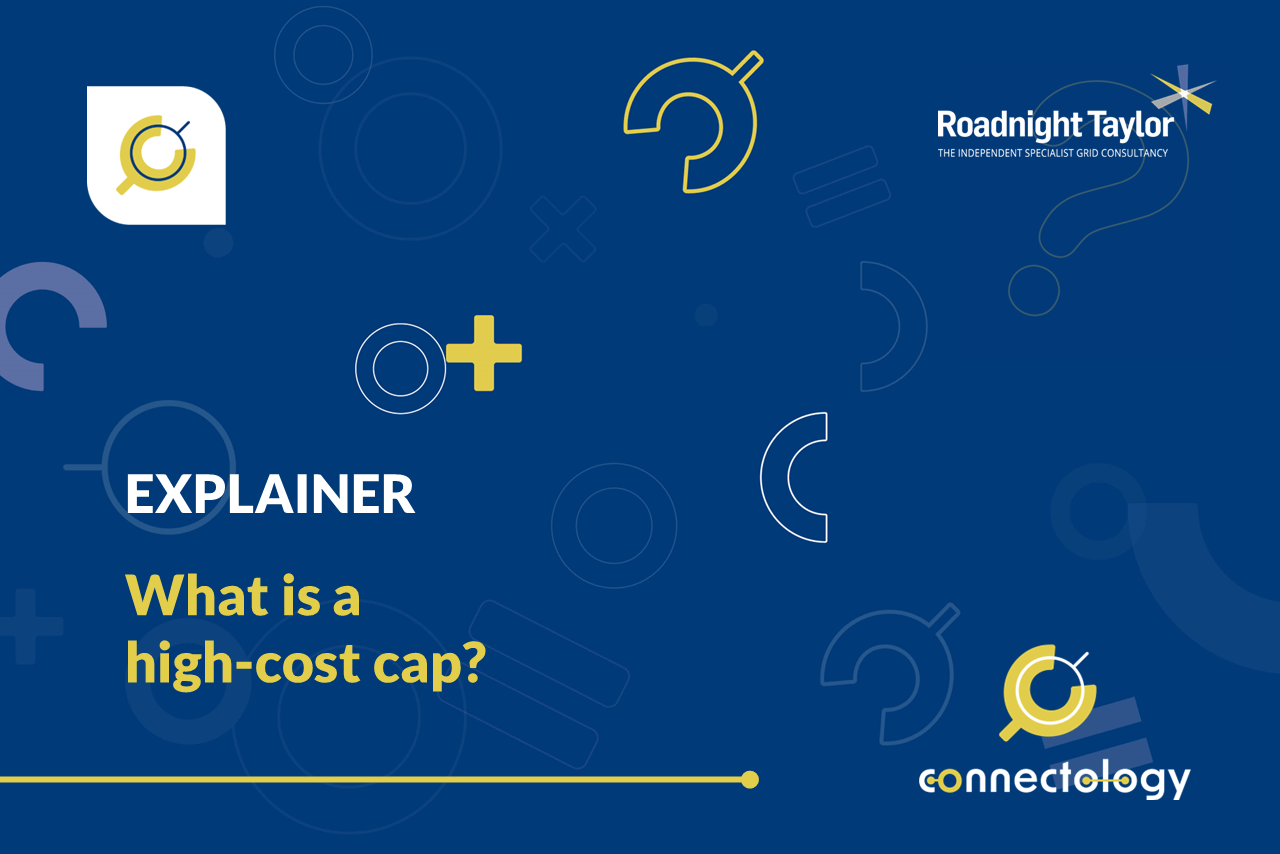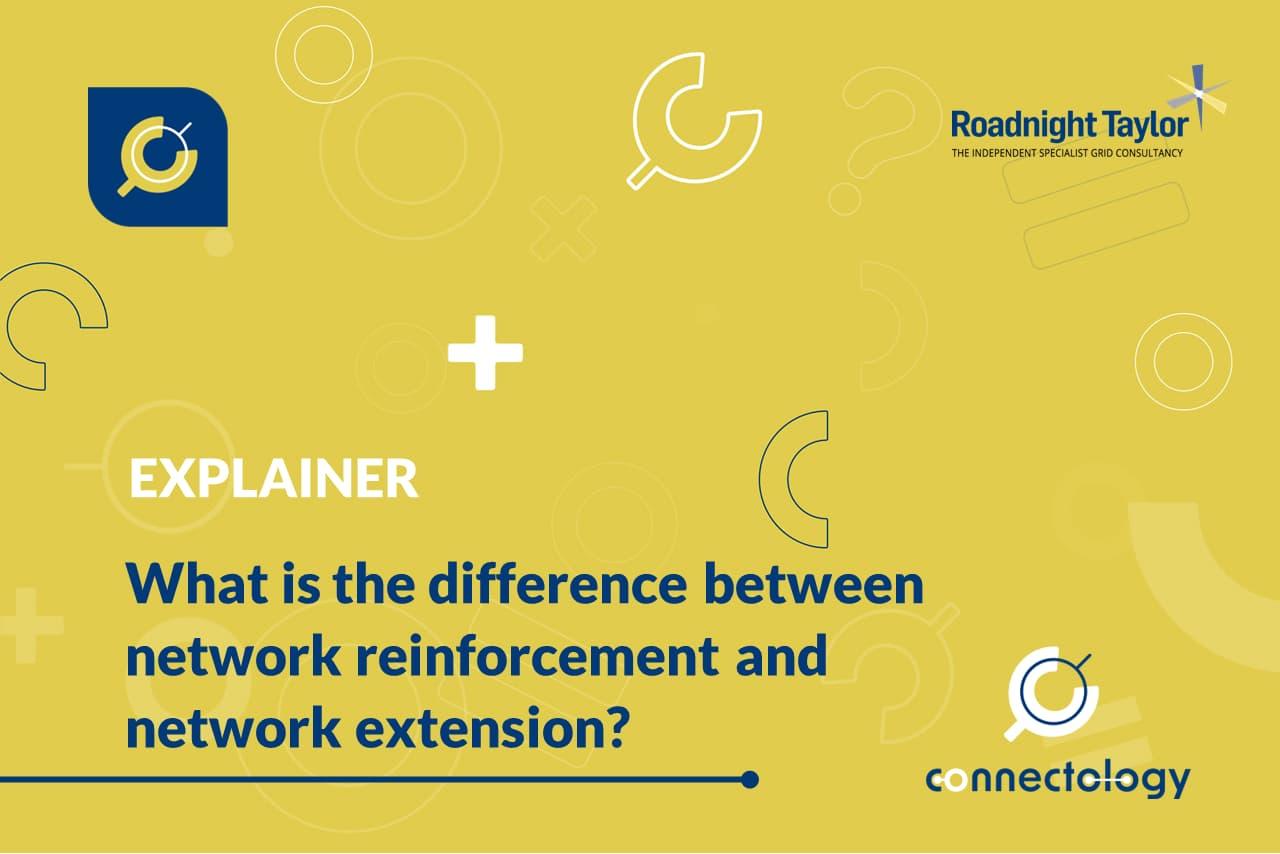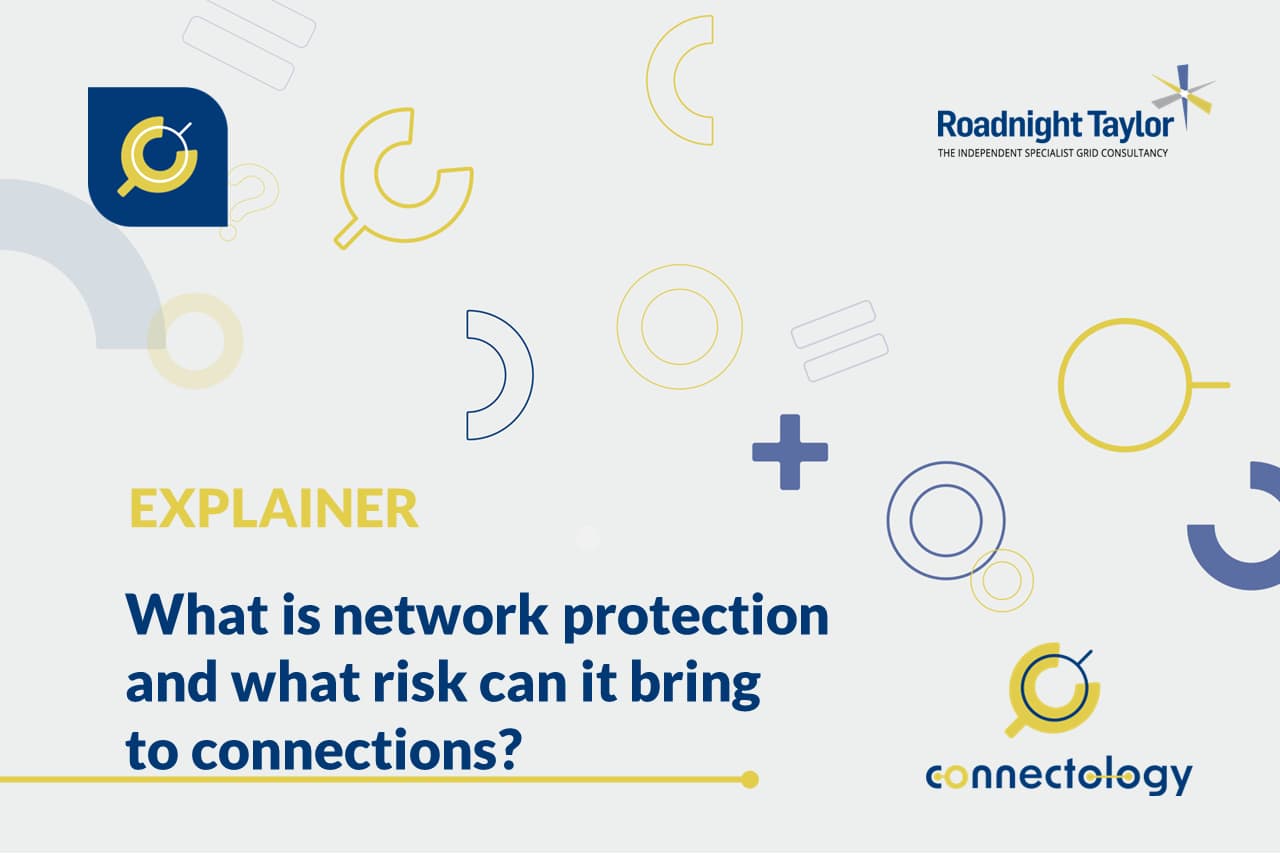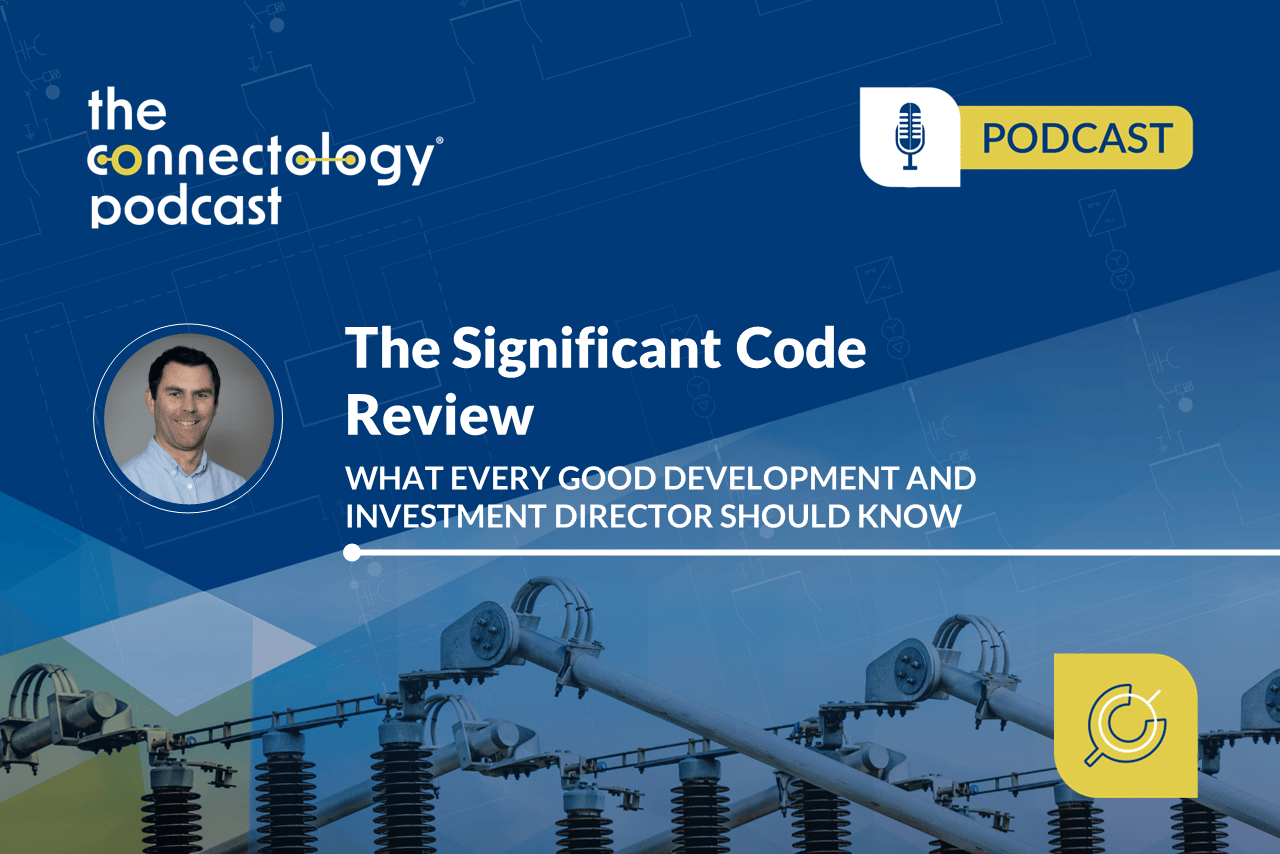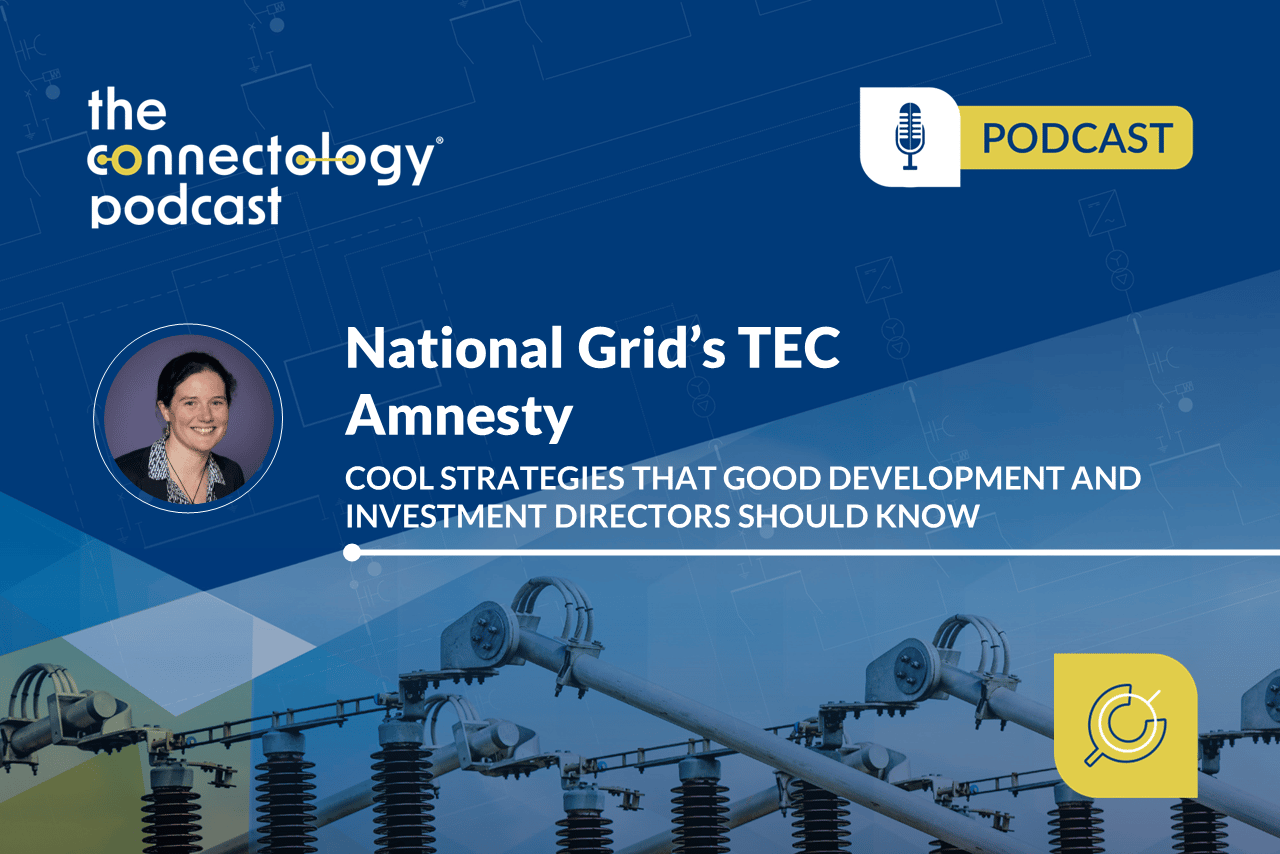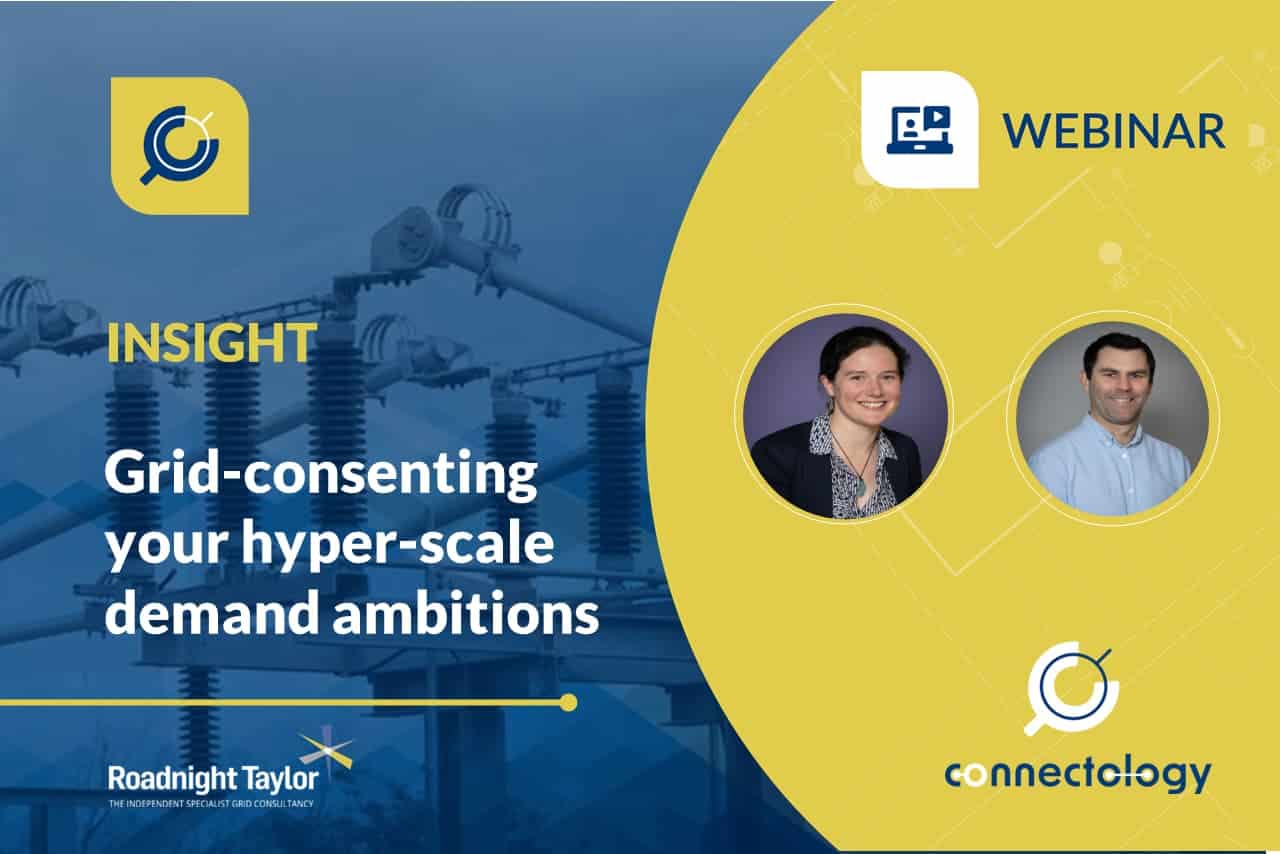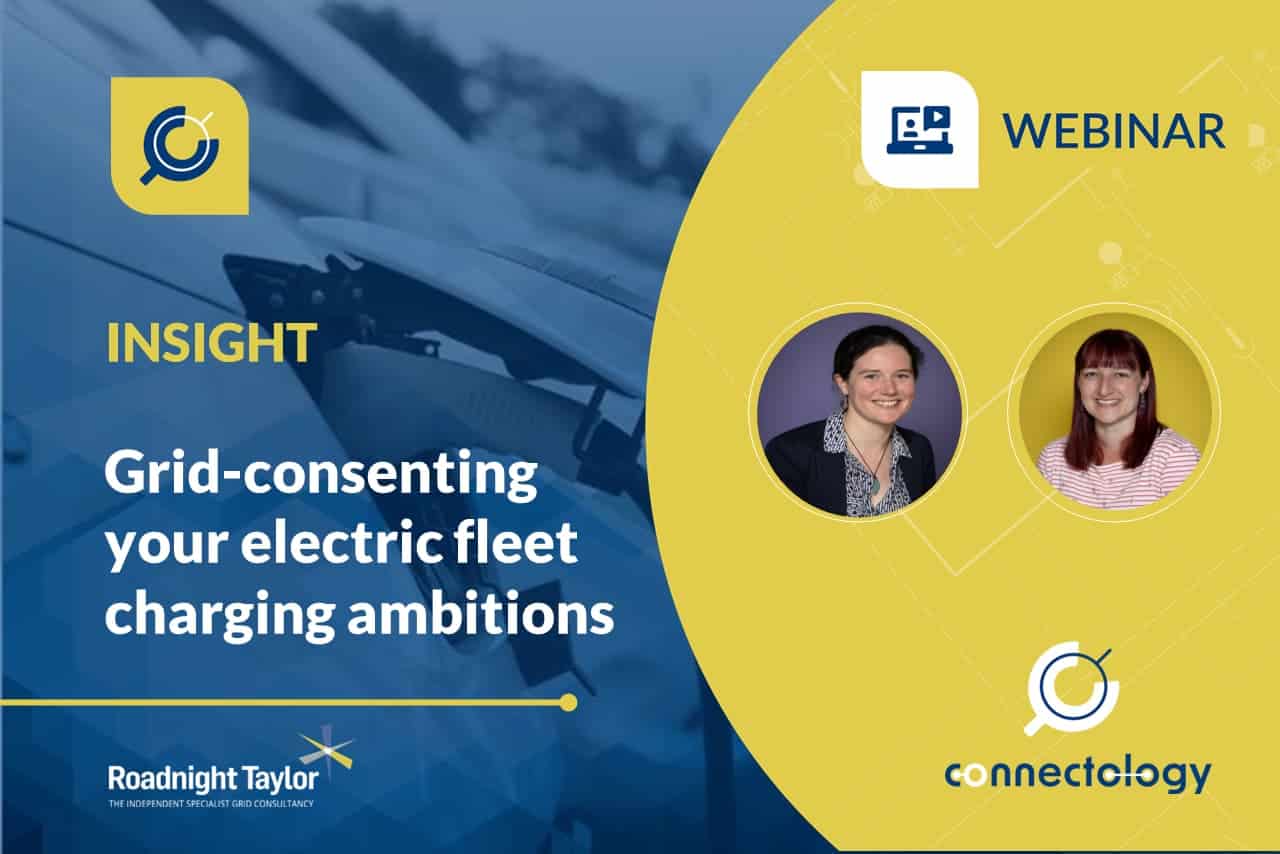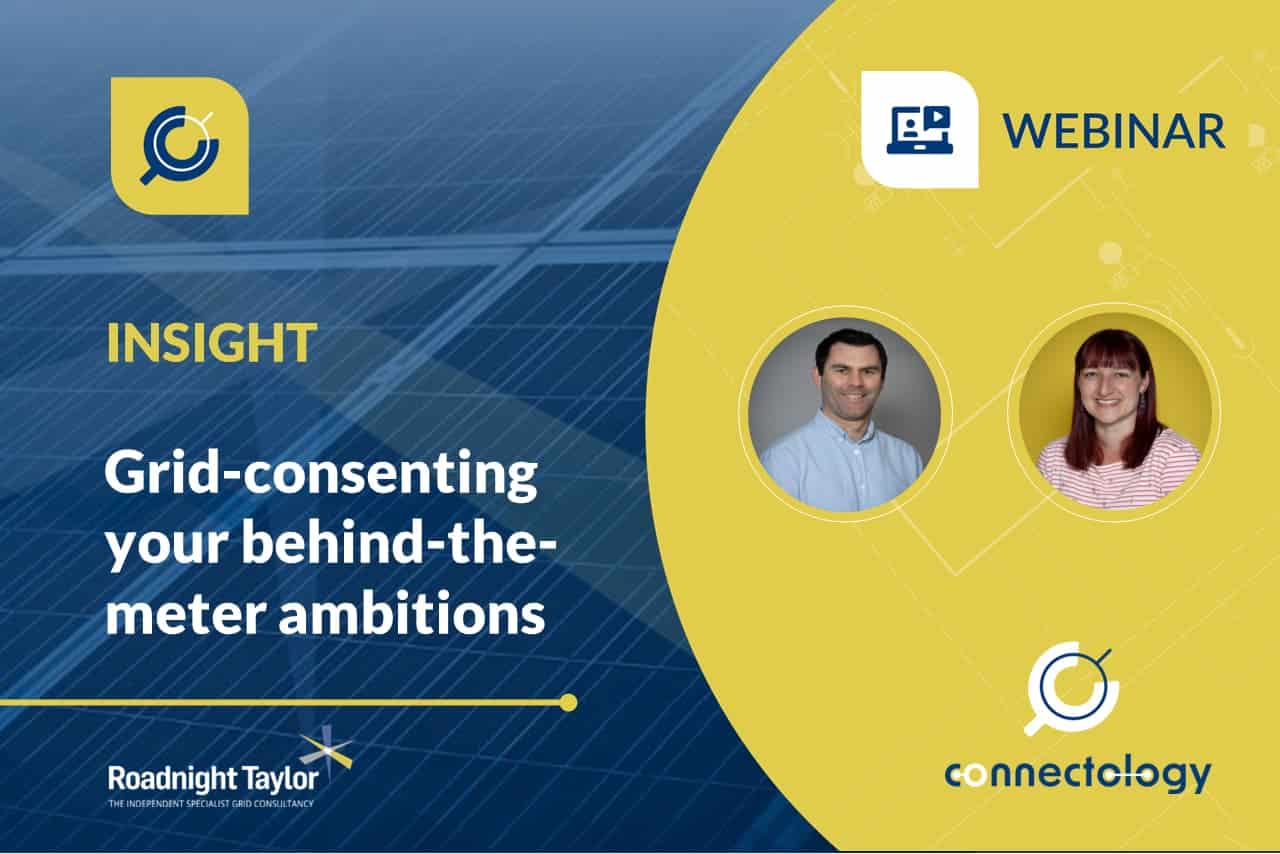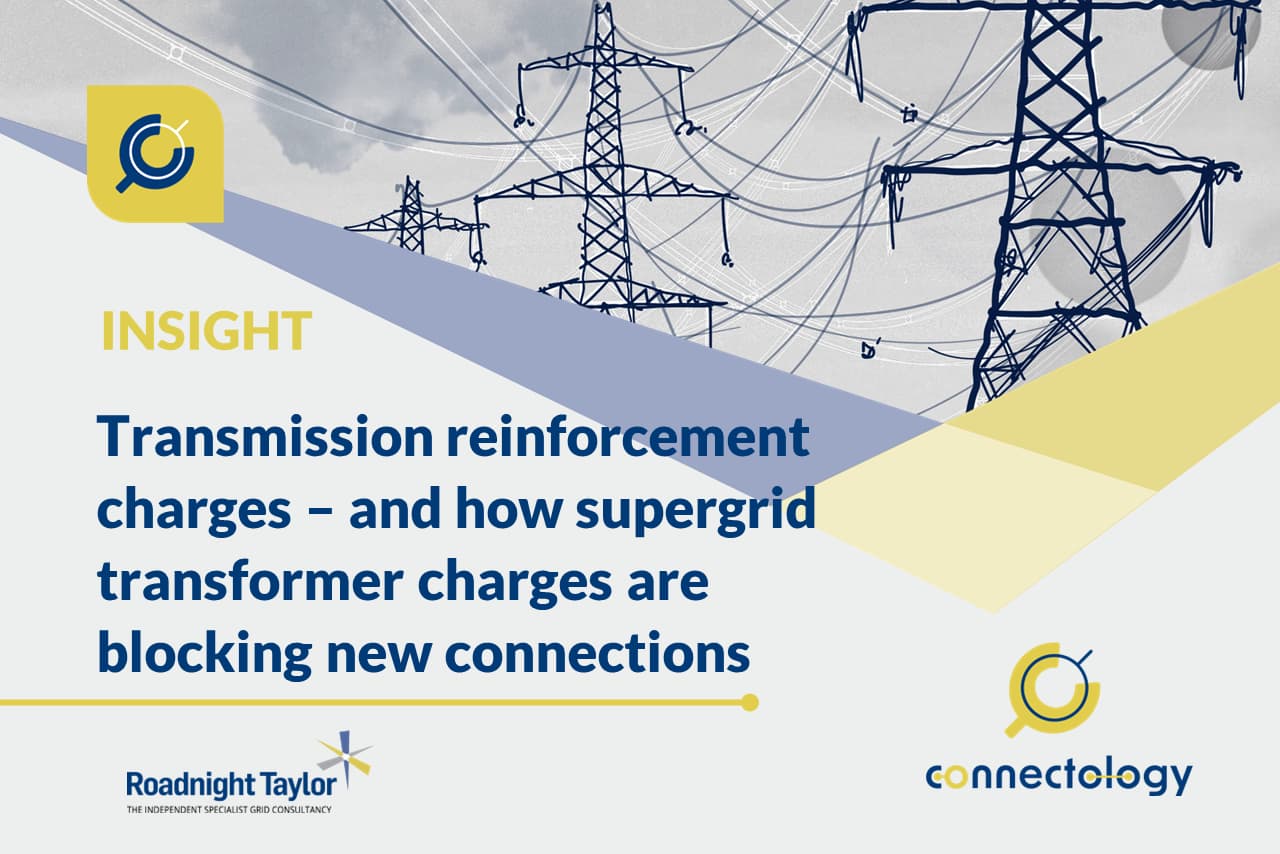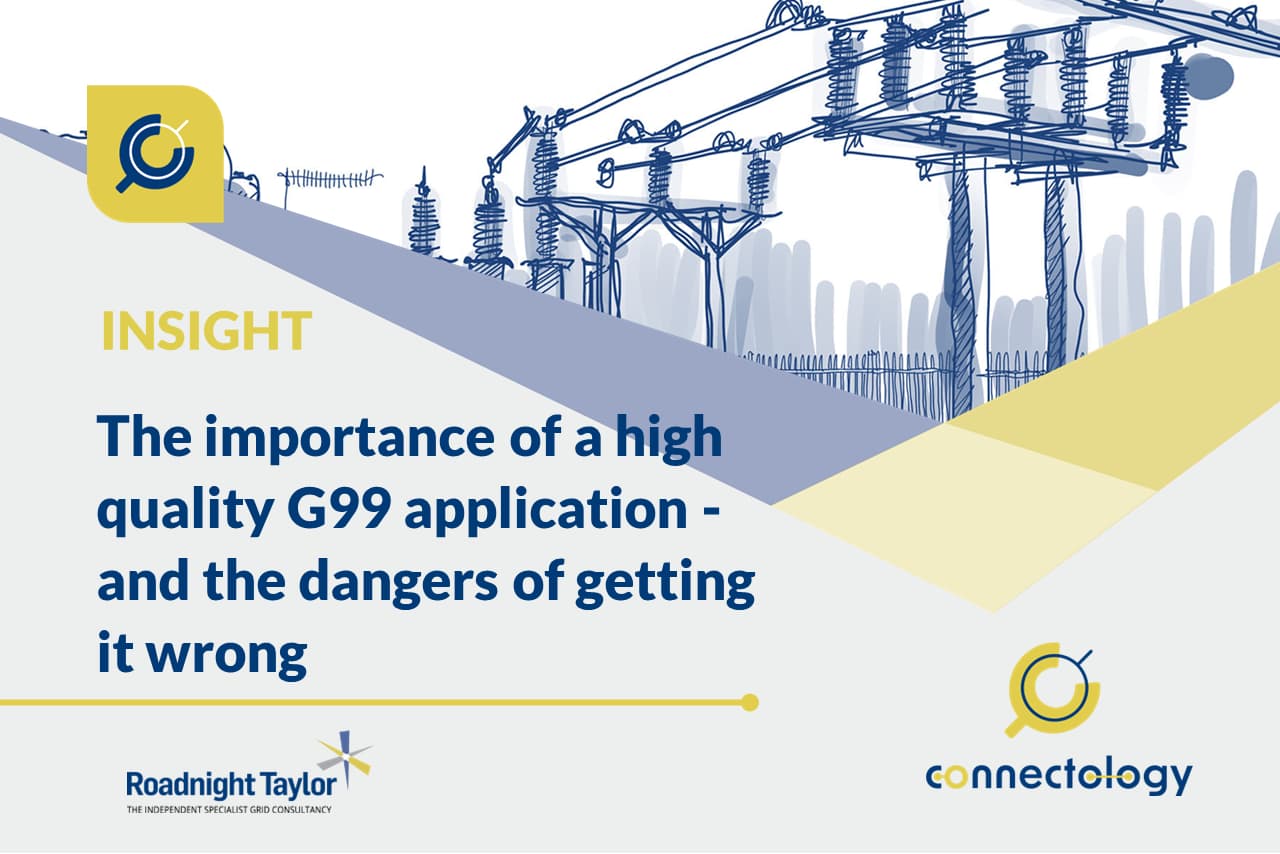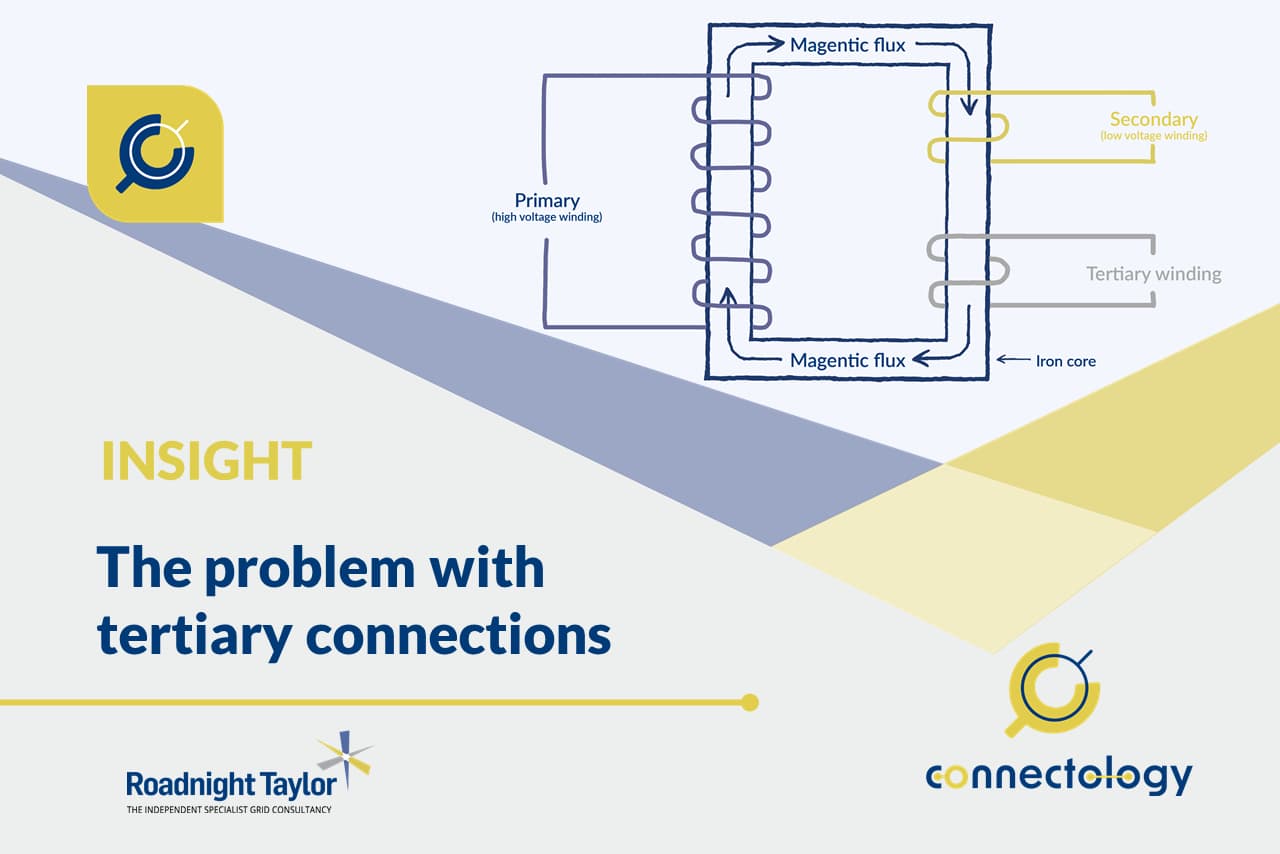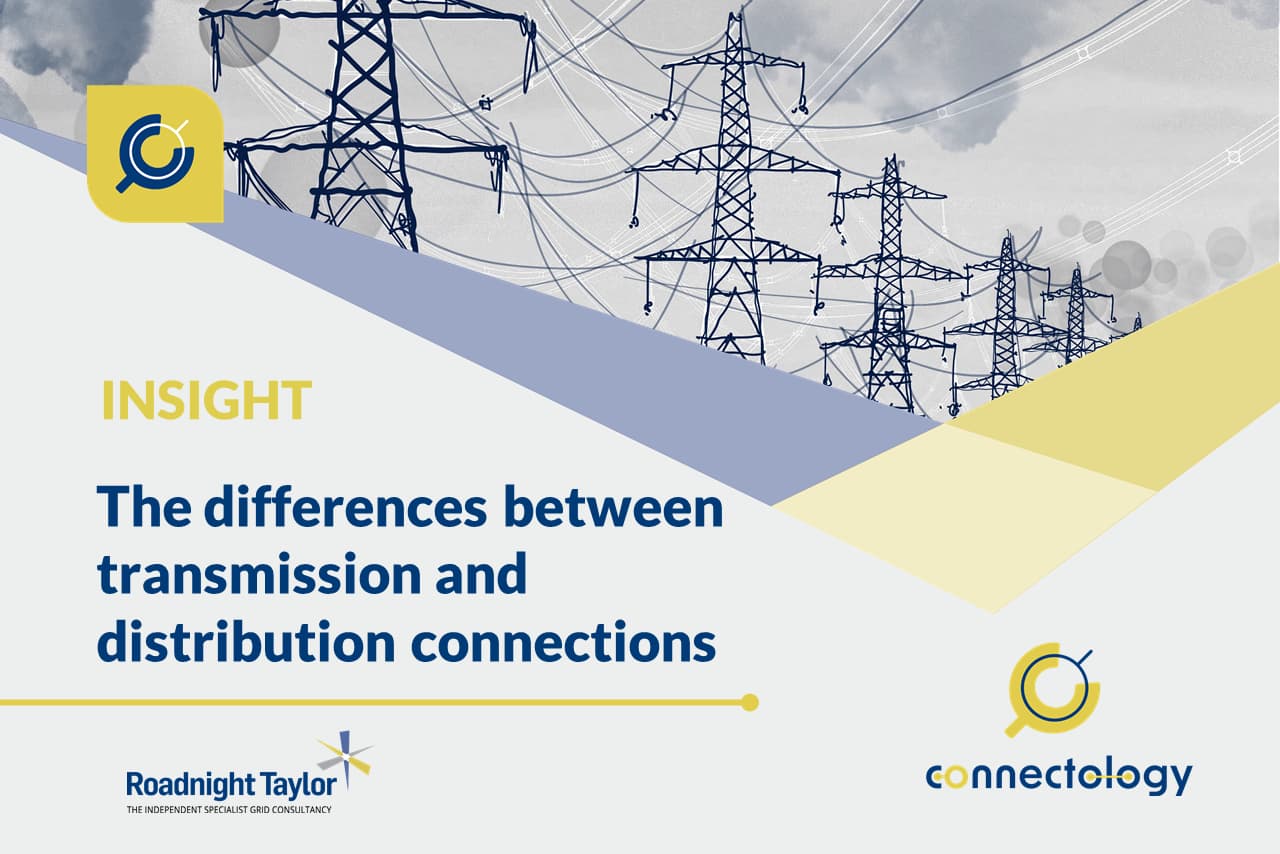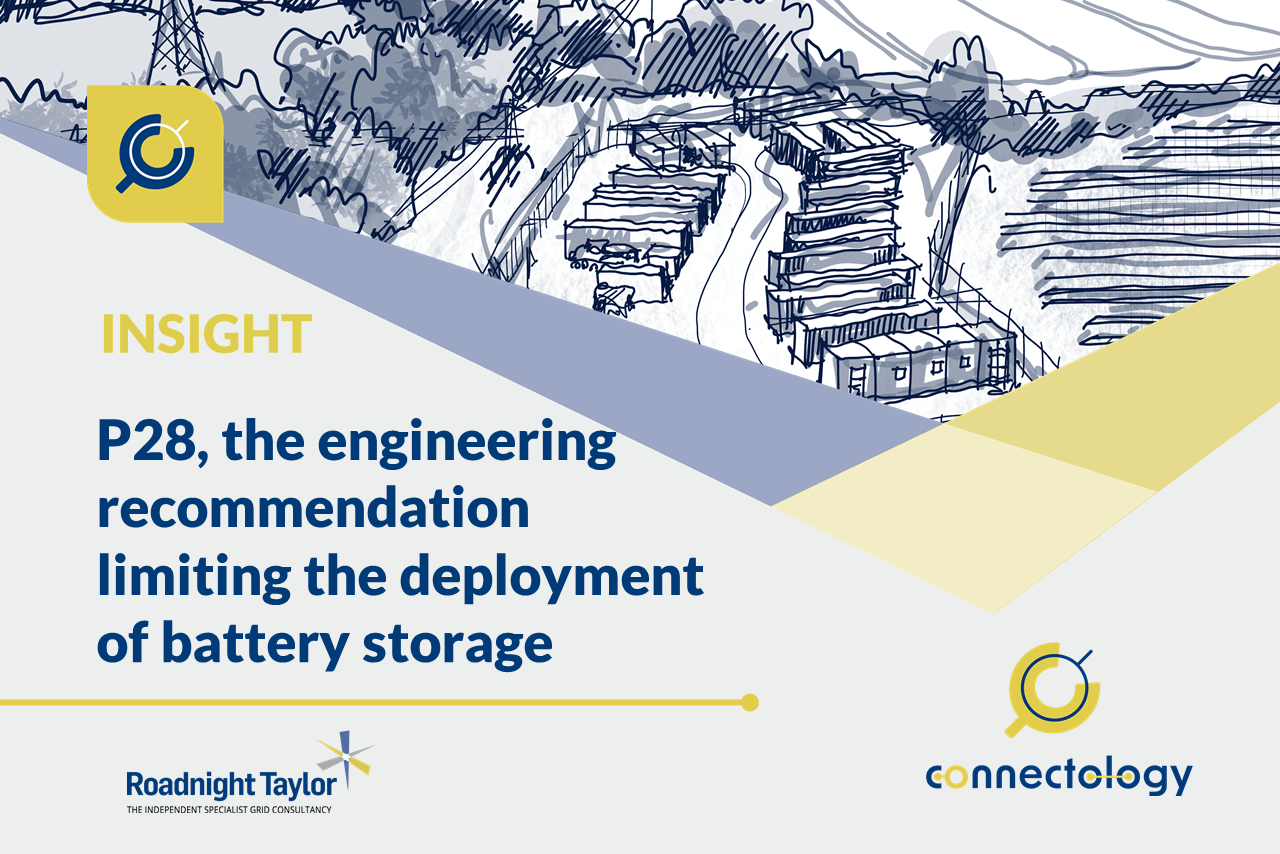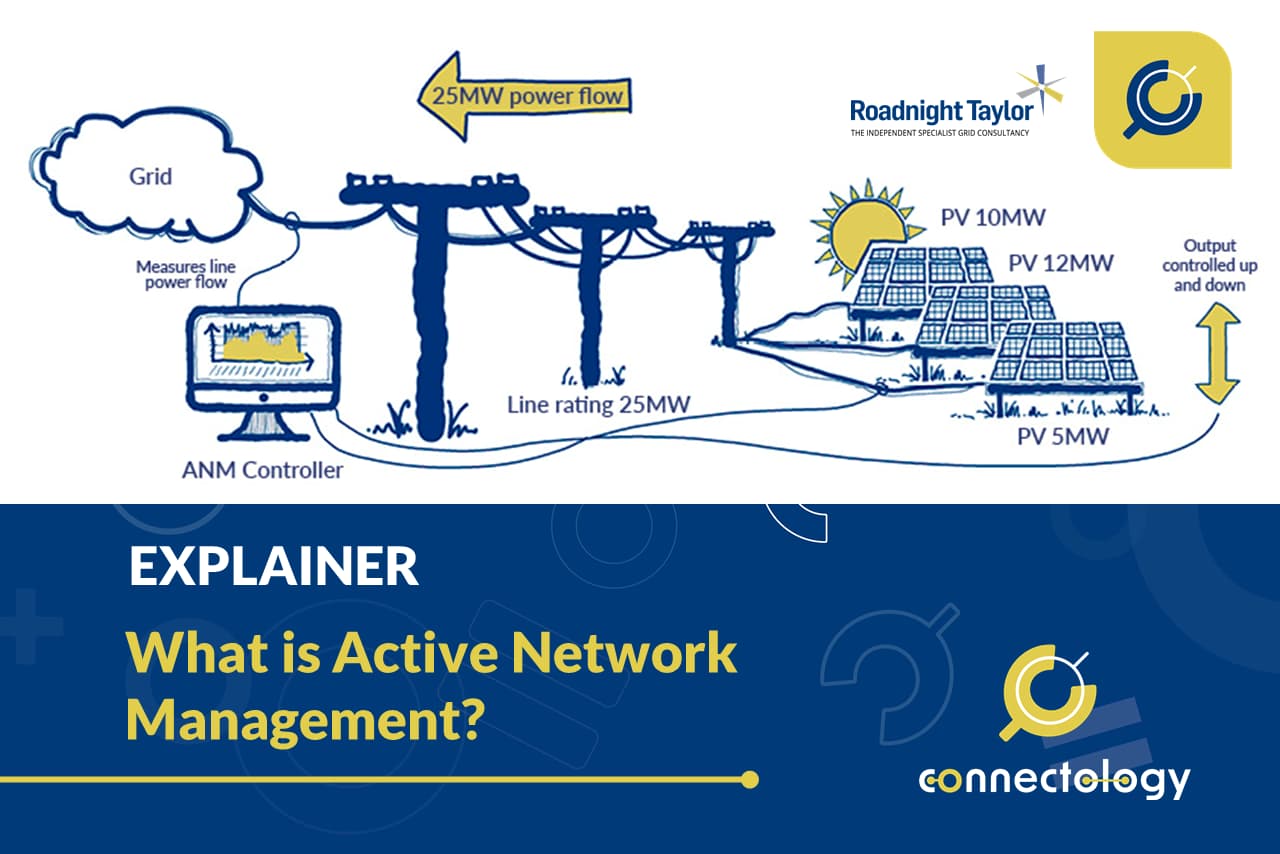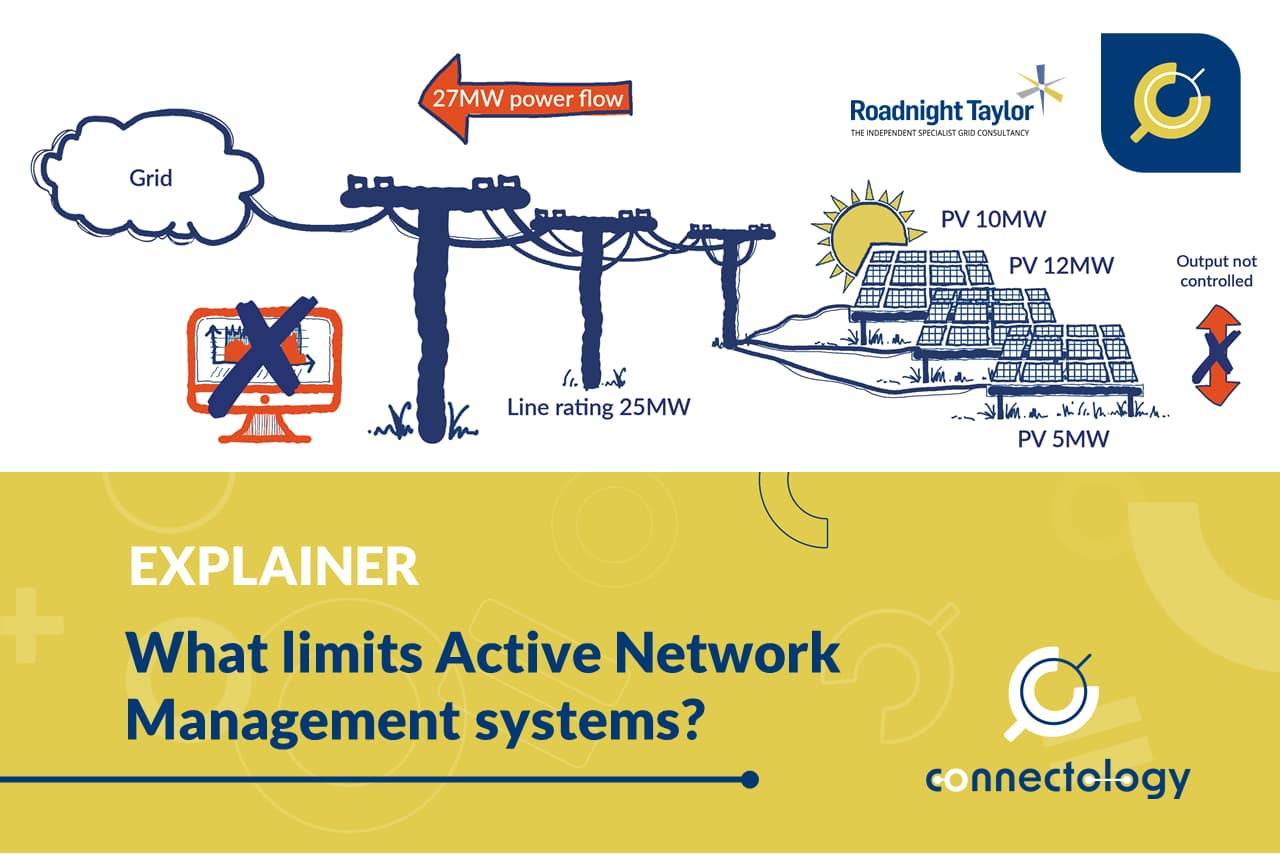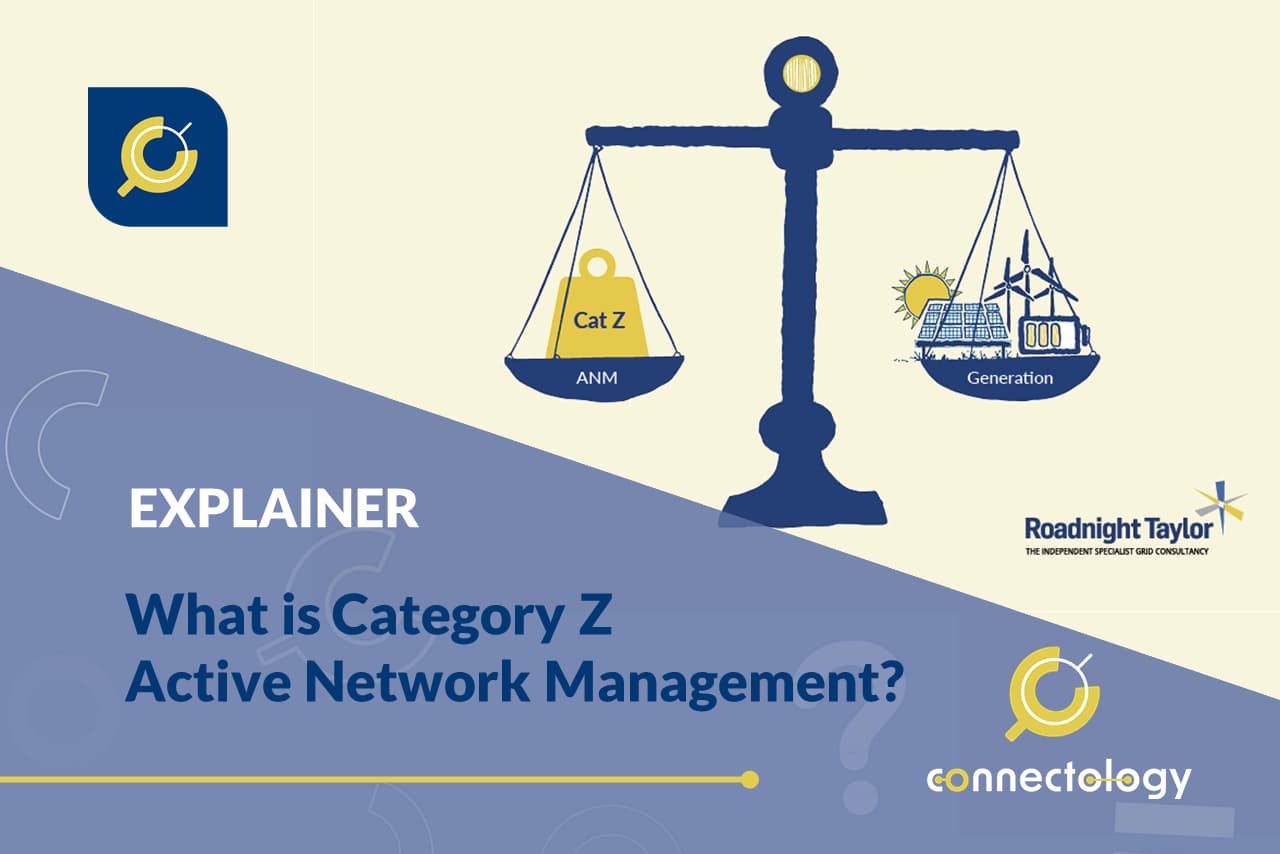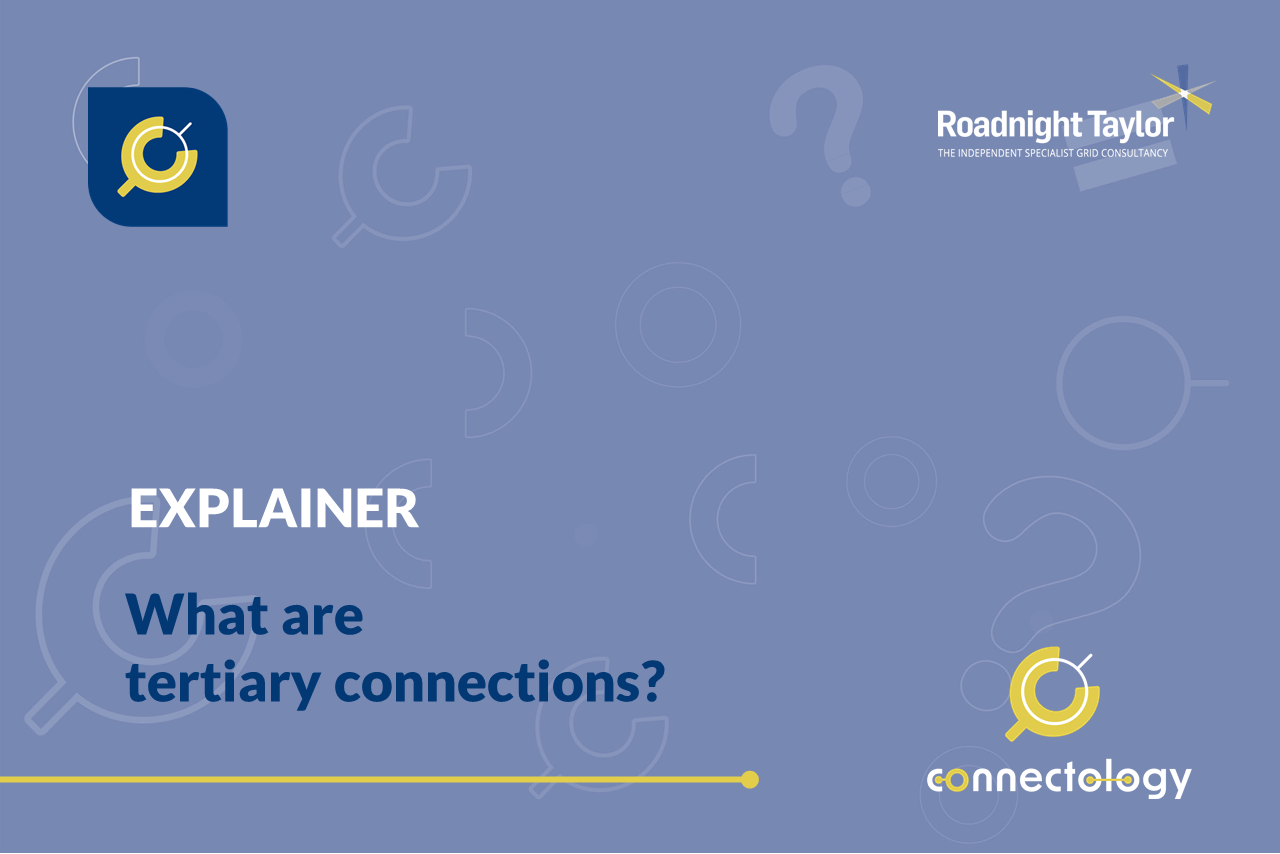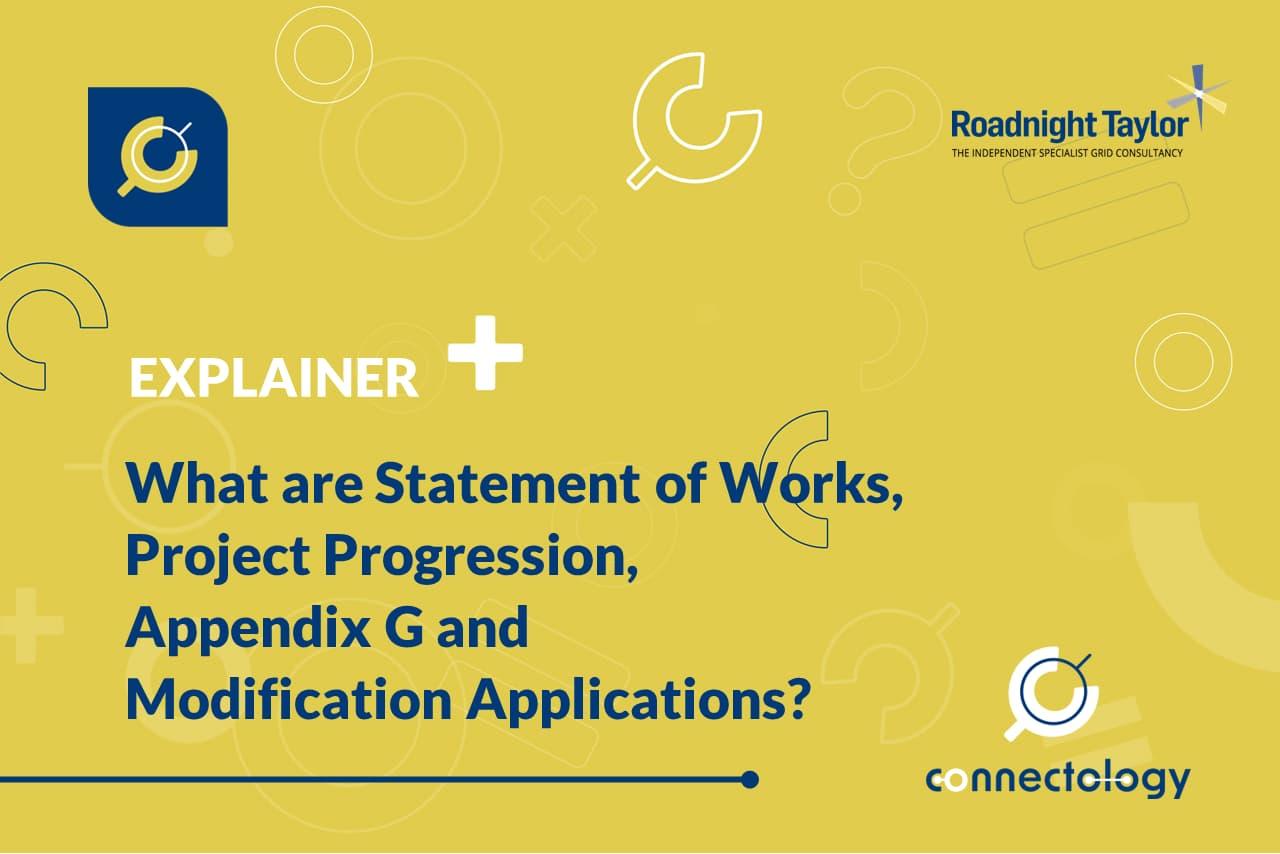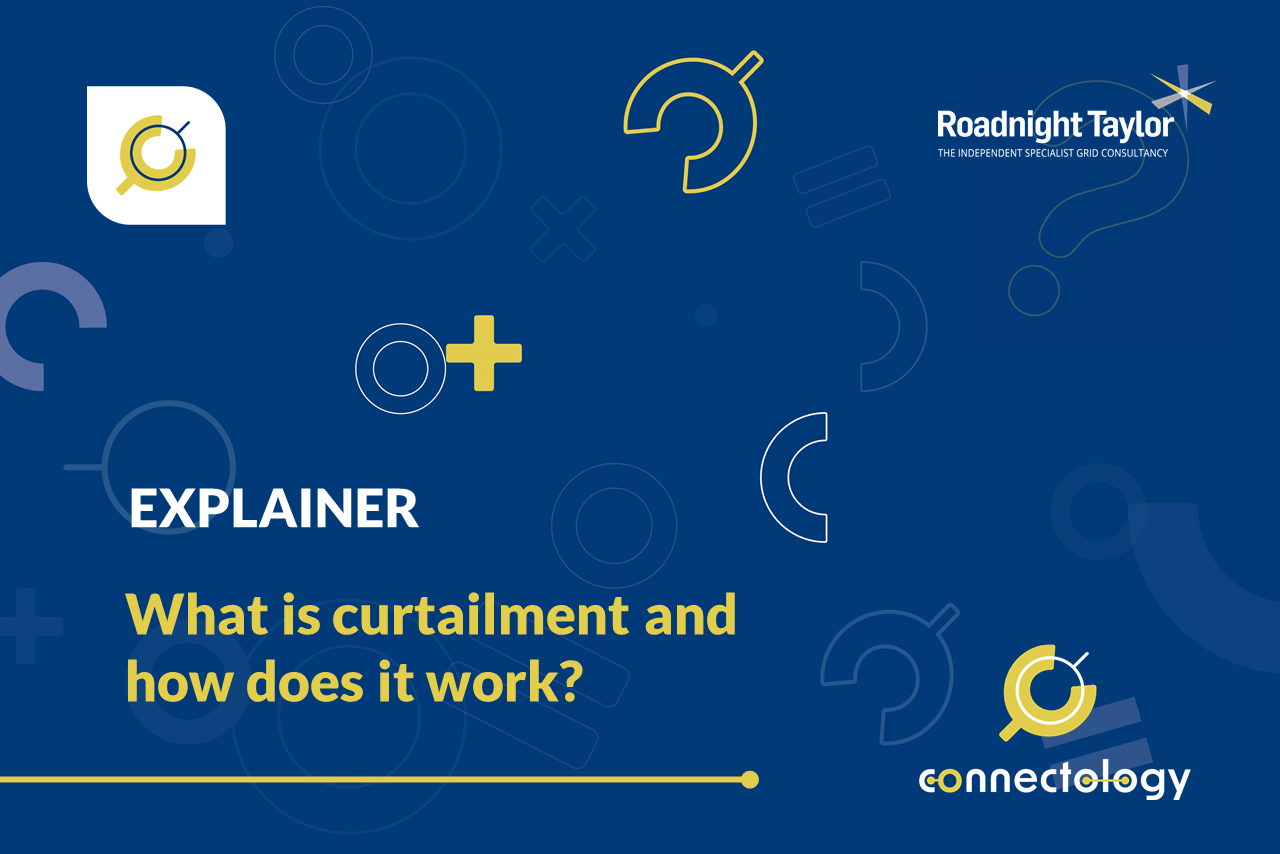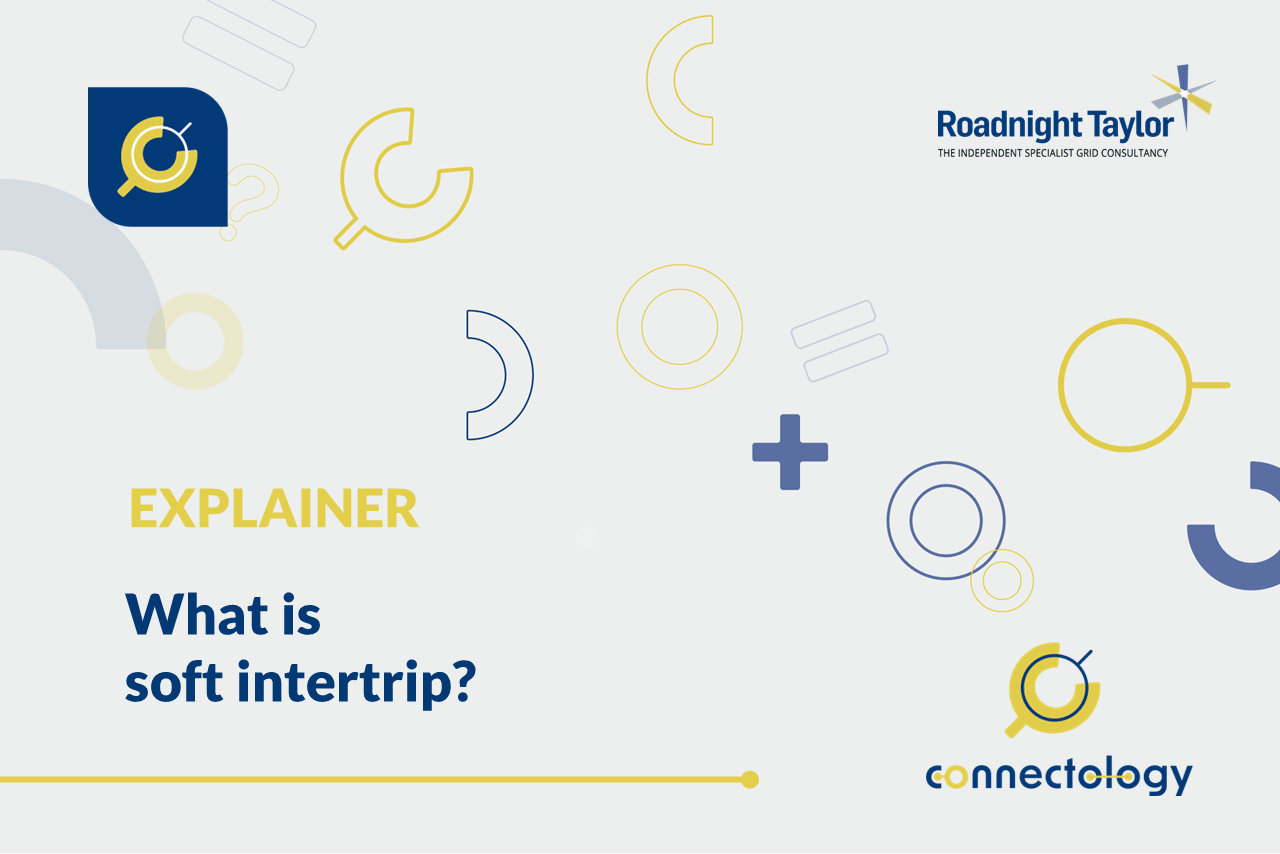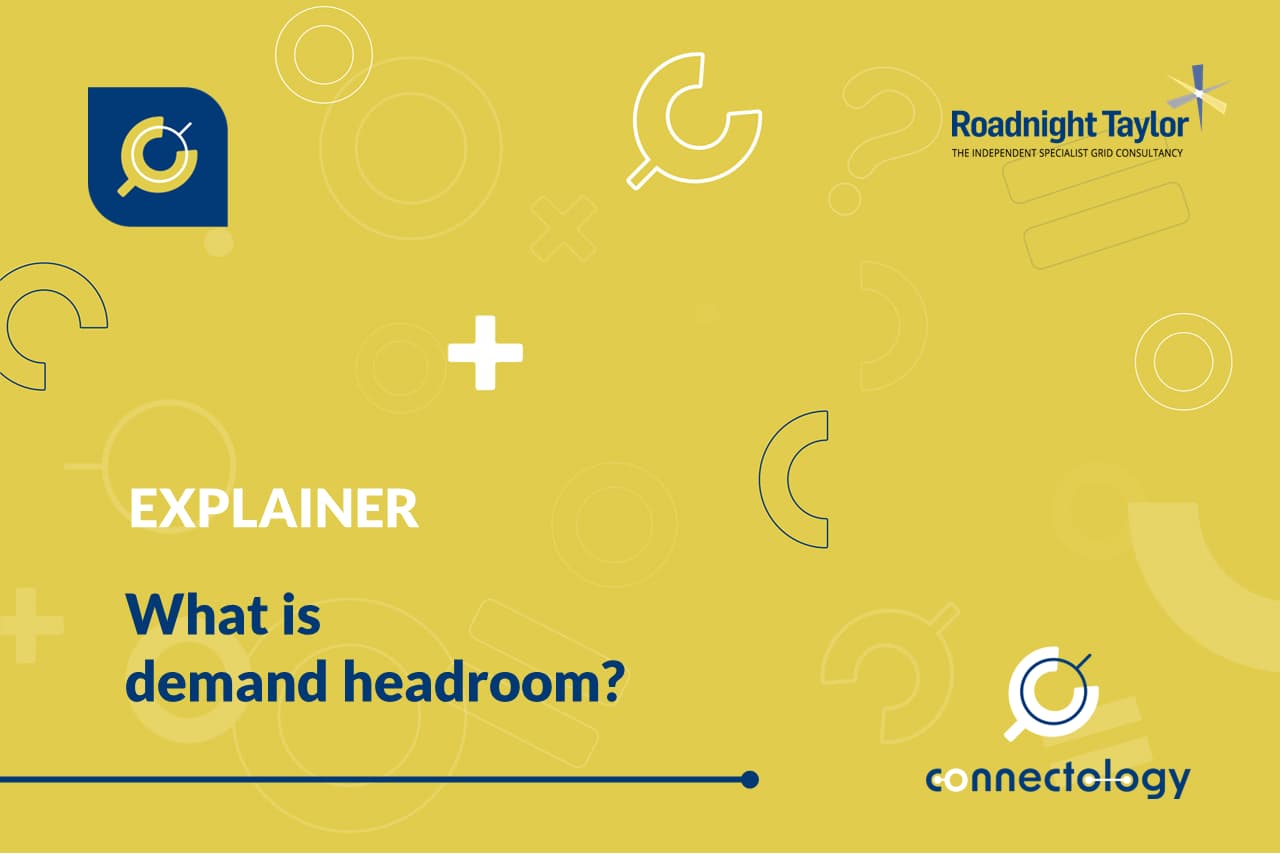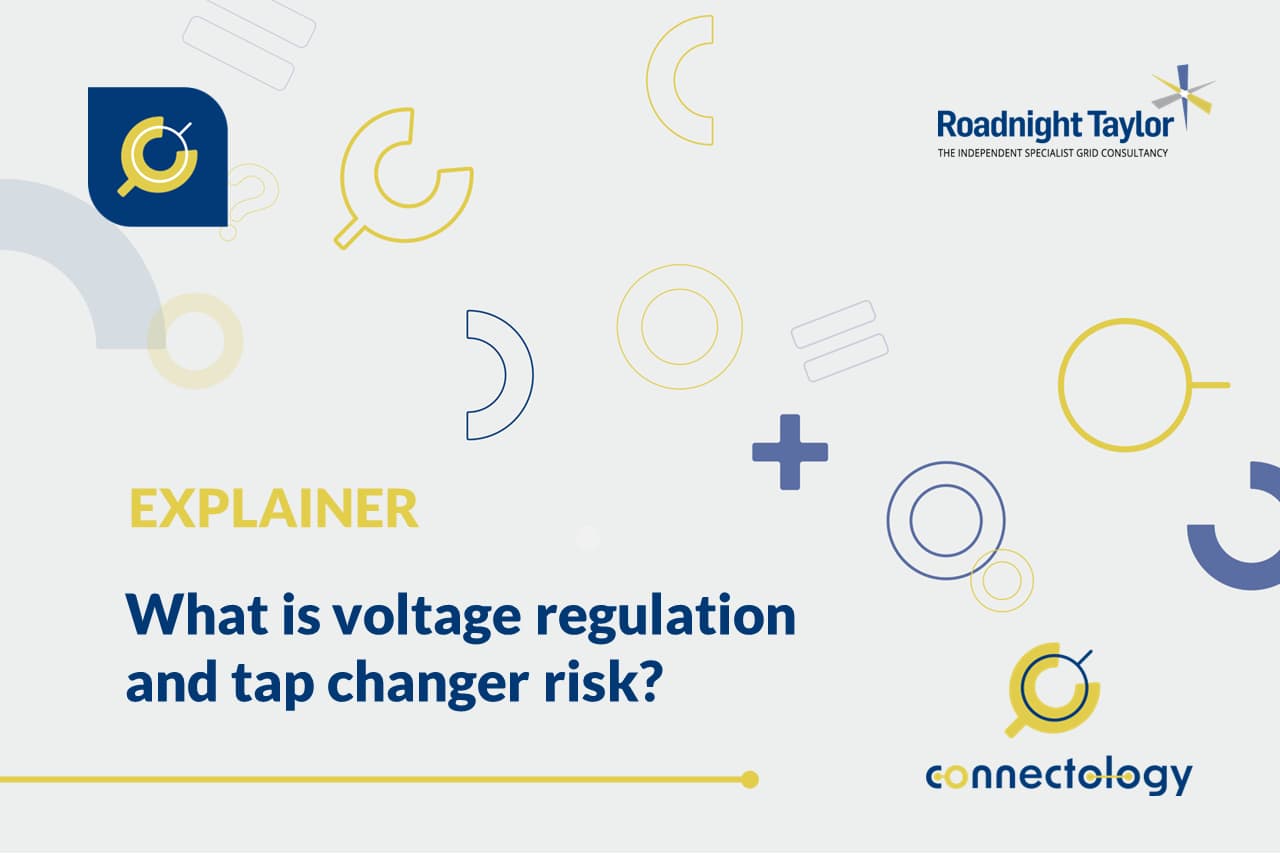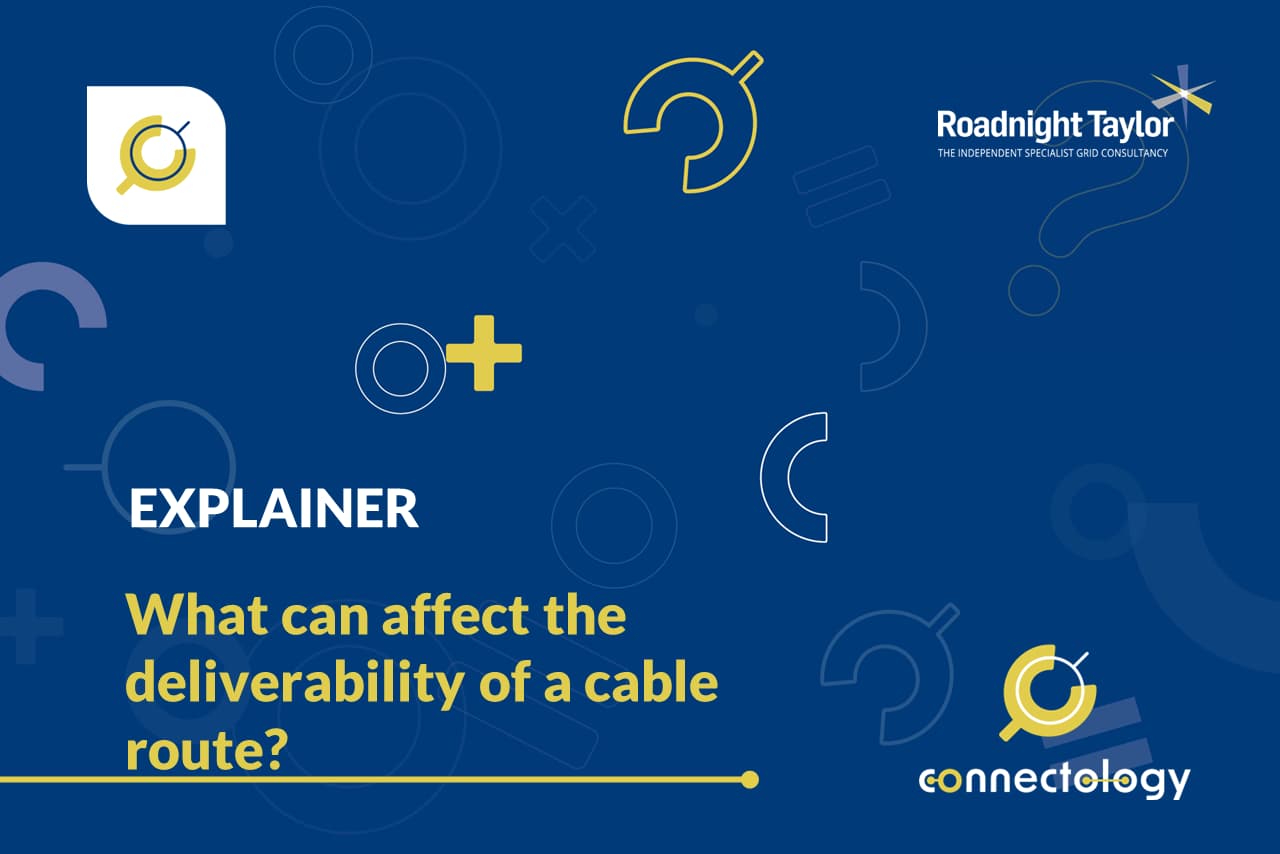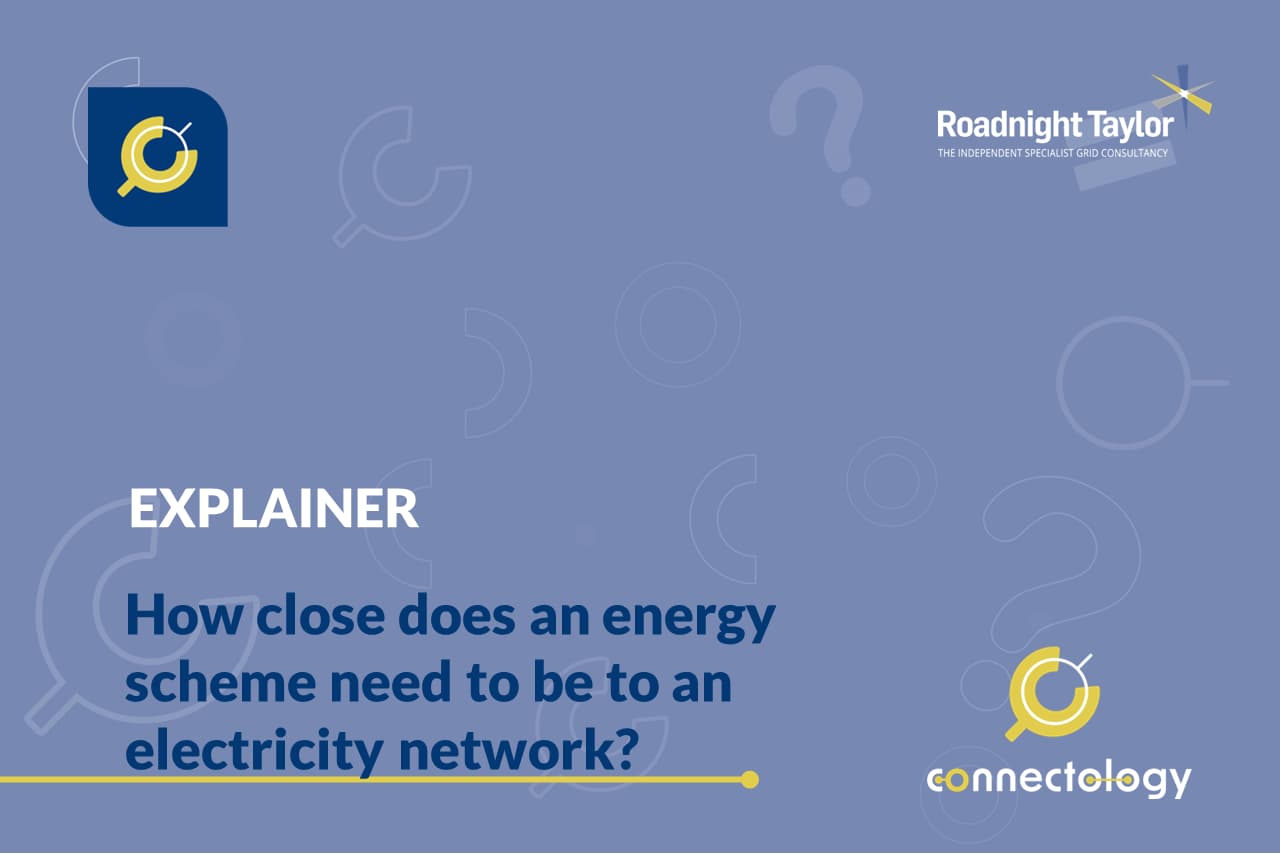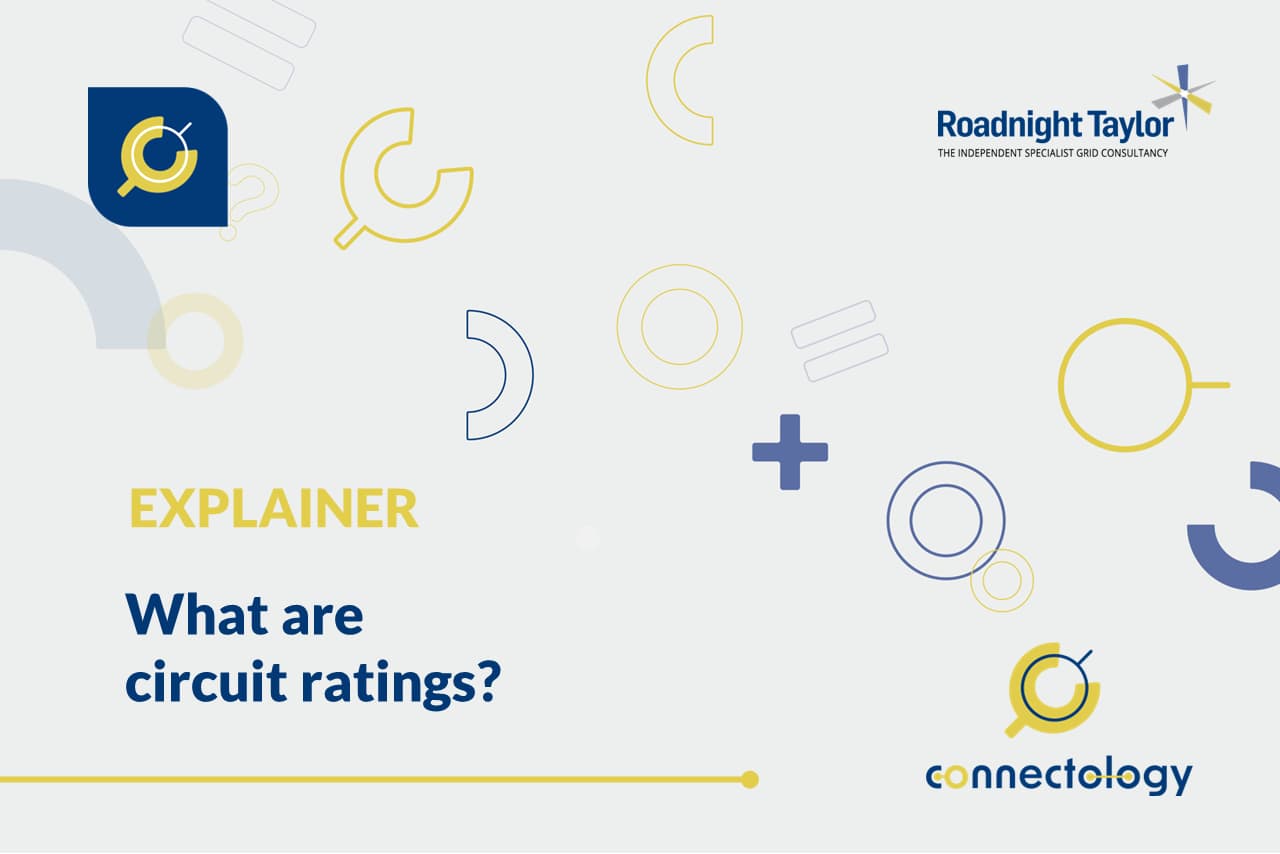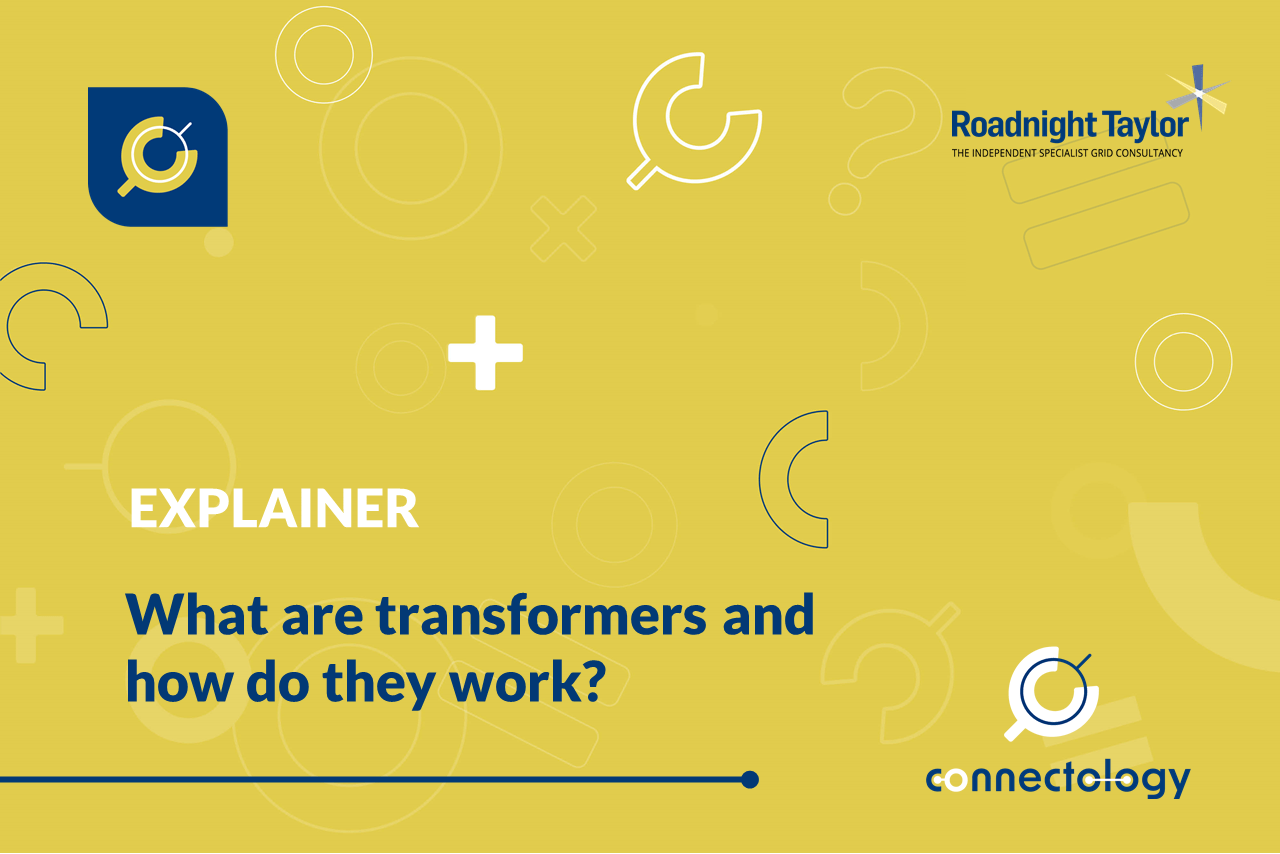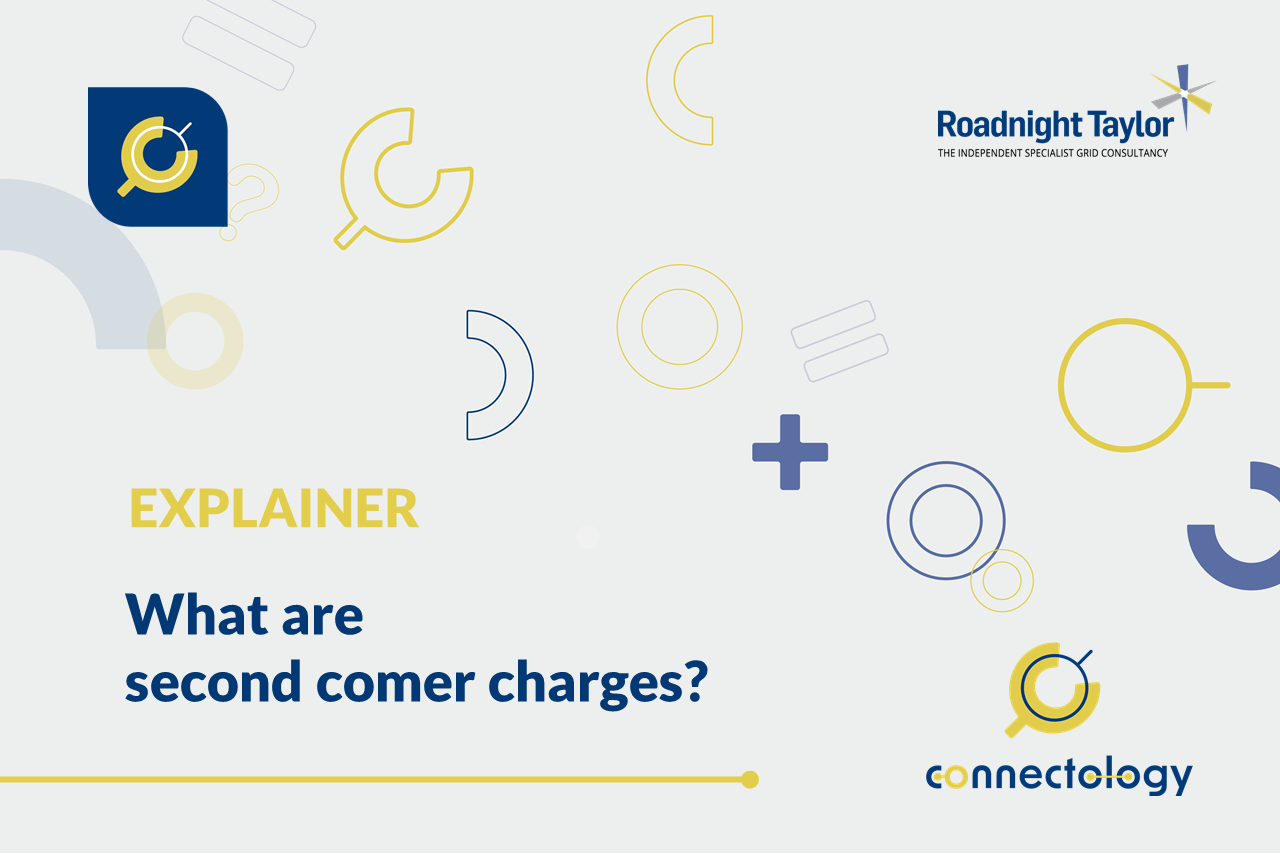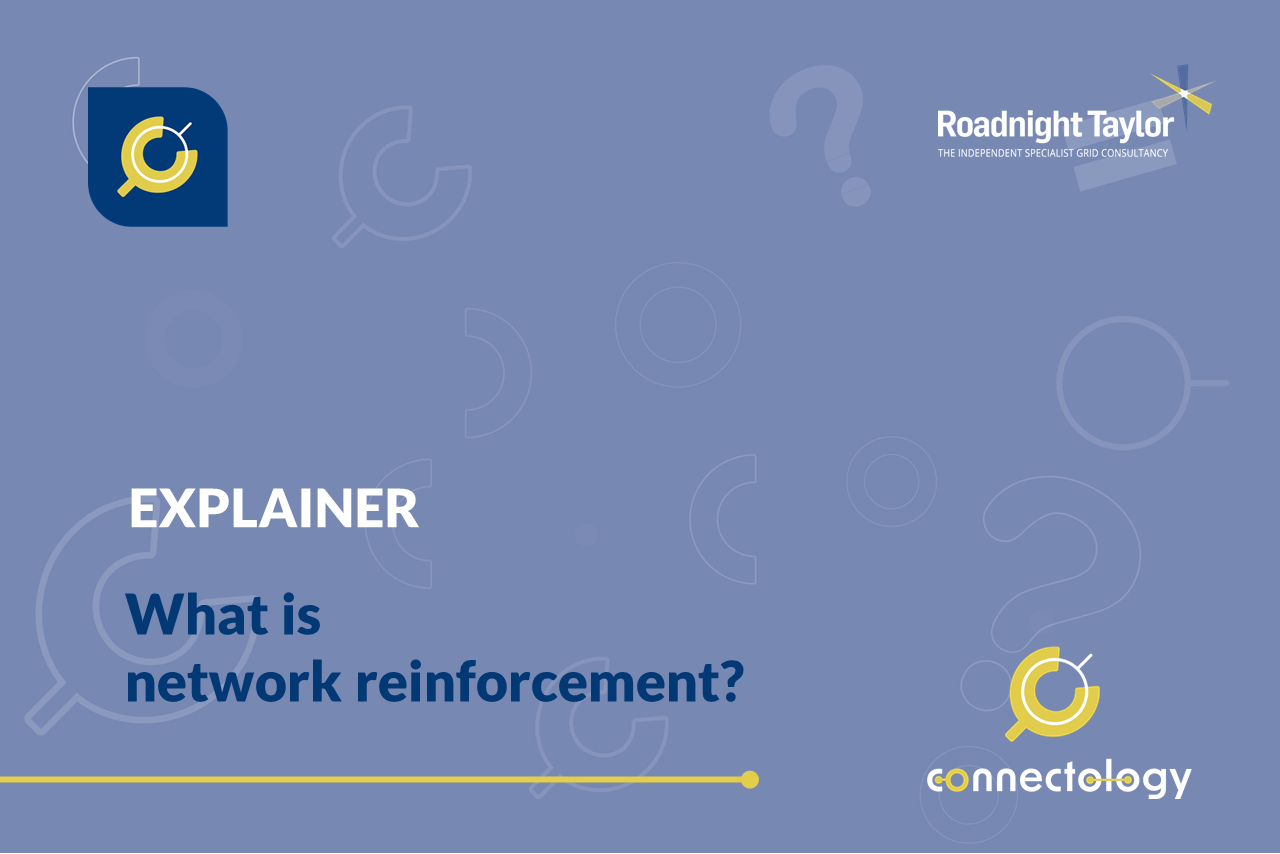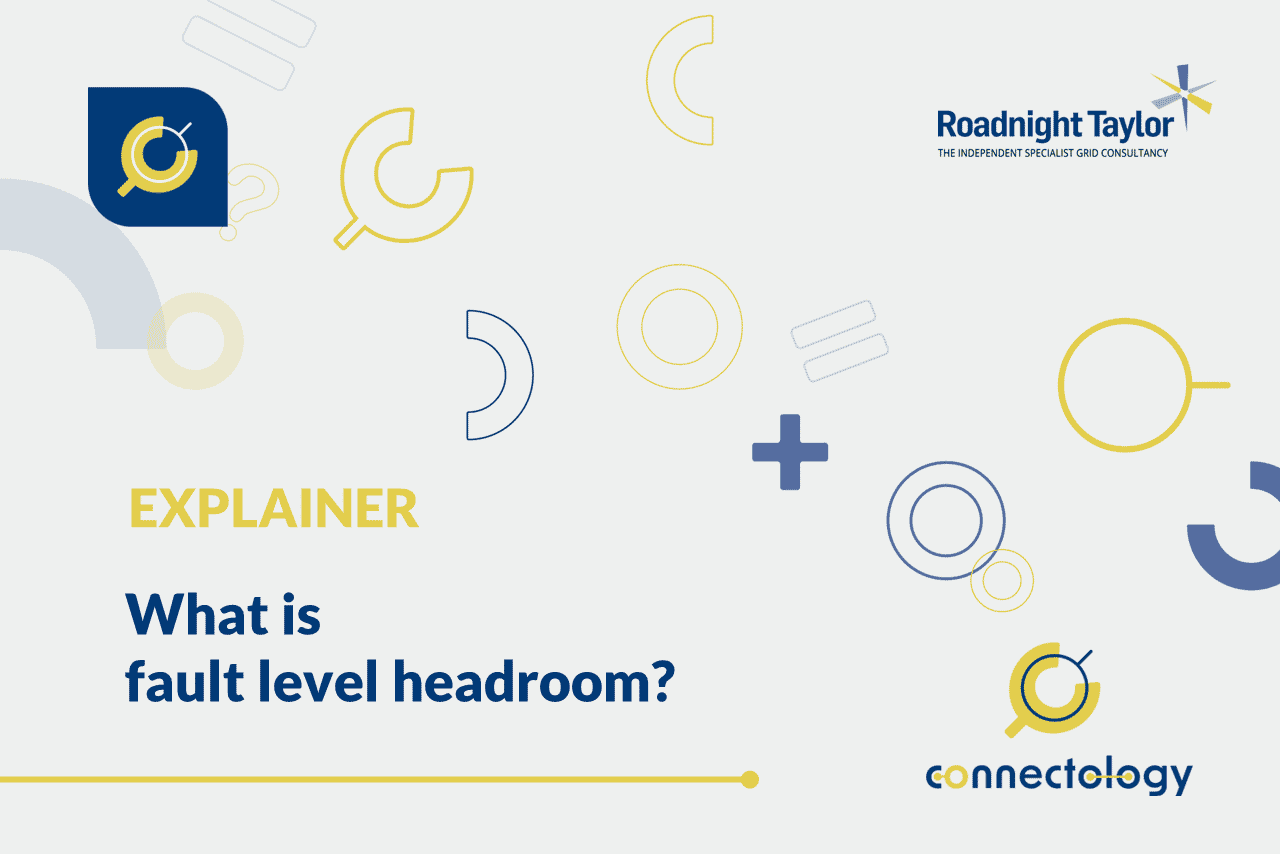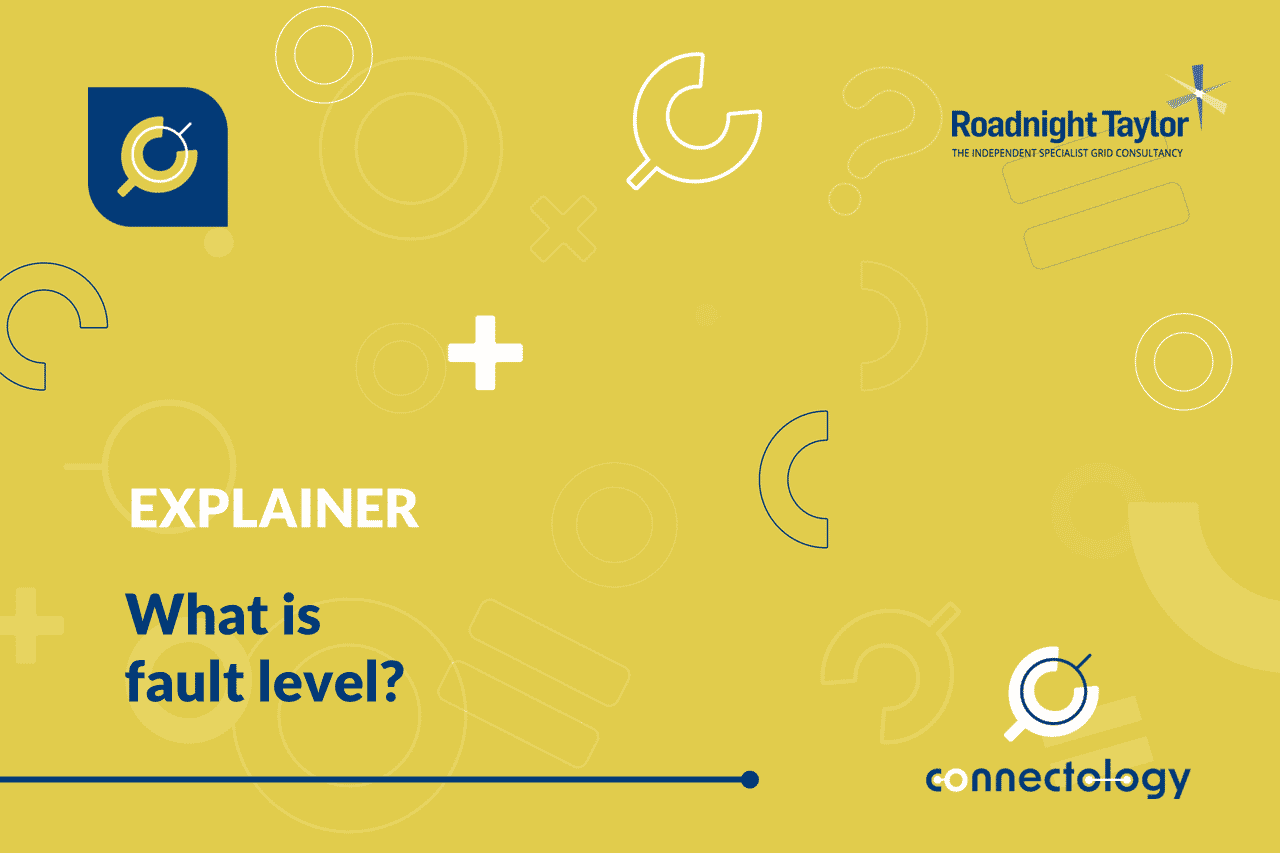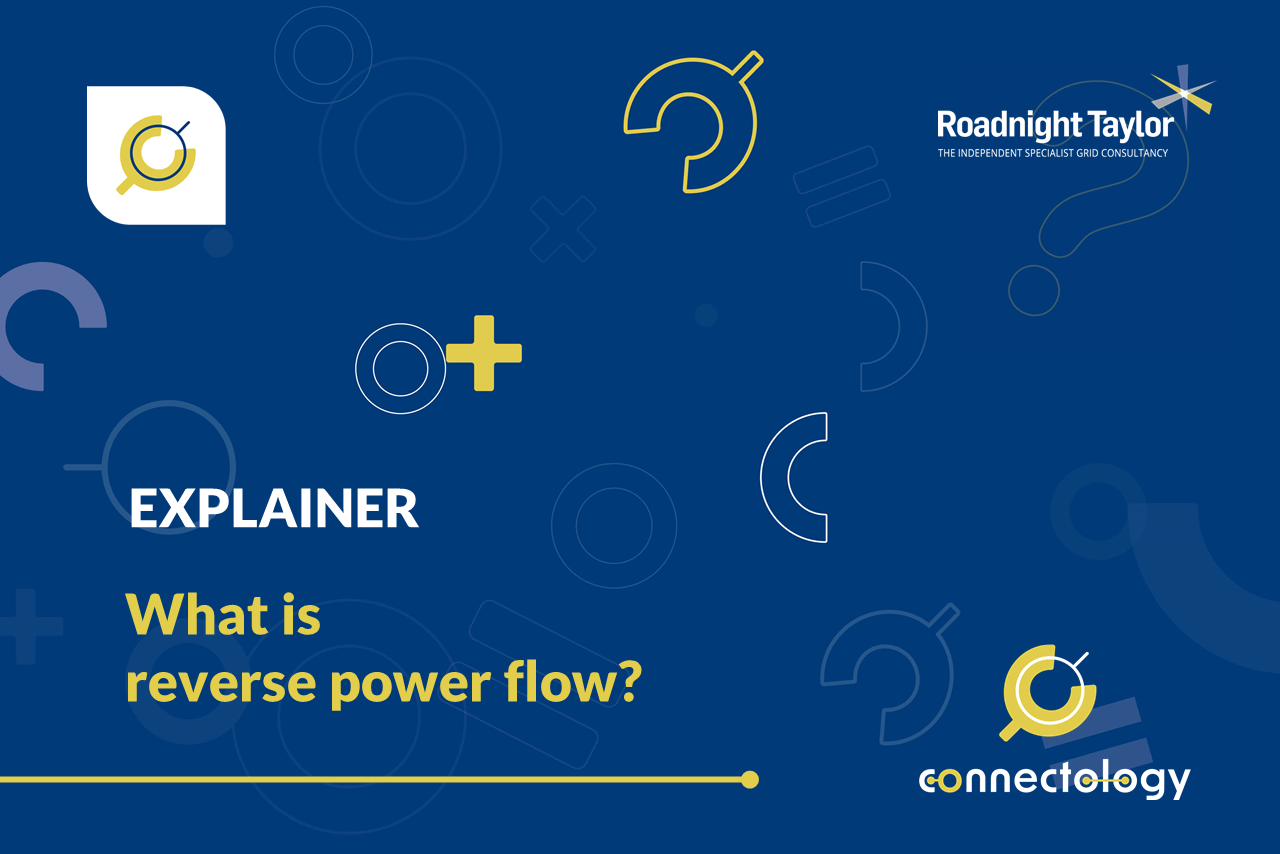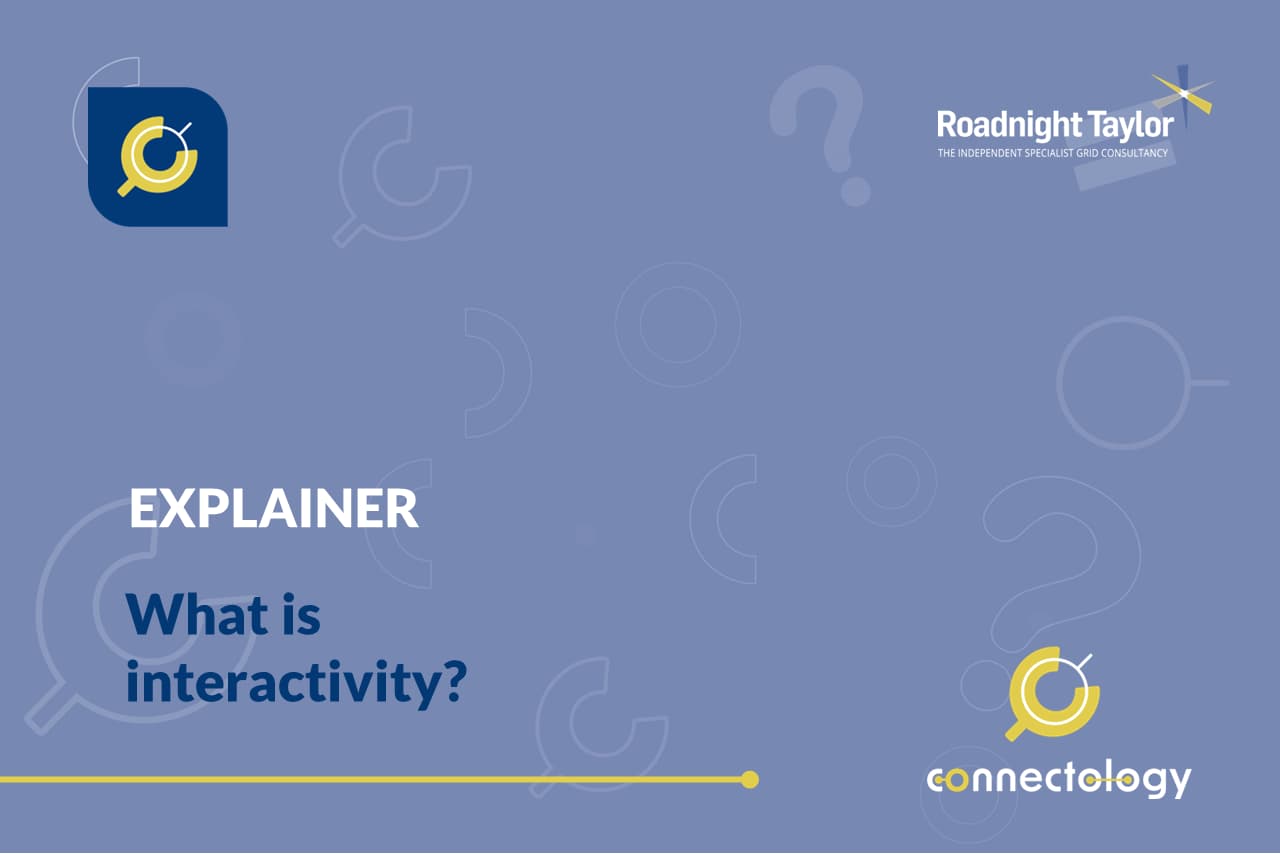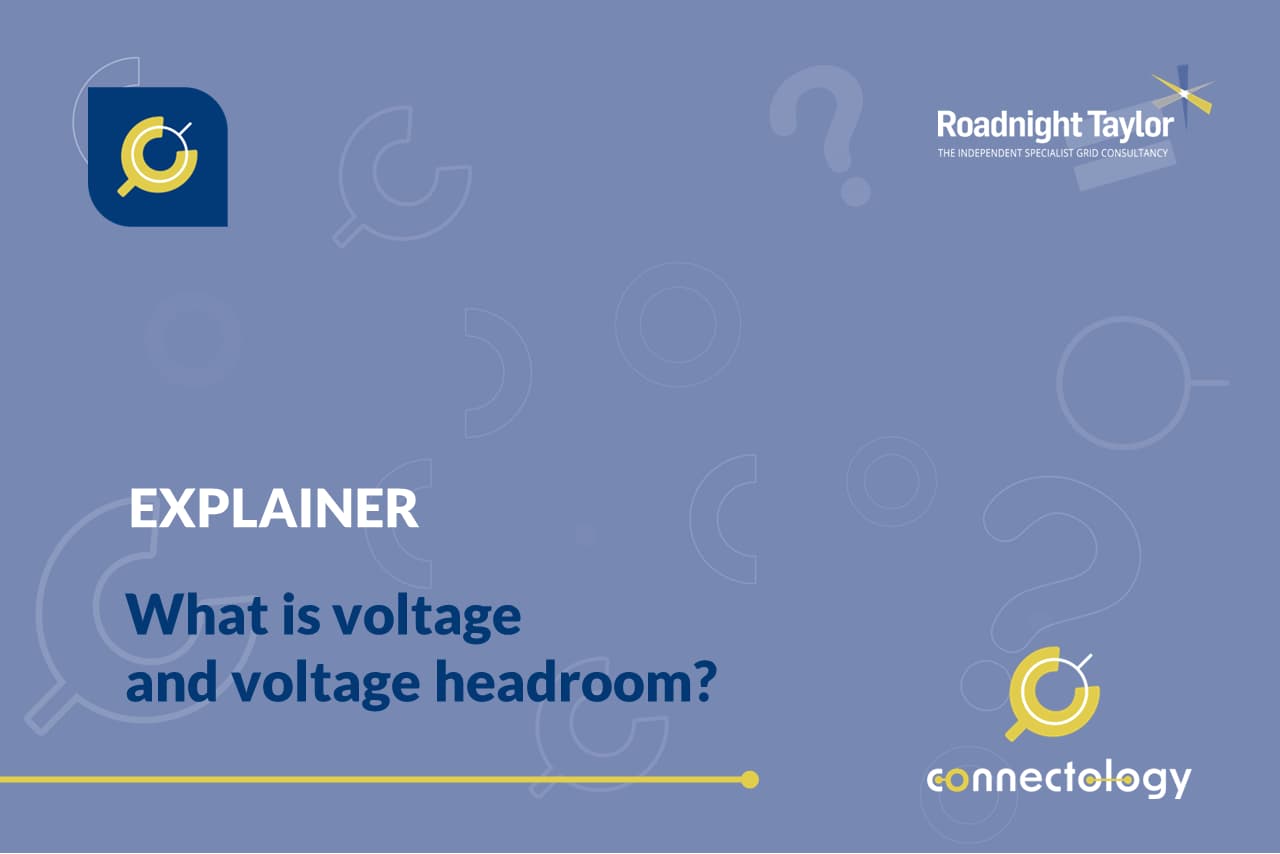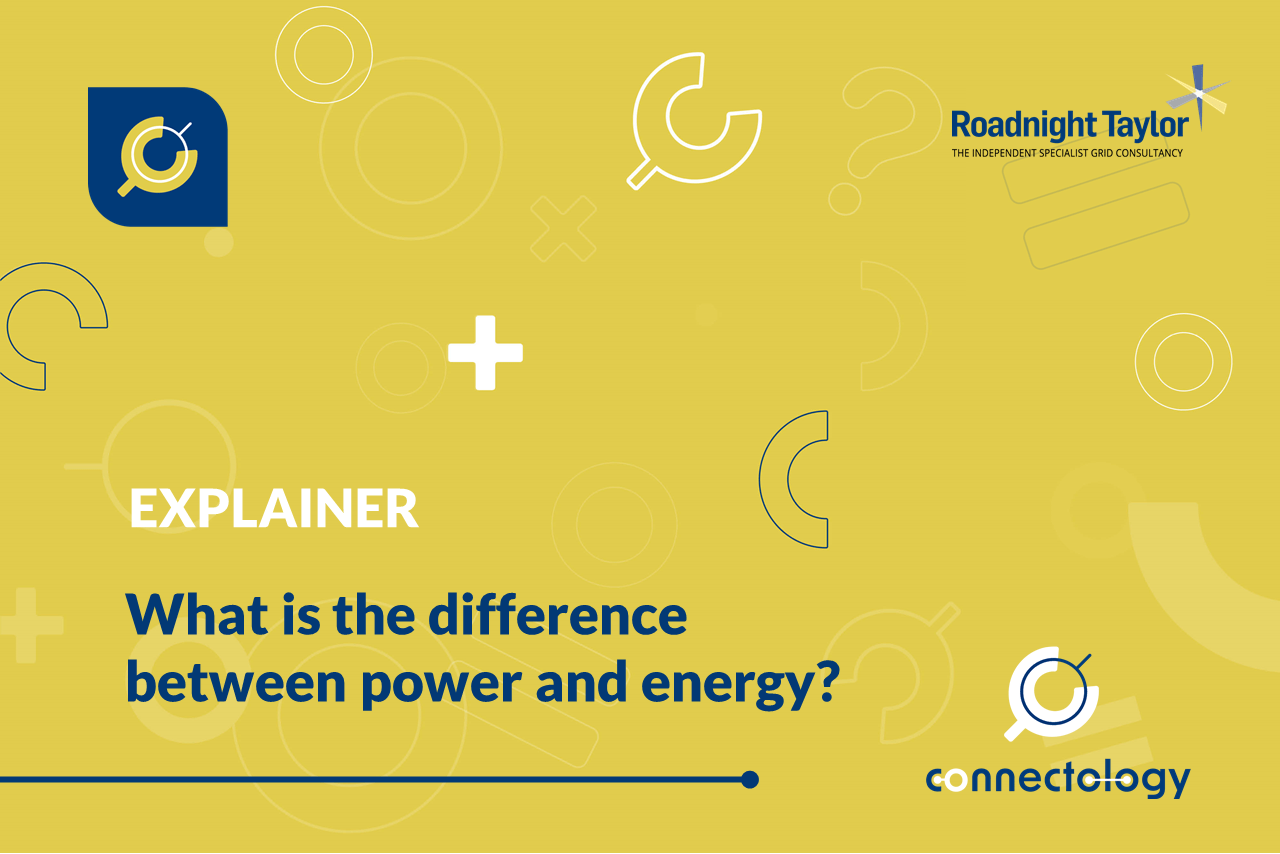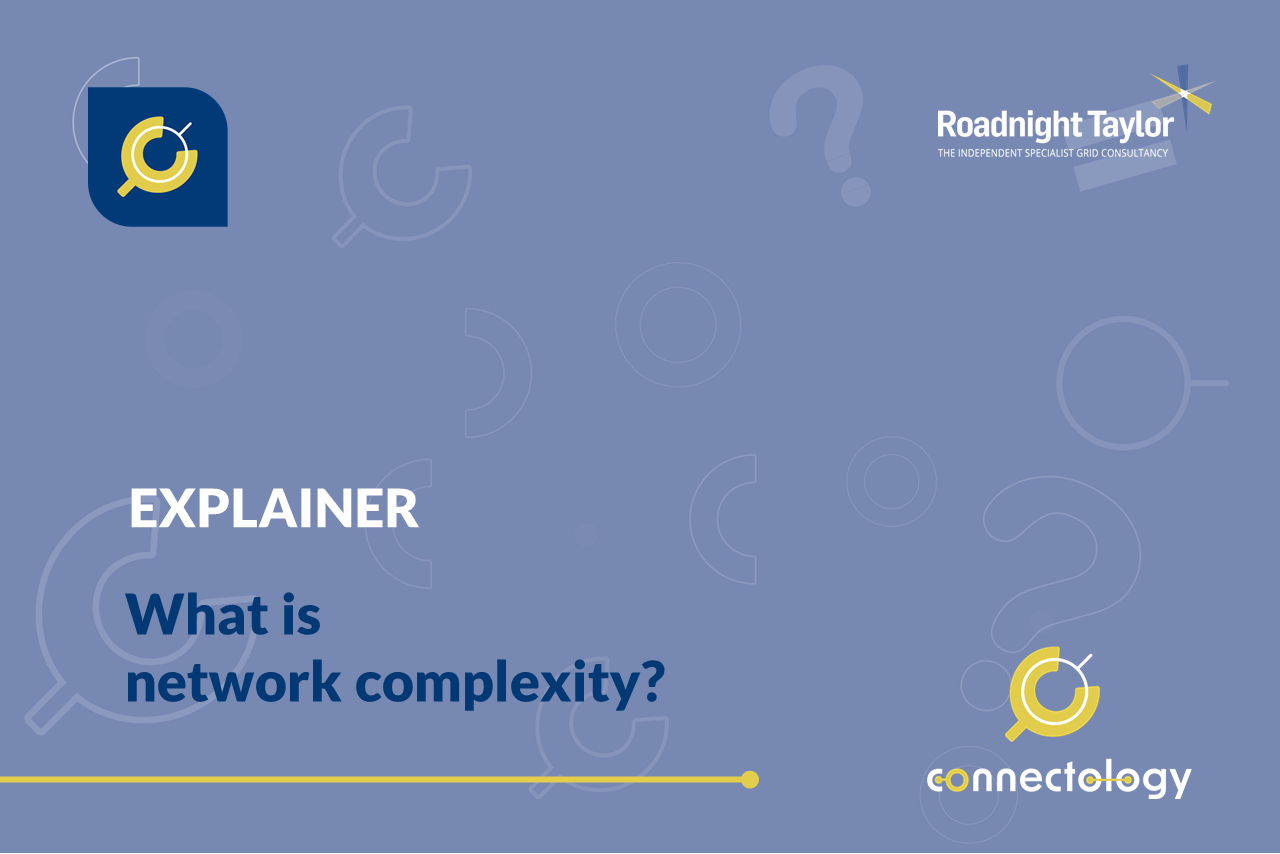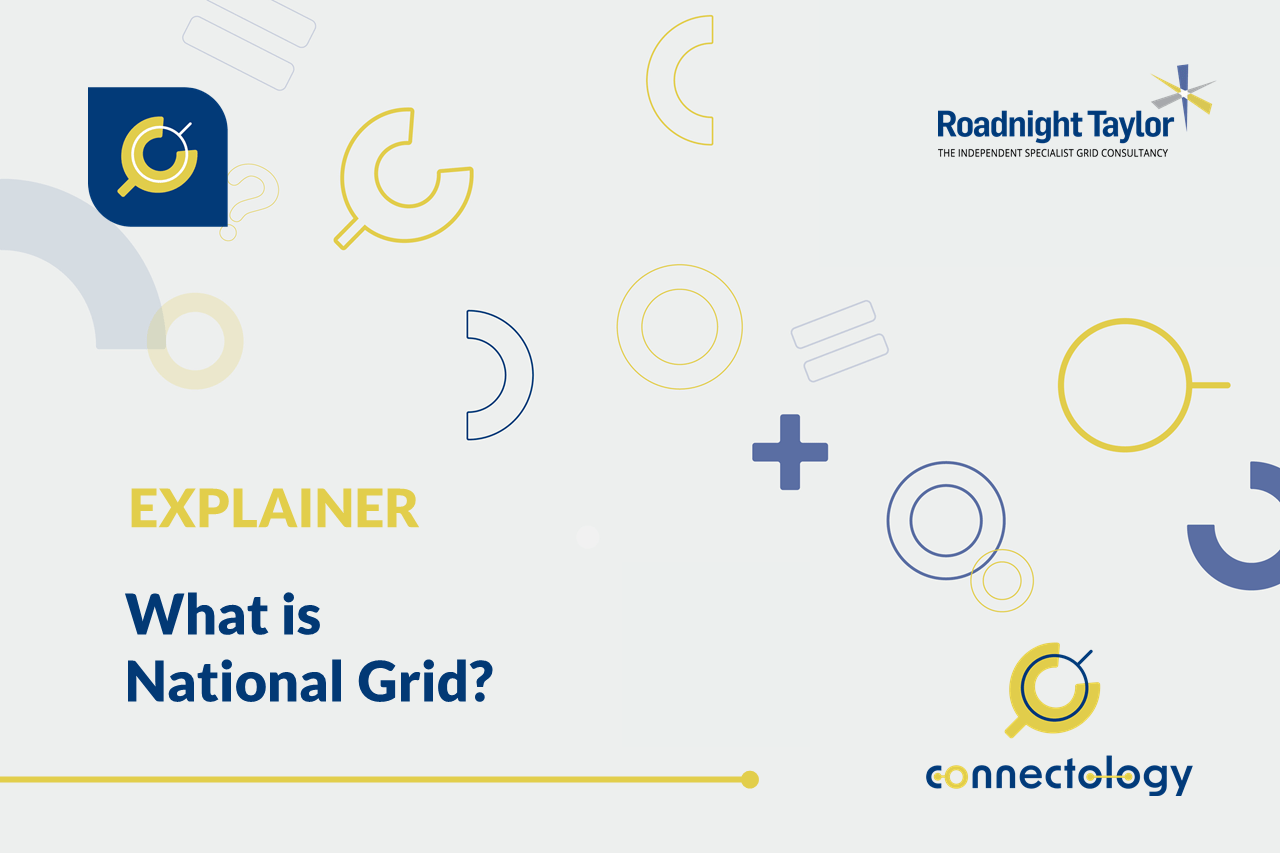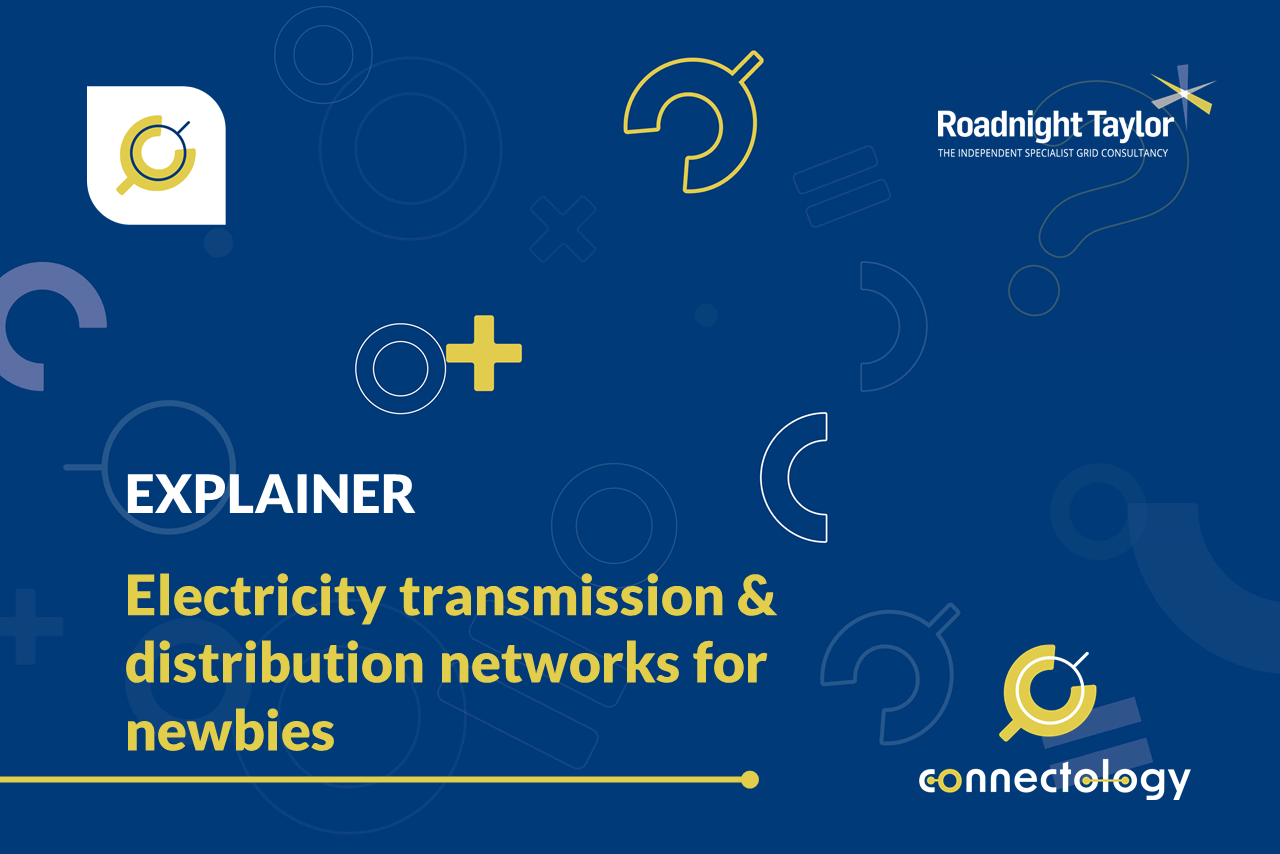Connectology
Webinar: Connections Reform #2
A free webinar with the latest updates to the UK's Grid Connections Reform as at July 2024
Podcast: Guest Series with Oli Spink, System Planning Manager, NGED
In this episode of the Connectology podcast, Pete Aston is joined by Oli Spink, Head of System Planning at National Grid Electricity Distribution. The two discuss Network Development Plans in detail, with key insights from Oli’s experience in the Distribution System Operator team.
Webinar: Community Energy – navigating grid connections #2
A Free Webinar for Community Energy Groups - this webinar will help you demystifying Connections Reform and equip you with the knowledge you need to navigate these changes.
Podcast: Grid News and Views #8
In this episode of the Connectology® Podcast, Pete Aston, Nikki Pillinger and Kyle Murchie discuss current grid connections news.
What is outage risk?
Outages are when sections of the network are switched out, either for planned maintenance and replacement, or for an unplanned fault. The frequency and duration of outages, along with the operating characteristics of the site, combine to give an overall outage risk for a site. Here we explain more about outage risk and the limited compensation available.
Webinar: Grid Code Compliance – avoid financial losses
Request a link for our free webinar to hear our Connectologists® give their top tips for avoiding financial loss by getting your Grid Code Compliance right.
What is Connections Reform?
Connections Reform is a project being run by the Electricity System Operator (ESO) to change the way connection application to the transmission system are handled. Here we provide some quick fire answers to a few key questions.
Podcast: Guest series with Laura Henry, Connections Policy and Change Manager at National Grid ESO
In this episode of the Connectology® Podcast, Catherine Cleary is joined by Laura Henry, Connections Policy and Change Manager at the Electricity System Operator (National Grid ESO)
Webinar: Top 10 Design Phase Risks and Tips
Request this webinar to hear our Connectologists® top tips for avoiding what they think are the most significant risks to a connections project during the design phase.
Webinar: Grid Connections Reform – an update, May 2024
Request this webinar to get an update, so far, on GB electricity network Connections Reform including progress on queue management, letters of authority and more. Gain clarity on the evolving connections landscape.
What are constraints in electricity networks?
Constraints are present in many electricity network connections. This article explains what constraints are, how they can impact grid connections and how they are different from curtailment.
Podcast: Grid news and views #7
All five of our Connectologists® come together in this Grid News and Views episode of the Connectology® Podcast to discuss hot industry topics.
Podcast: Insights into an IDNO
This podcast helps different connections customer types to understand the independent distribution network operator (IDNO) market and what IDNO connections have to offer for development projects
Webinar: Unlocking the potential of hydrogen
Request this webinar to grow your knowledge on grid connections to help unlock the full potential of various types of hydrogen schemes
Podcast: Hydrogen and the grid – considerations for developers, investors, networks and regulators
In this podcast, Roadnight Taylor’s Connectologists® discuss the Hydrogen development market and various opportunities and challenges around connecting the different types of hydrogen projects to the grid.
Transmission queue management – milestones calculator
To support clients and the industry as a whole, Roadnight Taylor has developed a simple Milestone Calculator for transmission queue management. This free to download tool offers a view of milestone dates ahead of any Modification Application Offer or Construction Agreement Offer associated with a new application.
Webinar: Community Energy – navigating grid connections
Request this webinar for Community Energy Groups, to find out more about grid connections for community based energy generation projects.
Podcast: Agreements to vary and mod apps
With some 700 schemes about to receive an agreement to vary from National Grid ESO, our team set out the reasons why, the differences between the cohorts and the risks and opportunities associated with each. They highlight differences between these agreements to vary and mod apps, and flag the interaction between mod apps and milestones, termination risk and critical dates.
Podcast: Grid News and Views #6
In this Grid News and Views episode of the Connectology® Podcast, Roadnight Taylor's Pete Aston hosts colleagues Nikki Pillinger, Philip Bale and Kyle Murchie as they discuss National Grid ESO and the DNOs' progress with the Technical Limits initiative, and more...
Webinar: Top 10 lessons learnt from red flag due diligence
Join this interactive webinar to see how our learning-points from conducting grid connection due diligence can be applied to your energy, real estate, industrial or datacentre development projects.
Podcast: Grid News and Views #5
In this Grid news and views’ episode, Pete Aston hosts colleagues Catherine Cleary, Philip Bale and Kyle Murchie, as they discuss National Grid ESO's progress with two-step offers, when this will come to an end and more...
Podcast: Transmission milestones
On this podcast, three of Roadnight Taylor’s elite connections engineers – Connectologists® Catherine Cleary, Pete Aston and Kyle Murchie – explore connection offer milestones at transmission
Podcast: what a good investment director needs to know about grid due diligence to mitigate risks and potentially save £millions
On this podcast, two of Roadnight Taylor’s elite connections engineers discuss the key themes that they see determining the success of a connection and grid due diligence exercise, and some of the areas of risk that they see having been missed.
Webinar: Network infrastructure for placemaking
On this webinar with Q&A gain potentially game-changing insight from those who have led significant infrastructure acquisition efforts for their local authorities
Podcast: Are your projects’ curtailments about to get a lot worse?
On this podcast, three of Roadnight Taylor’s elite connections engineers explore the issues around changes to DNO curtailment modelling and operation. They help identify higher risk projects, suggest mitigations and point to industry initiatives that may bring about positive change.
Webinar request: Understanding outage risks (transmission)
On this webinar with Q&A we look at outage risks at transmission and give insights to help you understand projects’ abnormal running risks, and how to mitigate them
Podcast: The new treatment of Battery Energy Storage Schemes (BESS)
Specialist grid connections engineers Pete Aston and Philip Bale, discuss the new rules regarding the treatment of Battery Energy Storage Schemes (BESS) by Distribution Network Operator (DNOs).
Podcast: Grid news and views episode #4
Our team of Connectologists® return for a fourth podcast in their ‘Grid news and views’ series to discuss some of the most important updates in their field.
What are Technical Limits?
Technical Limits is the process being rolled out by Distribution Network Operators (DNOs) and National Grid Electricity System Operator (NGESO) (as part of the ENA’s 3-point plan), starting at the end of 2023, to allow distribution schemes to connect before large scale transmission reinforcement work has finished.
Podcast: The Technical Limits initiative. Will it accelerate your projects?
In this podcast, our Connectologists discuss the ENA's Technical Limits initiative and help developers and investors to understand the implications for the portfolios of large-scale projects they are building or acquiring.
Webinar: Getting grid connection feasibility right
On this webinar with Q&A, we look at overcoOn this webinar with Q&A, we'll look at the incremental steps we take in seeking to make a project work on any given part of the network.
Podcast: Grid news and views episode #3
Our team of Connectologists® return for a third podcast in their ‘Grid news and views’ series to discuss some of the most important updates in grid connections.
Webinar: Mission critical grid connections
On this webinar with Q&A, we look at overcoming the challenges in achieving the grid connection permissions and network infrastructure that your business or community needs to achieve its mission critical projects
Podcast: Understanding BEGAs and BELLAs
In this podcast, our Connectologists discuss the fundamentals of BEGAs and BELLAs and the choices that need to made to ensure this critical step doesn't go wrong
Early de-risking of grid connection offers – what to look for
Grid offers come with a long list of caveats that over the course of the development process need to be worked through and clarified to avoid pitfalls and delays. Here, we highlight common elements of the post-acceptance process that can catch some developers out.
What are firm and non-firm connections?
The terms firm and non-firm are used in relation to grid connections in various ways. The two main ways are in relation to the connection design and network access, as we explain here.
Our open letter to Ofgem – reforming the mechanism for supergrid transformer charging
In an open letter, we have urged Ofgem to draw its attention to the critical importance of ensuring there is a more appropriate mechanism implemented for charging for supergrid transformer reinforcement. The current charging mechanism is creating stalled and cancelled projects caused by funding risks for investors.
Podcast: Understanding outage risks (transmission)
In this podcast, our Connectologists give insights to help you understand transmission-connected energy projects’ abnormal running risks and how to mitigate them
Podcast: Grid news and views episode #2
Our team of Connectologists® return for a second podcast in their ‘Grid news and views’ series to discuss some of the most important updates in their field.
Podcast: Grid news and views episode #1
Roadnight Taylor’s four Connectologists® meet again to give their views on some of the key topics in the connections industry over the last couple of months.
Webinar: Understanding outage risks (distribution)
On this webinar with Q&A, Pete Aston and Philip Bale share their insight into outage risks to help you understand projects’ abnormal running risks, and how to mitigate them
Podcast: Now you’ve got a connection offer, what next?
In this podcast, Catherine Cleary and Nikki Pillinger discuss the perils and pitfalls to avoid once a great connection offer has been accepted.
What is a Cost Apportionment Factor?
A Cost Apportionment Factor (CAF) is part of the method by which electricity network reinforcement costs are passed on to connecting customers. A CAF is applied up to the level of the high-cost cap. Here we explain more.
Podcast: Understanding outage risks webinar – who should tune in, when and why
In this podcast, Pete Aston explains why we are hosting an upcoming webinar to share insight to help Development and Investment Directors understand abnormal running risk, and how to go about mitigating the issues identified in their energy schemes.
Our response to Ofgem’s open letter consultation (16 May 2023)
On 16 May 2023, Ofgem launched a policy review on reforming the electricity connections system. They invited stakeholders to submit feedback on their open letter by 16 June 2023. This is our response, led by Pete Aston.
Podcast: Understanding SCR curtailment limits
In this podcast Pete Aston helps listeners understand the weaknesses of the SCR Curtailment Limit calculation formula, and how the limit differs from DNO’s curtailment reports.
What is the Transmission Entry Capacity (TEC) Register?
The Transmission Entry Capacity (TEC) Register is a record of generation projects that hold contracts for Transmission Entry Capacity (TEC) with National Grid ESO
What is the Embedded Capacity (ECR) Register?
The Embedded Capacity Register (ECR) is a list of energy generation projects (1MW or bigger) connected or contracted-to-connect to the electricity distribution networks (embedded).
Webinar: Understanding DNO curtailment reports
On this webinar with Q&A, Pete Aston and Philip Bale share their insight into Active Network Management (ANM) and DNO curtailment assessment reports.
Podcast: Connections reform update #1
In this podcast our Connectologists discuss the recent connections reform output from National Grid ESO and the Energy Networks Association, as well as Ofgem's open letter on future reform to the electricity connections process.
Podcast: Understanding DNO curtailment assessment reports webinar – who should tune in, when and why
In this podcast, Pete Aston and Philip Bale explain why they wanted to share, on their upcoming connectology® webinar, insight into ANM and the DNOs' reports, what they will be covering and who will benefit.
Webinar: Grid Connection Feasibility Studies (distribution)
On this webinar with Q&A, Pete Aston and Philip Bale will set out the incremental steps that they take, as Roadnight Taylor Connectologists® in seeking to make a project work on any given part of the network.
Podcast: Hinkley Point C Connection Project: an MP’s view – the Rt Hon Dr Liam Fox on the challenges for North Somerset and the Electricity Transmission (Compensation) Bill
The second in a series of Pete Aston’s look at the HPC project, aimed at helping developers with connection offers understand the effect that transmission reinforcement work has on their projects.
Podcast: Third party works – what every good Development and Investment Director should know
Third party works - what every good Development and Investment Director should know
Podcast: NGESO securities and liabilities – insights for success and risk management in connections
NGESO securities and liabilities: insights for success and risk management in connections
Podcast: The grid connection feasibility studies webinar – who should tune in, when and why
Hugh Taylor explains why our Connectologists®have volunteered to share so much feasibility know-how in a webinar, how they will do so on the day - and who will get the most out of the webinar
Podcast: Hinkley Point C Connection Project: an introduction – Insights into transmission reinforcements and for developers stuck behind such works
Pete introduces the Hinkley Point C Connection project, with a view to helping developers understand the scale of transmission works, and what it means for connections projects that are sitting behind similar, if not more extensive, reinforcements.
Podcast: National Grid’s Call For Expressions of Interest – What you should know, before it’s too late…
We discuss National Grid's call for expressions of interest from contracted connection customers whose connection dates have been impacted by transmission reinforcement works requirements. The deadline for responses is 30 April 2023.
What is Deep Connect and Manage?
Deep Connect and Manage (DC&M) was thought of as a way to allow additional distribution generation to connect to the electricity networks, without incurring huge transmission reinforcement costs. Here we explain more.
What is Connect and Manage?
Connect and Manage (C&M) was introduced to improve access to the transmission system for transmission-connected generators. Here we look at C&M, enabling works, wider works, higher system constraints and attributable liabilities.
What is final and non-final demand?
Recent changes to charging rules make it essential to properly define when demand is‘final’, as in used onsite, and what was ‘non-final’ and due to be exported back into the network.
Podcast: Optimising flexible connections to maximise income – what every good Development and Investment Director should know
Optimising flexible connections to maximise income – what every good Development and Investment Director should know
What are third party works in grid connections?
Third Party Works are works which are associated with a connection being made directly onto the electricity transmission network but which must first be carried out downstream on an electricity distribution network which it will be impacting.
Webinar: NGESO securities and liabilities: insights for success and risk management in grid connections
On this webinar with Q&A, Catherine Cleary and Pete Aston gave energy scheme investment and development directors insight into NGESO securities and liabilities methodologies, and the how to achieve success and manage risk
What is a ‘Minimum Scheme’ for a grid connection?
The Minimum Scheme is the grid connection design that provides the required capacity at the lowest overall capital cost, as estimated by the Distribution Network Operator. It has its nuances though, as Pete Asont explains.
Podcast: Game or be Gamed? The Significant Code Review
Game or be Gamed? The Significant Code Review - strategies and tactics when connecting under the new rules.
Webinar: Game or be gamed? For investors in shovel ready developments and owners of existing generation and storage schemes
On this webinar with Q&A, Nikki Pillinger and Pete Aston helped investors in shovel ready developments and owners of existing generation and storage schemes identify the opportunities and risks of SCR for and how to come out on top.
Webinar: Game or be gamed? For datacentre developers and investors
On this webinar with Q&A, Catherine Cleary and Pete Aston helped datacentre developers and investors identify the opportunities and risks of SCR for and how to come out on top.
Podcast: NetZero Vs RIIO-ED2 final determinations
Roadnight Taylor Connectologists® Pete Aston and Catherine Cleary discuss the RIIO-ED2 final determinations with Merlin Hyman, Chief Executive of Regen
Podcast: The gifts we’d like to give the GB electricity networks for Christmas
Pete Aston hosts a festive chat with two of our other Connectologists®, Philip Bale and Nikki Pillinger, to find out what they would like the networks and DNOs to receive for Christmas.
Podcast: National Grid’s new modelling assumptions for battery storage
National Grid’s new modelling assumptions for battery storage. Could it be a gamechanger and reduce your generation connection timeframes by a decade?
Webinar: Game or be gamed? For commercial and industrial developers
On this webinar with Q&A, Catherine Cleary and Pete Aston helped commercial and industrial developers and investors identify the opportunities and risks of SCR for and how to come out on top.
Grid connection charges and Significant Code Review: the risks and opportunities
Here, we have highlighted the main considerations of the Significant Code Review – what to look for and how our team could help identify these risks and maximise the opportunities for your project.
Webinar: Game or be gamed? For energy scheme developers
On this webinar with Q&A, Philip Bale and Pete Aston helped identify the opportunities and risks of SCR and how to come out on top.
Podcast: Tertiary connections – what every good Development and Investment Director should know
Tertiary connections - what every good Development and Investment Director should know
What is a high-cost cap?
A high-cost cap is a way of limiting the amount of cost a Distribution Network Operator (DNO) might have to pick up from new grid connections. Pete Aston explains more below.
What is the difference between network reinforcement and network extension?
The difference between network reinforcement and network extension can seem trivial but it makes a massive difference to how new schemes are charged.
What is network protection and what risk can it bring to connections?
This article is about how network companies isolate faults on the network and the risks for new connections. These protection-related issues can significantly impact on the cost of a scheme and can be the make-or-break factor.
Podcast: The Significant Code Review – what every good Development and Investment Director should know
The Significant Code Review: what every good Development and Investment Director should know
Podcast: National Grid’s TEC Amnesty – cool strategies that good Development and Investment Directors should know
National Grid’s TEC Amnesty - cool strategies that good Development and Investment Directors should know
Webinar: Grid-consenting your hyper-scale demand ambitions
Common challenges in getting permission to connect to the grid at extra-high voltage and at transmission - and how to overcome them
Webinar: Grid-consenting your electric fleet charging ambitions
Common challenges in getting permission to connect large-scale electric vehicle charging to the grid - and how to overcome them
Webinar: Grid-consenting your behind-the-meter ambitions
A webinar on the common challenges in getting permission to connect large-scale, on-site generation and storage to the grid - and how to overcome them
Transmission reinforcement charges – and how supergrid transformer charges are blocking new connections
We look at transmission network reinforcement charges, how supergrid transformer charges are blocking new connections and offer some potential solutions.
The importance of a high quality G99 application – and the dangers of getting it wrong
A high quality G99 application is crucial. If the application is flawed, the scheme can carry risks that may not get picked up on until close to, or after, energisation. These risks range from being detrimental – whereby connection timeframes or ongoing uptime are compromised – to catastrophic.
The problem with tertiary connections
Tertiary connection offers come with issues. Here we explain some, including cost, constraints, timescales, ownership and third party works.
The differences between transmission and distribution connections
We help explain the difference between transmission and distribution connections, and the timescales and costs you can expect with transmission connections.
P28, the engineering recommendation limiting the deployment of battery storage
Interpretation by some DNOs of Engineering Recommendation P28 is threatening the deployment of battery storage schemes across large parts of the GB network. It has sparked an urgent debate, and one which Roadnight Taylor is proud to be influencing.
What is Active Network Management?
We explain what is Active Network Management (ANM) and what it means for some proposed grid connection projects.
What limits Active Network Management systems?
Two factors limit an Active Network Management System; financial and technical limitations. This article discusses these in detail.
What is Category Z Active Network Management?
We explain what is Category Z Active Network Management (ANM) and what it means for some proposed grid connection projects.
What is Category B Active Network Management?
We explain what is Category B Active Network Management (ANM) and what it means for some proposed grid connection projects.
What are tertiary connections?
We illustrate tertiary windings and connections, and explain why they are so popular for connections.
What are Statement of Works, Project Progression, Appendix G and Modification Applications?
Statement of Works, Appendix G, Project Progressions and Modification Applications - what are they and what is the difference? And what are the implications for new generation connections?
What is curtailment in electricity networks and how does it work?
We explain what is network curtailment, how it is calculated, and how you can seek further help to understand potential curtailment on your project.
What is soft intertrip?
Intertripping has been used for decades to help manage the network. A soft intertrip is a more recent modification of the standard intertrip. This article explains what a soft intertrip does.
What is demand headroom?
We explore the rating of the network for demand and the headroom for new demand connections.
What is voltage regulation and tap changer risk?
We help explain voltage regulation and tap changer risk.
What can affect the deliverability of a cable route?
We highlight some of the main challenges to installing an underground cable and delivering the cable route for an energy project
How close does an energy scheme need to be to an electricity network?
We look at how far a site can be from an EHV network, and at what point it might become unviable
What are circuit ratings?
What explain what is meant by circuit rating and the impact on developers looking to connect new demand, generation or energy storage projects
What are transformers and how do they work?
We help explain how transformers work, and illustrate primary and secondary windings.
What are second comer charges?
We explain second comer charges for distribution networks, payment of charges and the presentation of second comer charges in connection offers
Triggered or planned network reinforcement – help or a hinderance?
Reinforcements that have already been triggered on a network can be either a help or a hinderance to new connections. Here we explain more.
What is network reinforcement?
We explain what is network reinforcement, what solutions are available to network companies to enable new connections and who pays for them.
What is fault level headroom?
We explain fault level on electrical circuits, as an introduction to our next explainer on what is fault level headroom.
What is fault level?
We explain fault level on electrical circuits, as an introduction to our next explainer on what is fault level headroom.
What is reverse power flow?
We explain what is reverse power flow and the issues that it can cause.
What is interactivity?
Interactivity is when two or more grid connection applications will make use of the same part of the network and where not all the applications can proceed.
What is voltage and voltage headroom?
We explain about voltage and voltage headroom, and how it can impact new connections.
What is the difference between power and energy?
We explain the difference between power and energy - and the terms megawatt (MW), kilowatt (kW) and megawatt (MWh) and kilowatt hour (kWh)
What is network complexity?
We help explain network complexity for those who are new to networks and renewable energy projects.
What is National Grid?
'The national grid’ is commonly used to describe the entire electrical network in GB. However, from a network perspective, ‘National Grid’ is a much more specific term, which we describe in this article.
Electricity transmission and distribution networks for newbies
We help explain transmission and distribution networks in a simple way for those who are new to renewable energy projects.

